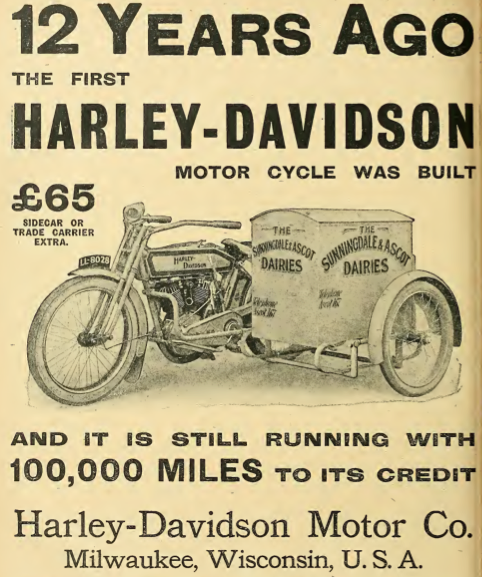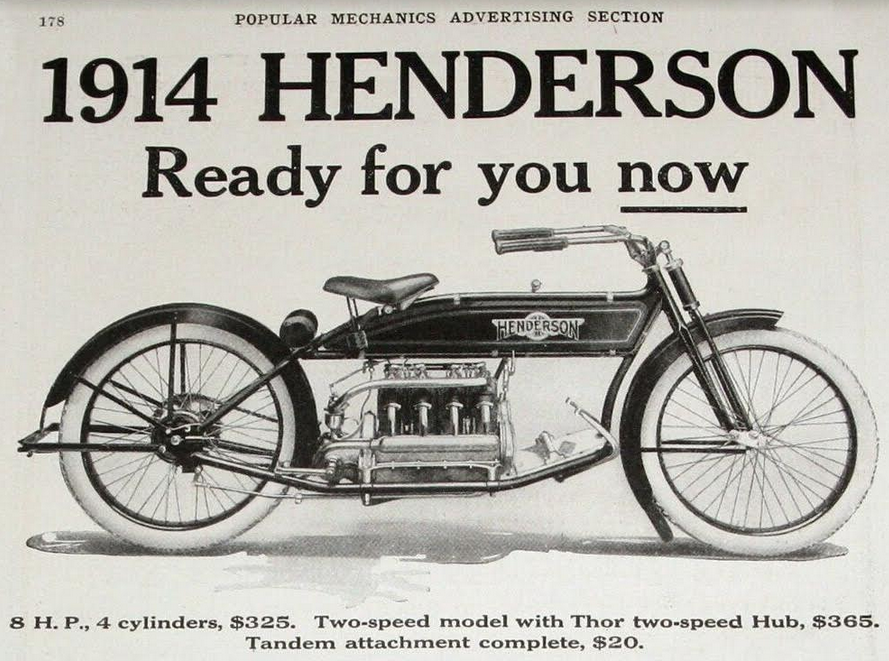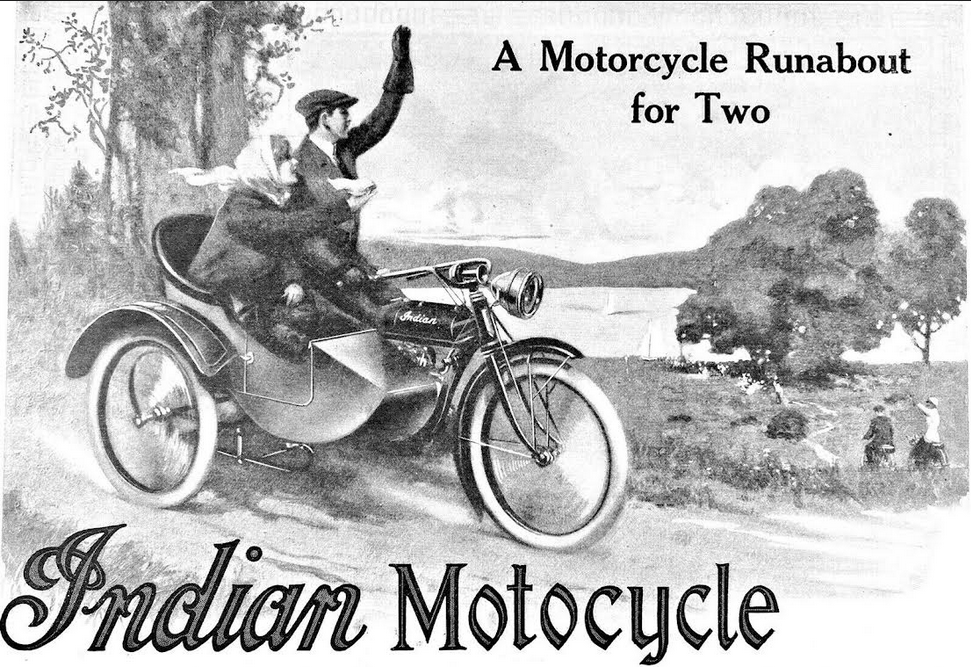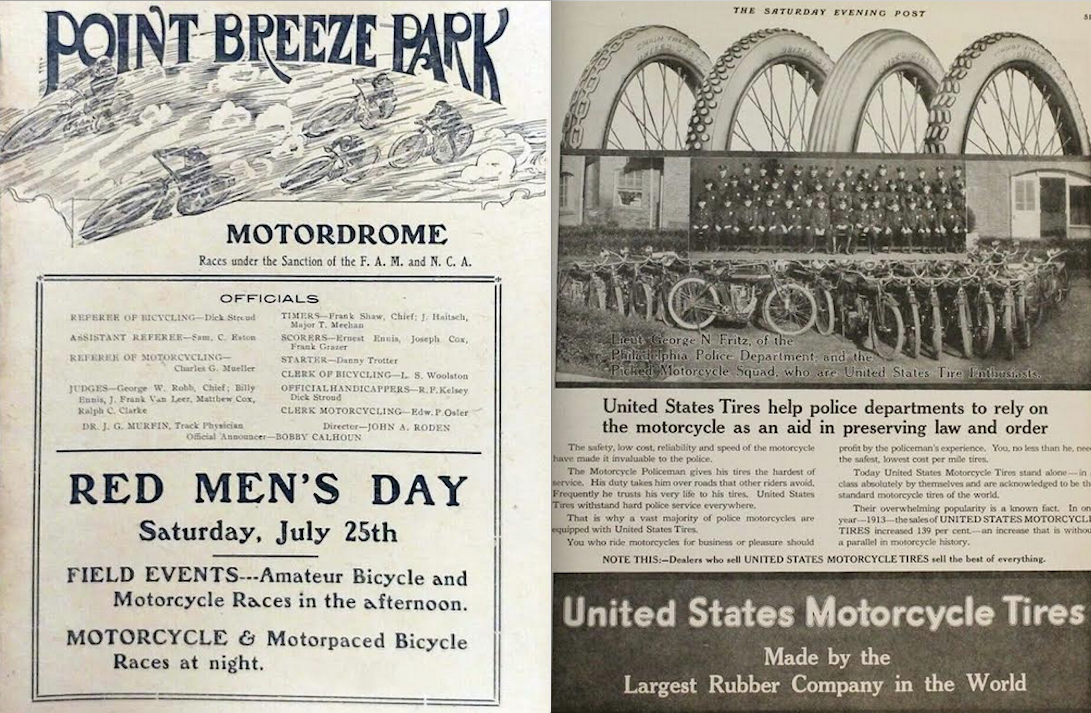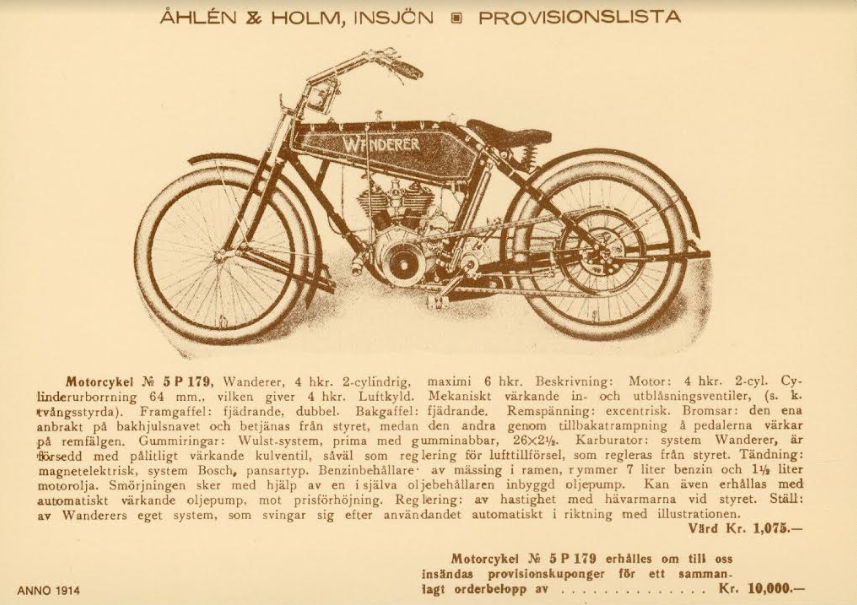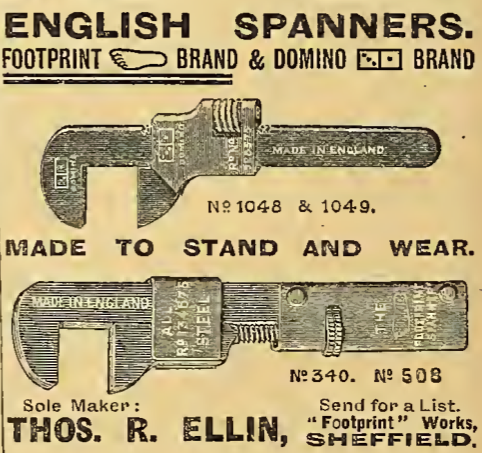WITH 123,678 MOTOR CYCLES registered in Britain and exports of almost 21,000 the new industry was flourishing. Triumph alone churned out some 4,000 singles during the year while the Blue ‘Un’s readership hit 90,000 (the Green ‘Un wasn’t far behind; clearly most enthusiasts read both). Britain, Europe and the USA were each home to about 200 motorcycle manufacturers–but the British contingent fell by one as Singer ceased production.
ELECTRIC TRAFFIC lights were installed in Cleveland, USA.
WINTER MOTOR CYCLING soon reveals drafts in clothing so raise your glasses to Swedish-born Gideon Sundback who developed the modern zip fastener. Mind you, the zip can trace its history back to the Automatic Continuous Clothing Closure which had been patented in the US by Elias Howe in 1851.

THE SCOTT TRIAL was established as a company event but would evolve into a major competition.
ACCORDING TO THE SHEFFIELD GREEN ’UN (not to be confused with the Motor Cycling Green ‘Un): “Motorcycling is said to be one the favourite summer pastimes of professional footballers.” A decade later some sporting chaps came up with a way to combine the two passions.
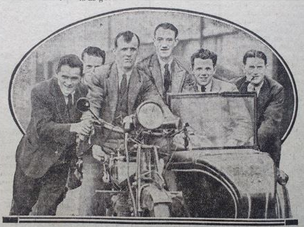
FOLLOWING A SERIES OF CRASHES in the 1913 TT culminating in the death of Frank Bateman crash helmets were made compulsory for 1914. The start line was moved to the top Bray Hill and all competitors had to complete as least six practice laps. In 1913 each race was run over two days and extended from four laps to six for the Junior and five laps to seven for the senior with the bikes secured in a parc fermee between races. The idea was to see how well the bikes stood up to a cold start after the first day’s laps, and how well they stood up to longer races while making life a little easier for the riders. However it made it impossible to compete in both races and spoiled the spectacle so for 1914 the TT was back to normal one race per day, with five laps for the Junior and six for the Senior. Instead of two fuel depots there would only be one, at Douglas, but with proper pits. The TT was coming of age, and entries rose again to a record 49 for the Junior and 111 for the Senior. The Junior was hit by heavy rain with mist on the mountain but produced a tremendous race. There were 14 marques in the Junior. The field included a dozen Douglas twins, nine Enfield twins, five NUTs and five AJSs; in all there were 34 twins and 15 one-lungers. Twins had dominated the TT—a single had never won the Junior—but there was a bit of a buzz around the new Ajays which combined a two-speed countershaft gearbox with a double primary-chain drive and dog clutch to give four speeds. At first the Enfield twins were first, third and fourth with Duggies fifth and sixth with a single AJS single second. But in the third lap the lead Enfield, ridden by Frank Walker, had a puncture. By the end of the lap there were fours singles in the first half-dozen; during the next lap the two
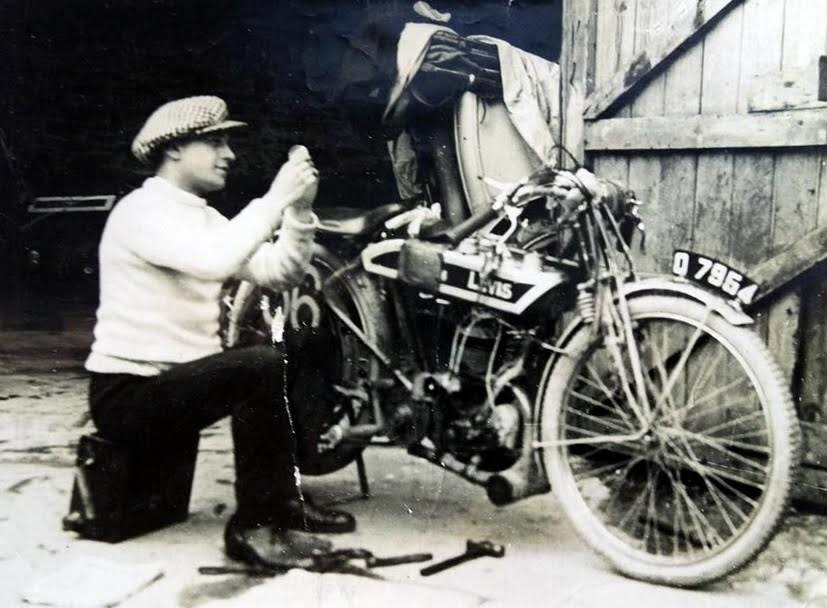
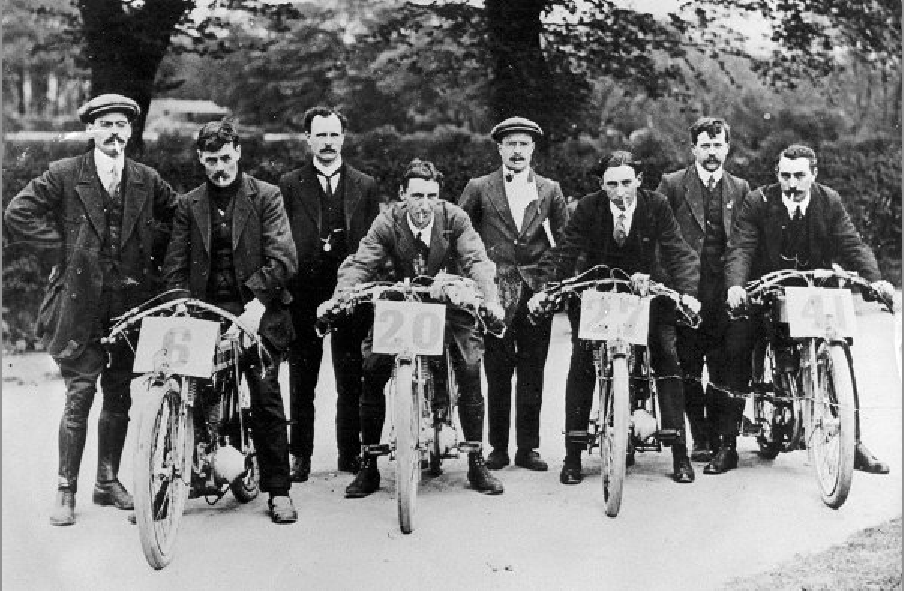
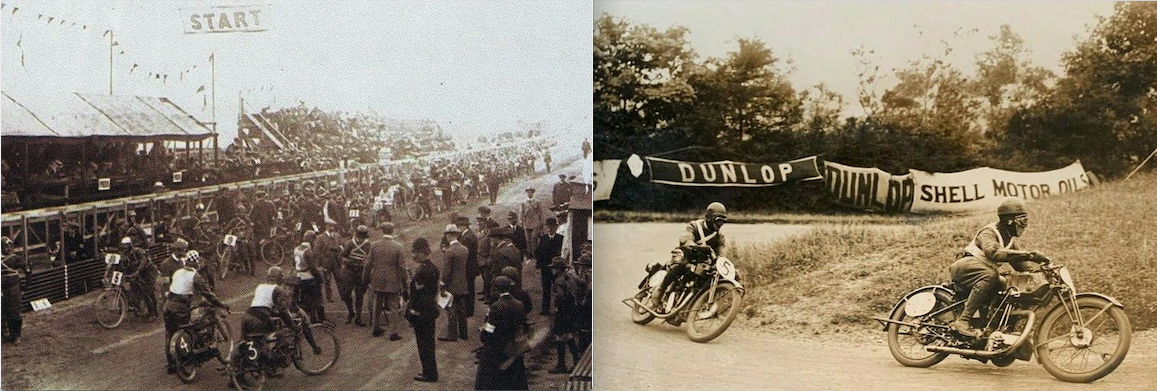
Douglases that had been running third and fourth dropped back leaving AJSs first, second and third. On the final lap WM Heaton crashed (he remounted to finish 29th) leaving Cyril Williams to cross the line first (at an average 45.6mph) followed by Cyril Williams (no relation) and, after fixing his puncture ad riding like a demon, Walker finished third on his Enfield twin—but after crossing the line Walker rode into a barrier and was killed. Fourth fifth and sixth places went to W Jones (AJS), FE Bareker (Zenith) and B Haddock (AJS). The record breaking Senior field included 35 marques, six of them foreign including 30 factory entrants (known at the time as ‘trade’ riders). After the 1911 hat-trick Indian was still on the warpath with eight riders in the Senior, matched by Indian, BSA, Triumph and Rudge (a Rudge Multi came within an ace of winning in 1913). There were six Scotts, six Zeniths and five Premiers. Ariel, James, Matchless and Premier fielded four apiece. Sunbeam was making its Manx debut, as was Sunbeam rider one HR Davies. Tim Wood’s first lap, at 53.5mph, set a Senior record for Scott to maintain its reputation on the Mountain circuit but he failed to finish thanks to a burnt out magneto. Harry Collier moved into the lead on his Matchless but then crashed, while his brother Charlie slowed with hub gear problems—two more previous TT winners out of the running. In the event Cyril Pullin won the
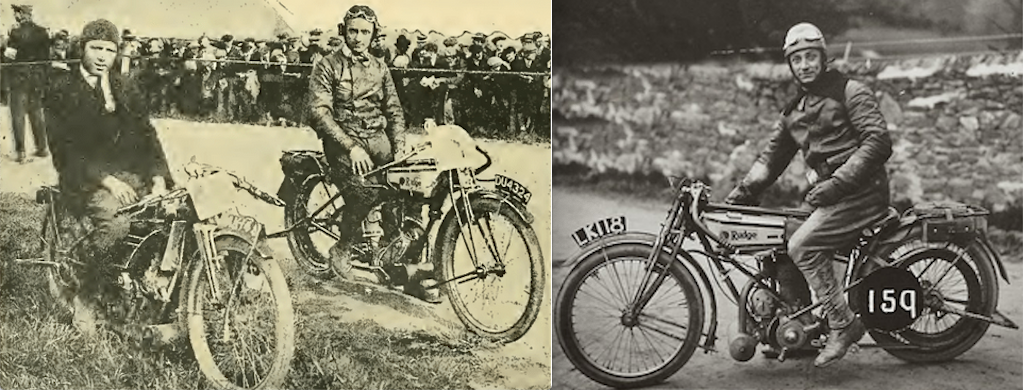
Senior, giving Rudge the win that had slipped from its grasp the previous year. Second place, remarkably, was tied between the formidable Oliver Godrey on the equally formidable Indian, and, to everyone’s surprise, the new Sunbeam ridden by HR Davies. That left HV Colver (Matchless) fourth, ahead of GG Boynton (Triumph) and JL Emerson (ABC). It had been an eventful raise but afterwards Pullin remarked: “No, I had no trouble whatever. I just sat on the machine, and the engine and multi gear did the rest. I never knew where I was in the race, and I was never passed, excepting at the depot. The wind was tremendous. I attribute my success to the wonderful powers of the multi gear.” The Motor Cycle was impressed: “We have never in any race, and very seldom on the road, seen a machine in such a spotless condition. There was literally not a speck of oil on the crankcase, whilst the belt was in perfect condition. The undrilled top
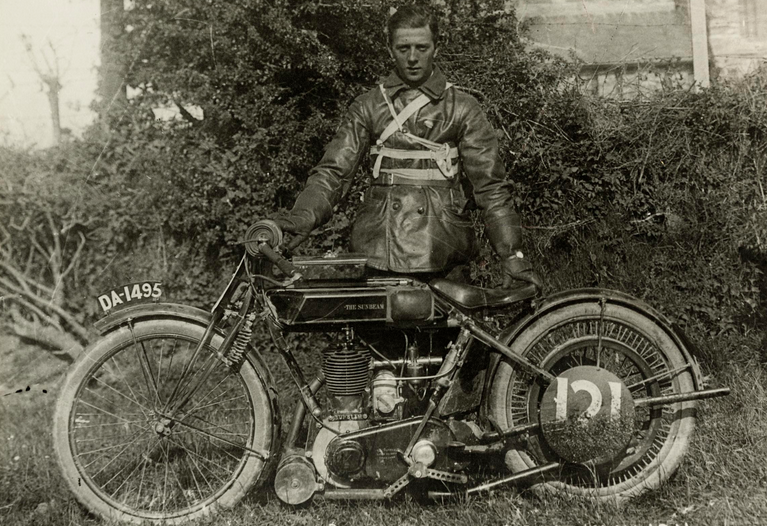
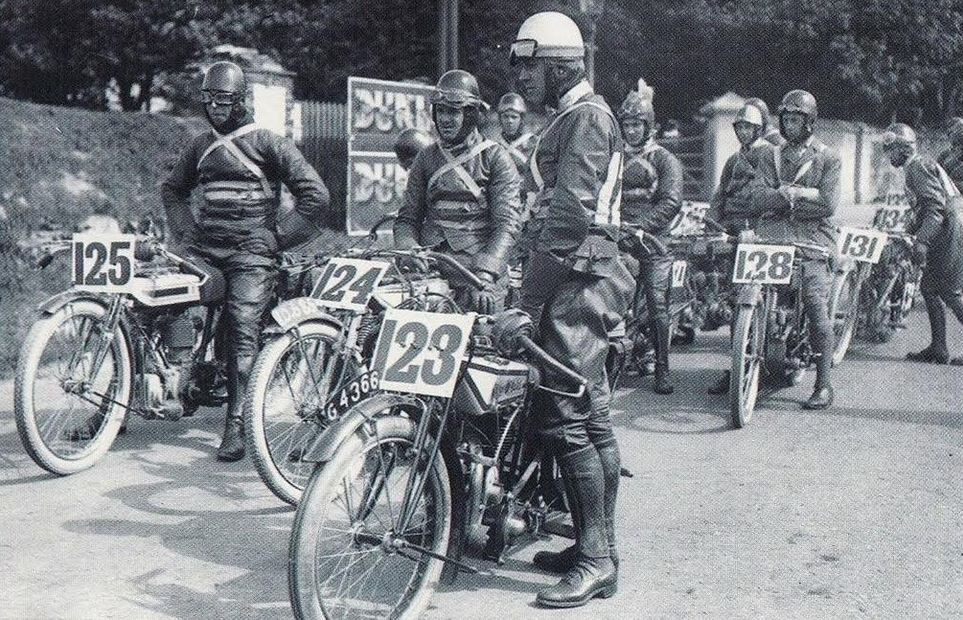
ringed piston had just a nice film of oil on its head, and really astonished [ACU scrutineers] Major Lloyd and Professor Sharpe by its fine condition. Years later Davies recalled: “I was intentionally taking it easy to start with. For one thing, Sunbeams, being newcomers to the race, did not think they had much of a chance of pulling off the Trophy—what they were keenest on was winning the team prize. I was therefore riding under instructions not to take risks. In addition, I had a bit of trouble during practising and had had to fit a new piston just before the race. As I had no time to run it in, I obviously had to take things fairly easy at first—and even so it dried up two or three times. I was running twelfth at half distance and the model then seemed to get a bit freer. I opened up a bit and drew into tenth place at the end of the fourth lap and fifth at the end of the fifth. When I finished I was surprised to hear that I was bracketed second with OC Godfrey on his Indian.” And Sunbeam won its manufacturers’ team award.
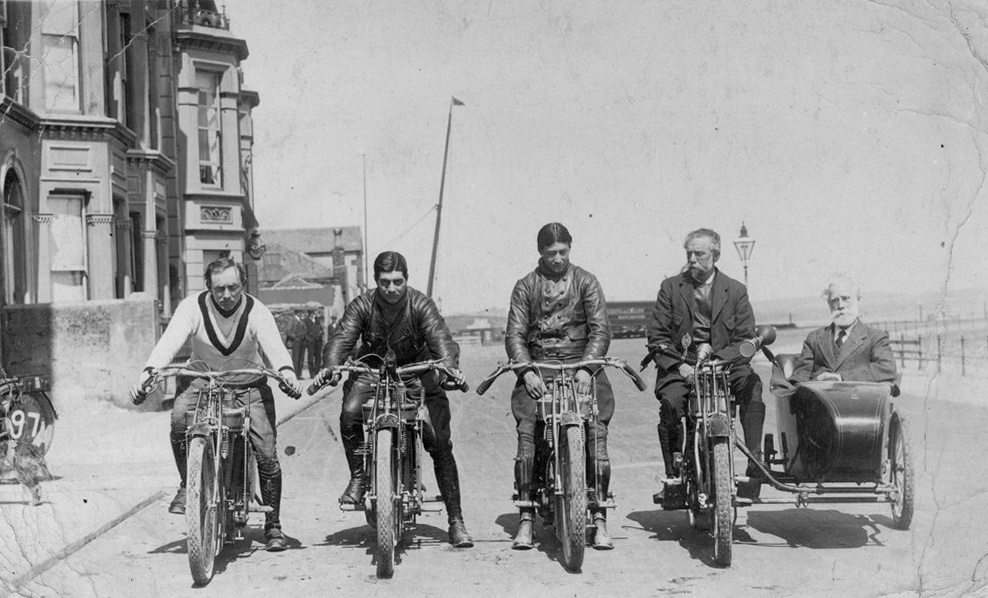
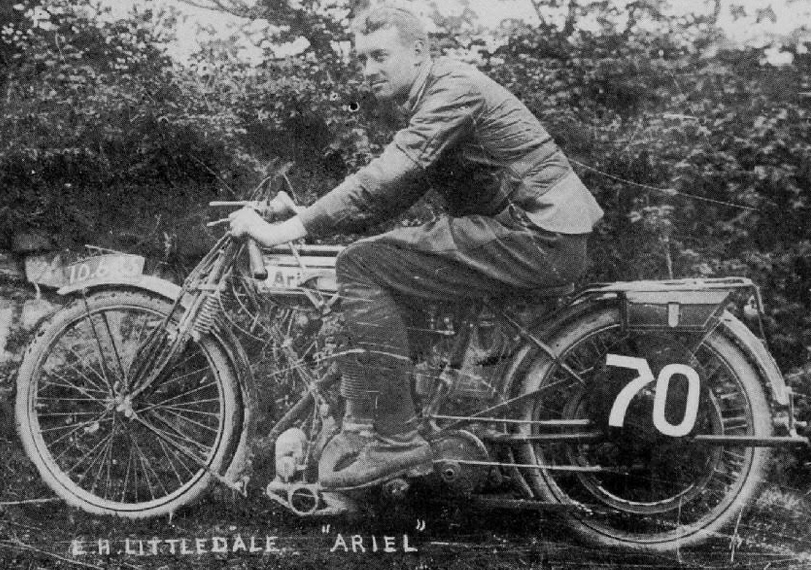
WIZARD O’DONOVAN AND his trusty Norton, Old Miracle, broke the 80mph barrier at Brooklands while setting an 81.05mph flying mile record and taking no less than 20 other 500cc solo and 750cc sidecar world speed records. In its career Old Miracle would set 112 world records.
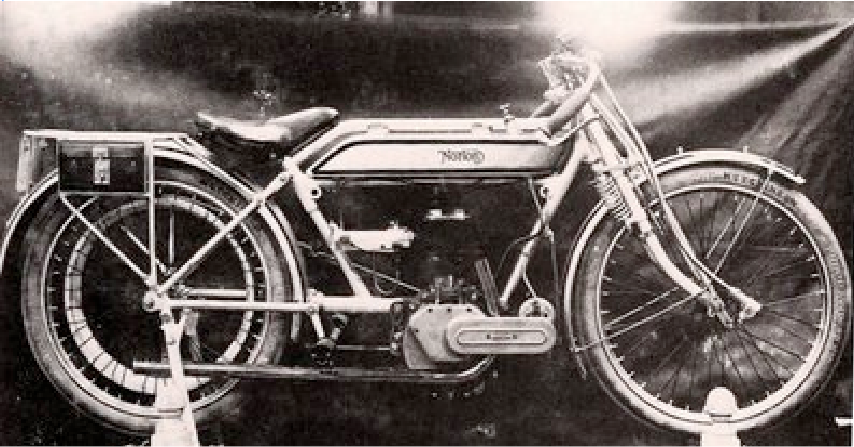
EG BAKER RODE an electric-start Indian’s Hendee Special the 3,379 miles from San Diego to New York in 11 days, 12 hours to set a transcontinental record (and earn the nickname ‘Cannonball’). The batteries took several hours to recharge, the charging system wasn’t powerful enough at low revs/speed and with no kickstart as backup the system wasn’t up to repeated stop-start work. These teething troubles could have been sorted out by what was, after all, the world’s biggest motorcycle manufacturer (100,000 bikes built since 1907). But only a few hundred were made before Indian dropped the idea and electric starters wouldn’t come into common use for more than 50 years. Meanwhile Indian raised the world record to 93.5mph.
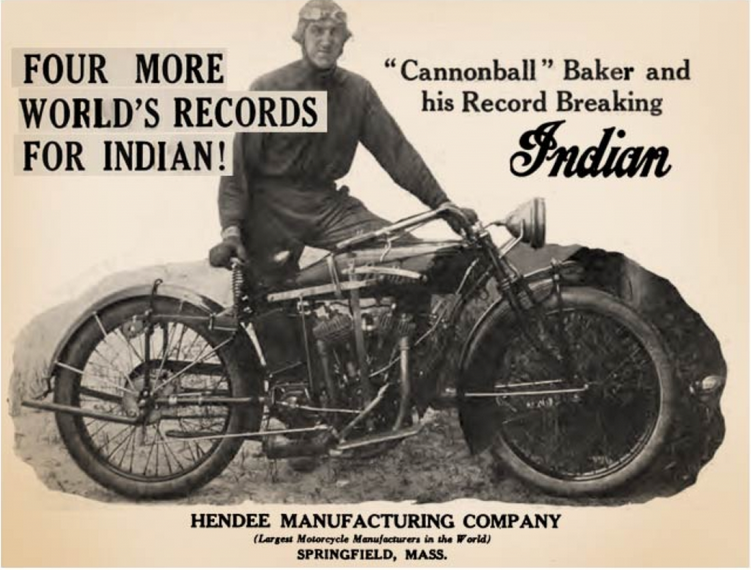
GERMAN IMMIGRANT MARGARET GAST made her name in the USA as a long distance cyclist (in 1900 she had beaten the men’s 2,000-mile record) but by 1914 she was riding a Flying Merkel in the most dangerous arena of them all. Interviewed by the Sunday New Yorker in 1949 she recalled: “”My hardest life was the eight years when I was doing motordrome work. I was carried away in ambulances several times. My worst accident was in Palm Beach. They carried me out as gone…I don’t know why I stayed in motordrome work so long. Year after year after year I wanted to quit. I saw some of the other rider killed, some of them crippled, some of them burned to death. I knew my time was limited, but they kept saying, ‘Keep on. Keep on.’ Finally I got yellow. I felt like quitting and I quit”.

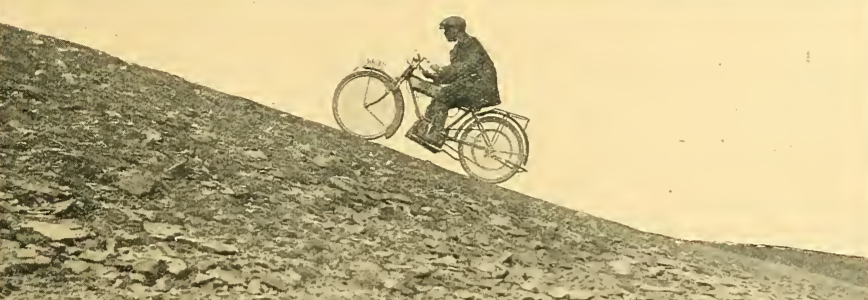
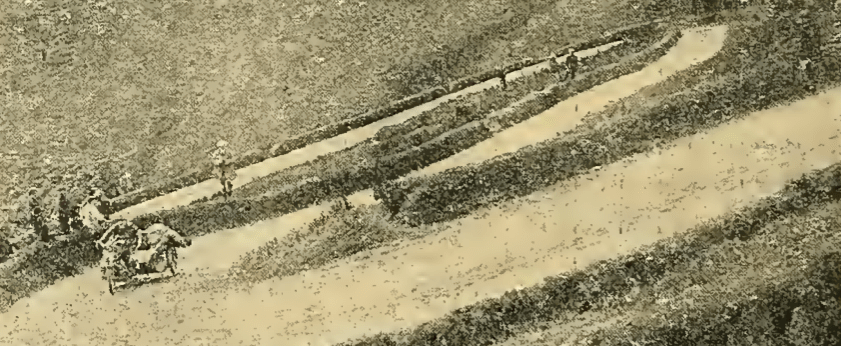
THE NORTH-WESTERN AUTOMOBILE Association hosted a reliability trial between Lancaster and Preston which attrated 22 four-bike teams. The Chester MCC won (aggregate error of 14min 3sec), followed by the Rochdale MCC B-team (32min 47sec) and Preston B-team (68min 2sec).

FROM THE BLUE ‘UN: Several readers have drawn our attention to what is apparently an error in our leaderette of last week, in which we made use of the expression “Rule the Roast”. Of course, the more common quotation is “Rule the Roost”, but this is really a corruption of the original, and possibly readers may be interested to know that the origin of the quotation “Rules the Roste” belong to John Skelton, in his lines to Colin Clout, towards the close of the fifteenth century. Later on, however, Shakespeare, in his play King Henry VI, refers to “Suffolk, the new made Duke that rules the roast”. The same spelling is adopted by Sir Philip Sidney, Thomas Heywood, and Edward Hall. It would appear that there is no authenticity of the term “Rule the Roost”. Dr EC Brewer, in his Dictionary of Phrase and Fable, says: “It is usually thought that ‘Roast’ in this phrase means ‘roost’, and that the reference is to a cock, who decides which hen is to roost nearest to him; but the subjoined quotation favours the idea of a council, ‘John, Duke of Burgundy, rules the roast, and governed both King Charles…and his whole realme.’.”

“ITALIAN INVENTOR, S BARATELLI, of Milan, has produced a curious double trailer, which appears very like a double sidecar. The illustrations show clearly how the two trailers are flexibly coupled up by two parallel wooden luggage grids and sprung by two C springs carried on a two-wheeled axle, and are attached to the head of a motor cycle by means of a universal joint. This allows considerable movement to the trailers. The inventor states that the combination can take corners without the slightest fear of upsetting either when fully loaded, one only occupied or both empty, and that every ounce of motor power is used for hauling the trailers, and practically no strain is imposed on the motor cycle frame. Another interesting feature of these trailers is that they can be used as a canoe if removed from the chassis, as they float admirably. The invention is known as the Sulky trailer, and weighs about 150lb.”
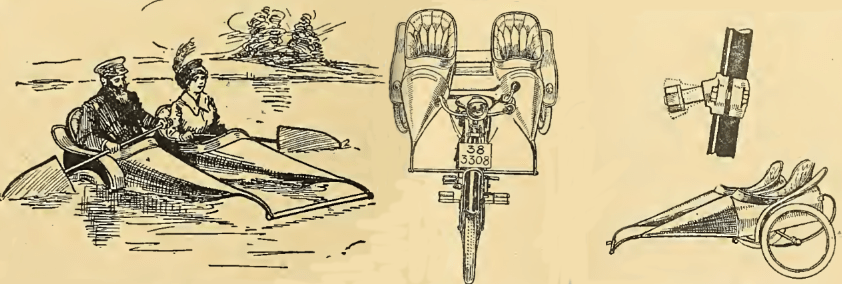
AN ARIEL WON THE 1,500-mile Tour of Italy, ahead of a Frera and a Borgo; a two-stroke Levis won the 250cc class in a major French race at L’Eure with a TT Matchless winning the 500cc class and a Clyno winning the 750cc sidecar class. And a Beeza snatched a 500cc victory at Fontainbleu. But the new Italian marque Della Ferrera dominated the 500cc class in domestic races including the Italian TT; it also won the 350cc class in the Italian GP (a Motosacoche took 500cc honours).
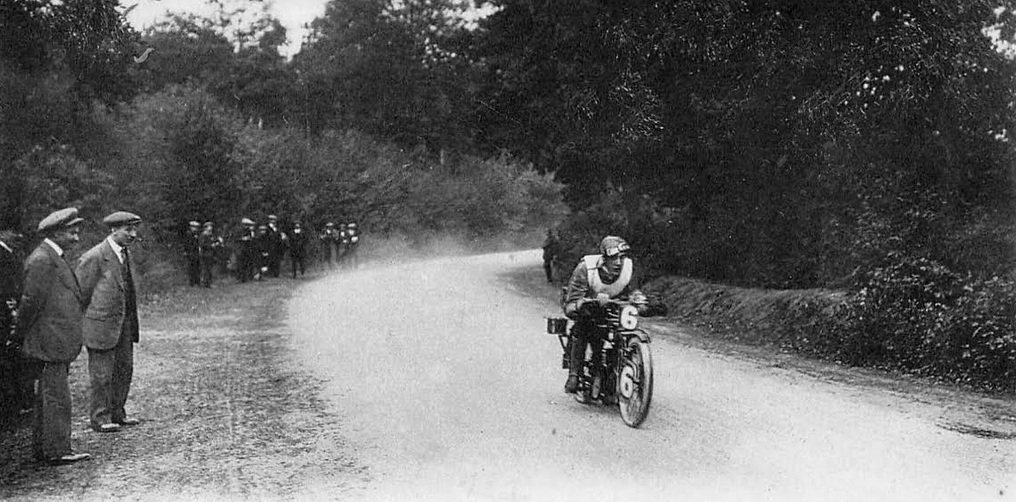
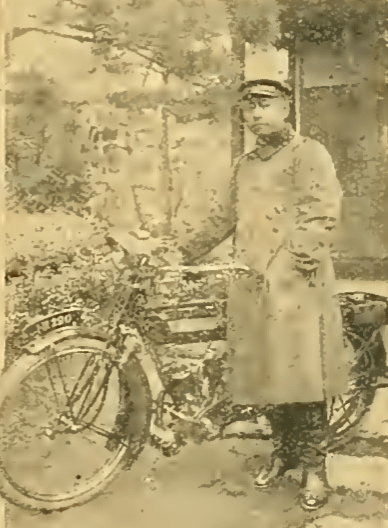
THE POST OFFICE bought 20 outfits (10 New Hudsons, six Douglases and four Rovers) to replaces horses on rural routes.
IN THE US JAMES HOGE patented a “municipal traffic control system” using electrically lit red and green STOP and MOVE signs on posts at each corner of a junction, wired to a manually operated switch inside a control booth. The first example was installed at the crossing of East 105th Street and Euclid Avenue, Cleveland, Ohio. A buzzer warned when the color was about to change.
“THE FONTAINEBLEAU CIRCUIT. In broiling weather this race was run off over varying distances for the different classes on the 28th ult. Motor cycles and sidecars from 250cc to 1,000cc competed, and in the 500cc class, run over 450km, AG Fenn, riding a 3½hp BSA, proved an easy winner in 6hr 6min 42sec. The other classes resulted as follows: 250cc solo, 360km, Klein (Terrot); 350cc class, 450km, Vulliamy (Alcyon); 500cc class (sidecars), 360km, Lombard (Gladiator); 750cc class (sidecars), 360km, Meuriot (Rene-Gillett); 1,000cc class (sidecars), Allenay (Indian). There were many special prizes, the Grand Prix de France for sidecars being won bv the Motosacoche team.”
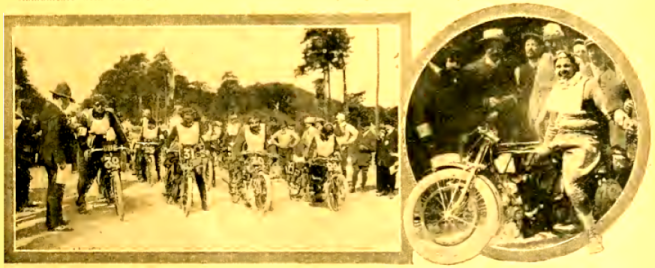
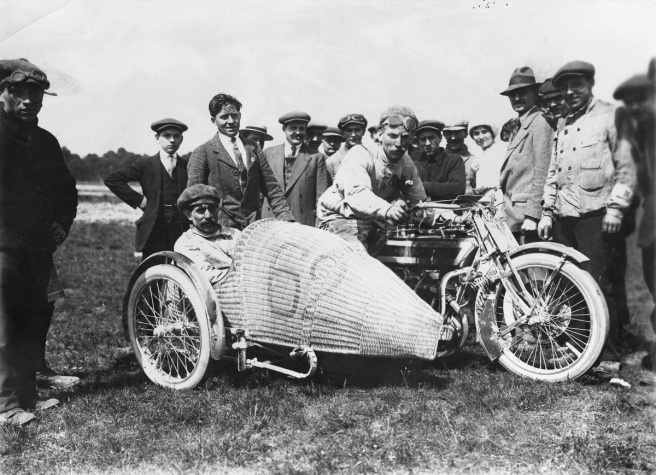
PEUGEOT’S NEW DOHC 500 TWIN, ridden by Paul Péan, set a flying kilometre record of 76.1mph and was a favourite to win the French Grand Prix at Le Mans. This promised a showdown between the Brits and the Continentals. Matchless, Rudge, BSA, Scott, ABC, Blackburne, Douglas, Triumph, Rover, NUT and Calthorpe were to take on Griffon, Rene-Gillet, Magnat Debon, Peugeot, Terrot, Clement and Gladiator. However the AA warned British riders touring on the Continent that their bikes might be comandeered and, on 2 August, the German army marched into Belgium. [On 9 July the Blue ‘Un had announced: “Several motor cyclists are required by the War Office to act as despatch riders on 28th July to 8th August next, and also on 3rd August to 8th August. Any riders desirous of serving in this capacity should communicate direct with the Secretary of the Auto-Cycle Union, 83, Pall Mall, London, SW.”]
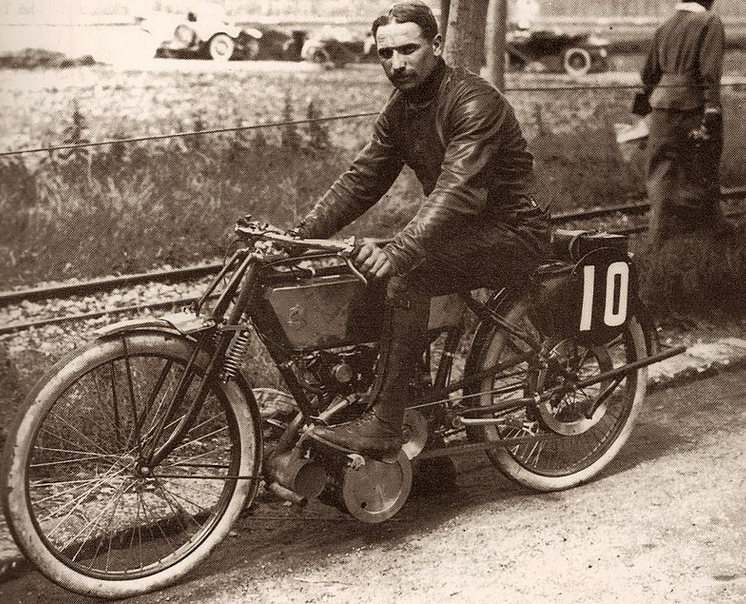
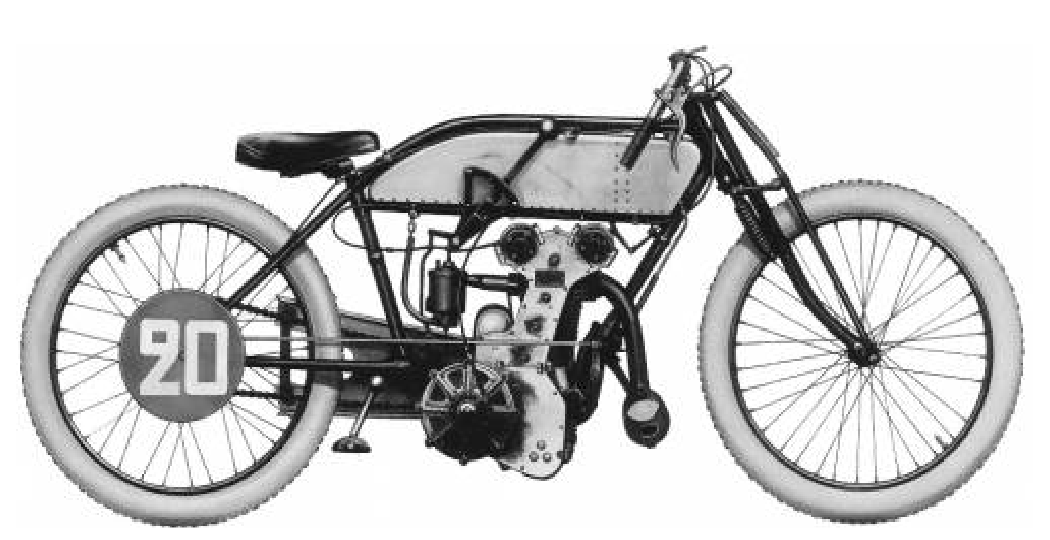
MILITARY ALLIANCES TURNED a regional crisis into a world war. The Boche went about their business on NSUs, Brennabors, 600cc V-twin Wanderers with sprung frames and forks and, ironically, the German offshoot of Triumph. French poilus were issued with Peugeots, Rene-Gillets and Terrots as well as British bikes, notably Sunbeams. Austrian-Hungarian squaddies rode 6hp flat-twin Puchs. The Italians had Bianchi solos and 1,140cc Frera combos; Russia bought British in a big way (doubtless impressed by the British engineering that had helped the Japanese navy obliterate their fleet at Tsushima nine years earlier).
AFTER SEVERAL YEARS OF successful bicycle production the Japanese company Miyata moved into motor cycling. Their Asahi bicycles were based on British Clevelands; their Asahi motor cycle was based on a 3½hp Triumph imported as a pattern. The Tokyo police acquired one for evaluation.
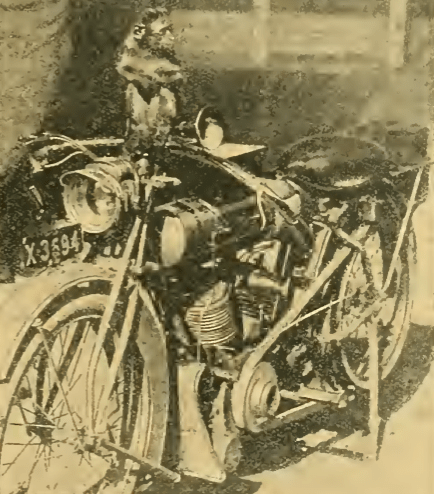
PRESS PUNDITS’ predictions of troops on motorcycles winning their spurs in a fast moving mechanised war encouraged thousands of young enthusiasts to enlist, encouraged by recruitment campaigns in the Blue ’Un and the Green ’Un.
EDMUND DANGERFIELD’S museum was taken over by the army as a training centre; many of its exhibits were lost or simply left to rot.
AN ABC RIDDEN BY JL Emerson averaged 80.47mph over the flying kilometre; the first British 500 to officially exceed 80mph. Designer Granville Bradshaw later recalled that “it was recognised practice for a rider to beat the record by the narrowest possible margin. He and his opponent worked together, both realising that if any of them pushed the record up too high it would take months for any of them to earn another bonus. All the enthusiasm in the world will not pay the landlady…”
“DEAR SIRS,—THE ACCOMPANTING PHOTOGRAPH may be of interest as showing yet another use for the ubiquitous sidecar. I run an out-apiary situated five miles from my residence, and it is occasionally necessary to move some of the bees. Formerly, this operation used to give me considerable trouble, as the frames of comb had to be secured against breakage by jolting when the hives were transported by cart. Last year, however, I bought a spring frame Montgomery sidecar, and by taking off the body and C springs I can substitute a light wooden platform, as shown. With such an arrangement no special precautions are necessary, and the combs, etc, can be moved at the legal limit with perfect safety. Surely this is a record in passenger carrying—100,000 up.
John Warnock.”
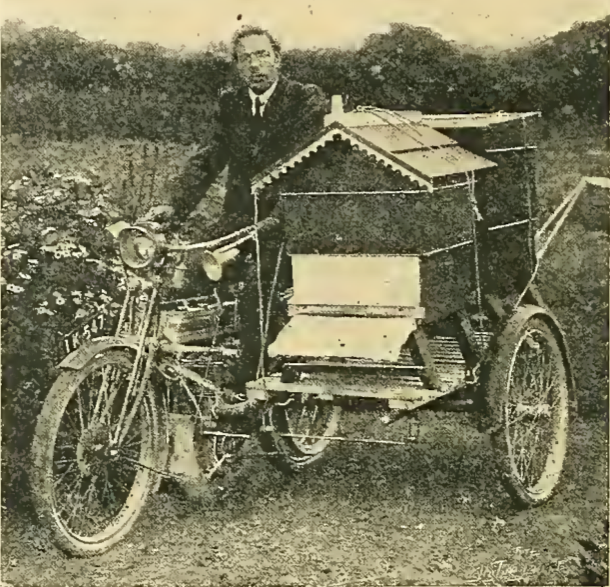
“WANTED—AN RSPCE: As we passed through Cheltenham during the past week-end we noticed an extraordinary vehicle being propelled along the road by an Auto Wheel. It consisted of a cycle and sidecar carrying three children besides two adults. We take it that the owner is content with strictly moderate speeds, but though the performance speaks volumes for the Auto Wheel, a society should certainly be formed for the prevention of cruelty to engines…Many sidecars have been built in more or less boat shape, but one which has been seen recently is made on exact boat lines. It has been built by Mr Sidwell, the designer of the Excelsior engine, and is all his own handiwork. Bent wood ribs are made on properly developed lines, and the usual overlapping planking is used. A neat locker in the aft bulkhead is fitted, and a storm apron and screen are to be employed later. A searchlight and lifebuoy complete the equipment. The weight complete with cushions comes out at 32lb.”
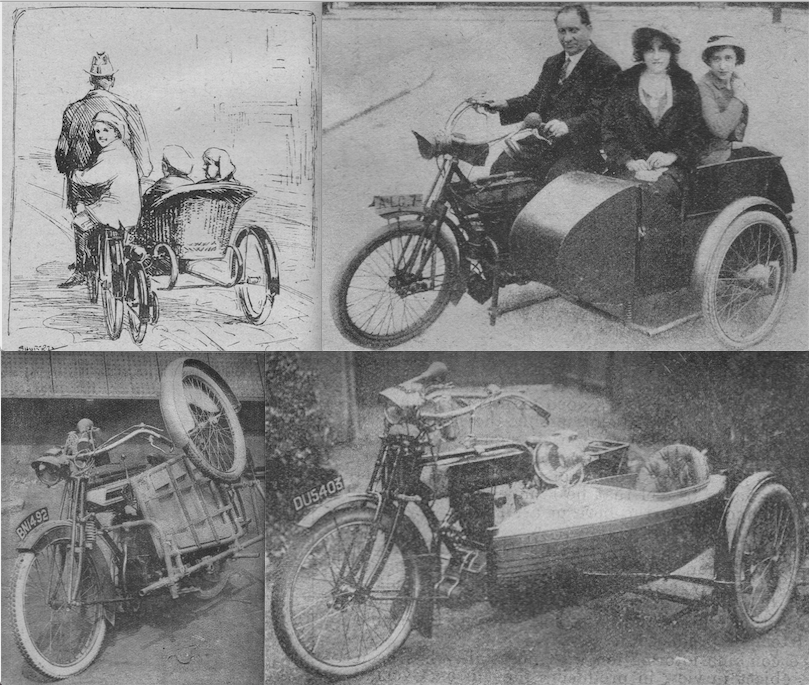
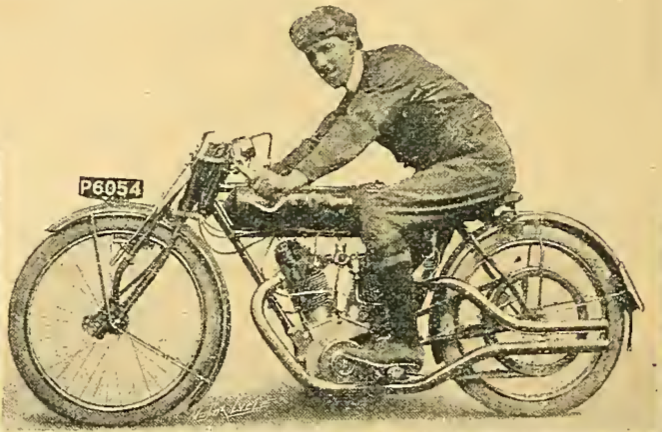
“THE CAPABILITIES OF THE JUNIOR TRIUMPH: [Four months ago] we took delivery of a two-stroke Triumph, since when we have had no cause to regret our choice, as the only troubles up to the present have been of quite minor importance, such as chains getting out of adjustment and slight carbonisation. The machine has now quite a long mileage to its credit, including several open reliability trials, but more particularly made up of short daily runs between home and the office. Sunrising Hill comes well within the range of the Triumph, as do most main-road gradients. The two-speed gear box on the counter-shaft (giving ratios of 5¼ and 8¾ to 1) has always worked admirably, and the Bowden wire gear control from a lever on the handle-bars has needed no adjustment. Entirely enclosed magneto and transmission chains might be an advantage. The chains, which are protected only by dust covers, run at engine speed, and any grease is soon thrown off. Dismantling the engine is simplicity itself, and the cylinder may be removed in a matter of minutes. All the controls, with the exception of the heel brake acting on the rear belt rim, are situated on the handle-bars, making the machine very easy to handle. Especially is this noticeable in traffic, when the low gear may be engaged and one is able to crawl along at a mere snail’s pace with the engine slowly ticking over. On the other hand, with top gear in operation, a speed in the neighbourhood of the ‘forties’ can be attained. Starting up may be done by standing across the machine and paddling off, whEn the engine will fire in a few revolutions. The Triumph is very light on tyres and belts, the former being still in excellent condition, and the latter having been shortened for the first time a week ago. For best results a pure mineral oil should be used, and not compound oils, as the latter are liable to split up and cause carbon deposit. In the case of one brand of oil sent us for trial the float needle developed the troublesome habit of gumming. The petrol consumption on an average is about 95mpg, and one of the greatest virtues of the little machine is that it ‘two-strokes’ regularly, even at slow speeds. The weight is approximately 130lb. “
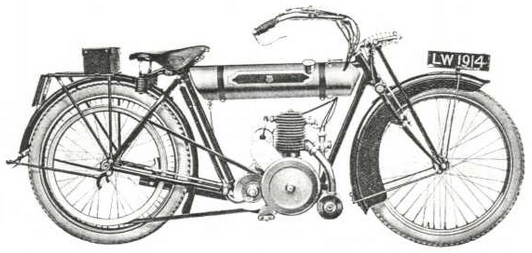
AN ENGINEER NAMED HH WARDLE chipped the iron fins off a Triumph cylinder and cast a finned aluminium sleeve round it. “The cooling effect of the aluminium jacket was so pronounced that, when running along the road, it was easily possible to hold one’s hand on the fins. He proved, too, the remarkable economy effected in the use of lubricating oil, one-third the amount formerly used being found sufficient. Com-pression was maintained indefinitely, the valves and their seatings keeping in good condition and hardly ever requiring attention. Another significant fact was that, when the cylinder was dismounted for the removal of carbon, the deposit was found to be wet as in the case of water-cooled engines and easily removable.” Aircraft engines were making good use of aluminium so it seemed motor cycles were about to do likewise. Wardle took out a provisional patent which he offered to one motor cycle manufacturer after another. But they weren’t interested; Wardle discovered that a similar patent had been granted back in 1898 so he let his provisional patent lapse—and then the Great war gave him other things to think about (he became a petty officer in the Royal Naval Air Service). And motor cyclists had to wait the best part of half a century for aluminium heads and barrels to become ubiquitous.
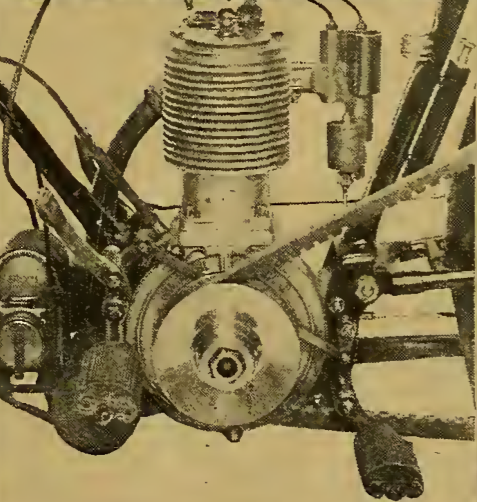
MOTOR CYCLES WERE EVOLVING SO rapidly that when the Streatham &DMCC staged a London-Brighton reliability trial for machines at least 10 years old they called it the Old Crocks Trial. The man from Motor Cycling was clearly impressed: “If any sporting individual at the start of the Old Crocks Trial had offered to wager that a round dozen of the old machines would return under their own power, the majority of the onlookers, had they been betting men, would have showered their money on the enterprising bookmaker. It seemed absolutely impossible that these resuscitated scrap heaps of old iron could possibly carry their riders even so far as Brighton, let alone back again. It is wonderful to note, therefore, that no fewer than 29 riders gained premier awards, two qualifying for bronze medals, and but one or
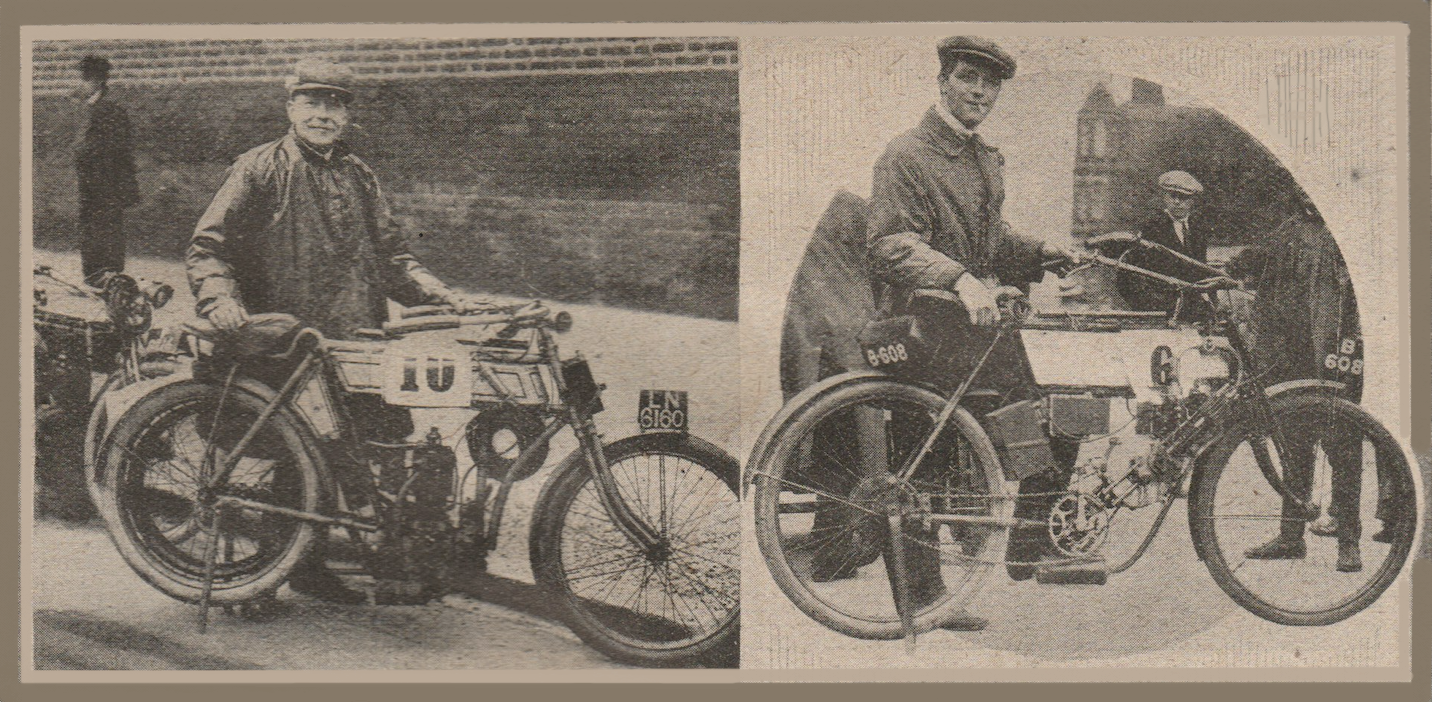
two retiring from various causes. This is indeed a remarkable record, and makes one seriously consider the possibilities of, say, a 1914 machine doing so well in 1924. A particularly interesting machine was WP Tippett’s 3½hp Humber. This chain-driven veteran of 1904 manufacture was provided with a leather-to-metal cone clutch and handle starting; moreover, the engine could be started up first pull every time. Near by at the start of the trial was an up-to-date 120 guinea sidecar outfit. The driver wished to start off. We noticed that he injected the best part of a gill of petrol into each cylinder, and then proceeded to lash out at his kick-starter like an infuriated mule. Eventually, after a dreary crescendo of kicks, during which the driver’s leg disappeared to the eye in the same manner as an aeroplane propeller disappears, his engine started off with a roar. Tippett, alongside, gave one pull up, his engine just chunking over—what progress in 10 years! On several of the Humber machines that were in evidence we noticed a most interesting little clutch fitting. This was a small handle which, when screwed up, gradually disengaged the cone clutch. Within certain limits, therefore, the clutch could be made to perform the purpose of a variable gear. We thought how handy this fitting would be to the modern trials rider who is called upon the crawl at about one mile an hour in the flexibility test. This little attachment could be screwed up so that the clutch was just gripping, but no more. With the engine throttled down to the minimum the machine could be driven at about a centimetre an hour. Turning to the faults, it is rather difficult to place

one’s finger on the worst one. The painfully inadequate inlet and exhaust piping is very evident o the 11 year old P&M, driven by Mr EV Walters. In the illustration the thread-like nature of the exhaust pipe can clearly be seen. And this, combined with constricted exhaust pots and unscientific exhaust pipe timing, undoubtedly caused those early machines to attain successfully the heat of a blast furnace. It was also very amusing to note the agonized expressions on the faces of the majority of the drivers when travelling over the bumpy roads. Conversation with the competitors was impossible, but we heard ‘Ohs’ and ‘Ahs’ as they dropped down into specially deep potholes. The terrific vibration prevented the driver of one of the most interesting machines, an 1895 5hp four-cylinder Holden, from starting. This ancient machine, though in actual running order, is provided with solid rubber tyres, and except over dead smooth roads in practically unrideable. Nevertheless, when one surveys these mounts one cannot help smiling when the words ‘finality of design’ are applied to the modern machine, for one realizes that design has to travel a very, very long way yet when one of the 10-year-olds is compared with the 1914 product.”
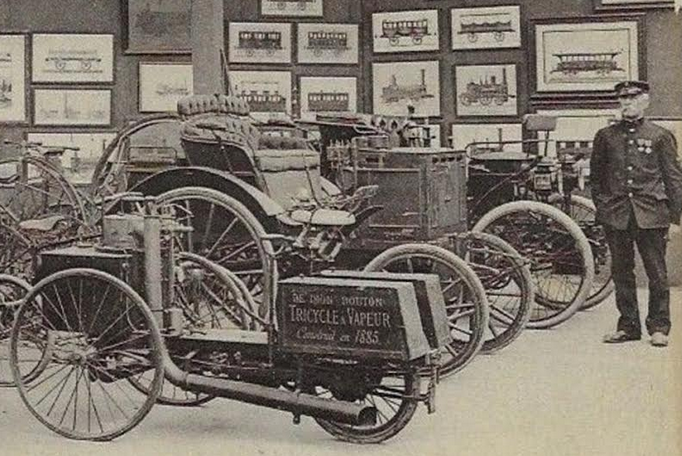
“2,000 MILES ON A CLYNO: [six months ago] one of our staff took delivery of one of the first batch of 2½hp two-stroke Clynos. The machine arrived complete in every detail, with lamp, horn, and Lea reflex rear light. From the very beginning it would run smoothly and well, and the power greatly improved as the moving parts ran in. The machine scales 152lb ready for the road, and it would be hard to find a more controllable machine to handle in traffic. The two-speed gear is simple and silent, and the handle-bar controlled clutch appears capable of being slipped indefinitely, added to which the engine will two-stroke quite slowly. The two-stroke Clyno is-by no means a toy, for it will average 25mph over long distances; the machine in question has climbed all the well-known Cotswold hills which have been attempted, including Rising Sun and Portway hills, with ease, and will restart on the clutch on the worst pitch of Sunrising and at once pick up to a good speed on the grade. The petrol consumption with a
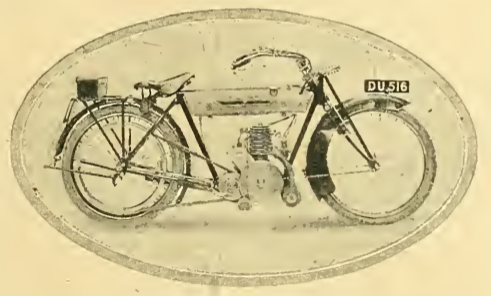
Senspray carburetter and No28 jet is approximately 100mpg under fair conditions, and the oil consumption is particularly low. The belt runs over a 6in front pulley, and consequently wear in this part is negligible, added to which, the clutch shield helps to protect the belt from mud and water, and thus prevents slip to a large degree. After about 2,000 miles of hard work the motor is in excellent condition, and shows no signs of undue wear in any part; the running is so smooth that nothing has worked loose, and the machine has proved most satisfactory in every respect. As regards carbonisation, extraordinarily little deposit takes place on the cylinder head or piston, the worst point being the back of the deflector, which can be scraped by removing the transfer port cover and without detaching the cylinder. Like most small two-strokes, however, the under side of the piston carbonises fairly thickly, but this point has very little effect on the running of the engine. The removal of the cylinder is only a matter of a few minutes.”
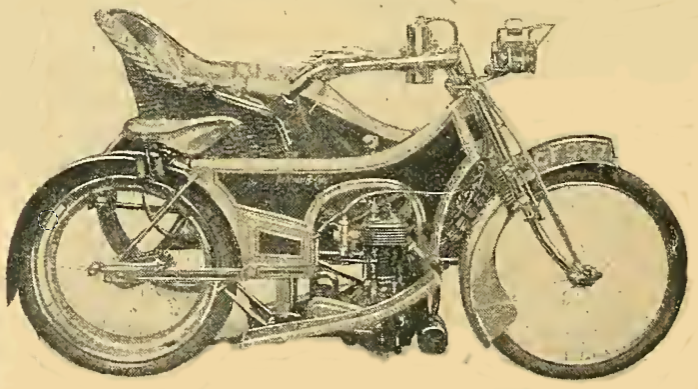
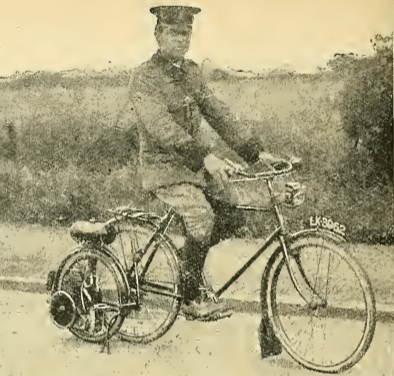
“THE MOTOR CYCLISTS’ camp at West Howe, near Bournemouth is proving a great success, and it has been suggested that other camps of a similar nature should be formed in other parts of the country. We hear that a rally will shortly take place at this camp with the idea of forming a club for lady motor cyclists with the camp as headquarters.”
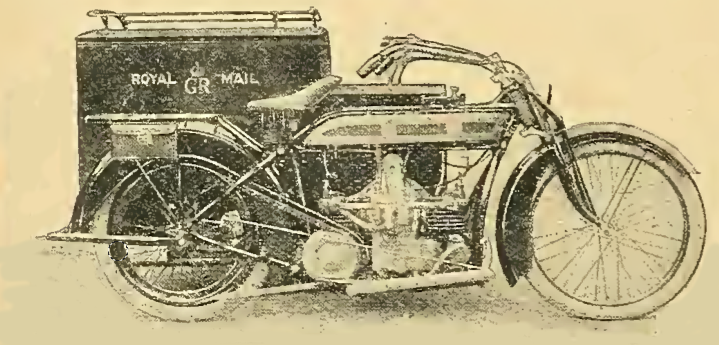
A FEATURE HEADED ‘A Wet Afternoon in My Garage’ by ‘Road Rider’ concerned his efforts to rummage through “a large box containing about twenty assorted sparking plugs, the relics of four or five seasons”. Hardly noteworthy but this excerpt deserves to be preserved because, well judge it for yourself: “I never learnt so much about plugs in my life. The spark varied from the minus quantity to a wee flicker across the points, and from internal illuminations of the cup-shaped hollow in the plug-end to a huge ‘treesome’ conflagration resembling a small explosion across the electrodes: ‘treesome’ is better than “bushy, don’t you think? [‘Treesome’ is certainly good. It reminds us of a certain artless bandar, which danced upon a pine, and was described by Mr Rudyard Kipling as ‘a gleesome, fleasome thou’.—Ed.]”
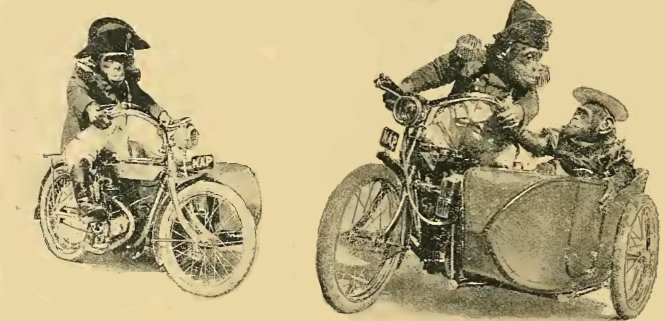
“IN THE NEAR FUTURE WE OPINE that the use of electric lighting will be considerably extended. This movement has not suddenly come about; it has arrived very gradually… Acetylene lamp makers must look to their laurels or fall in line with popular demands. We do not suggest by this that the acetylene lamp will be displaced in the near future, Because we realise that the low cost and other advantages possessed by the acetylene lamp must cause it to be some considerable time before it is ousted from public favour. The beauty of electric light, of course, is that there is an entire absence of flicker, and one has an illuminant which can be turned off and on at will without stopping or getting out of the saddle.”
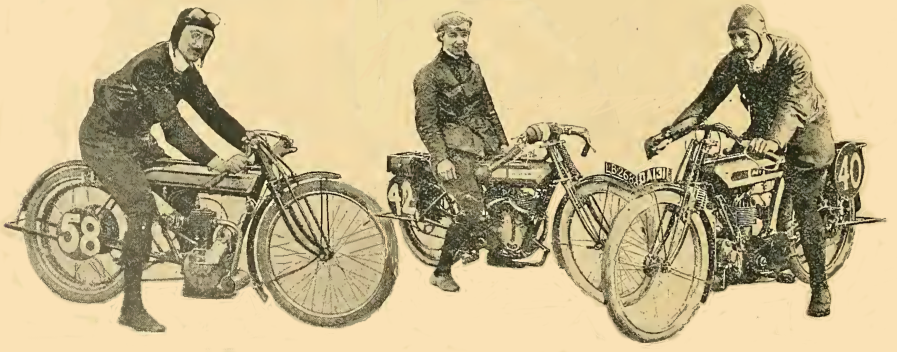
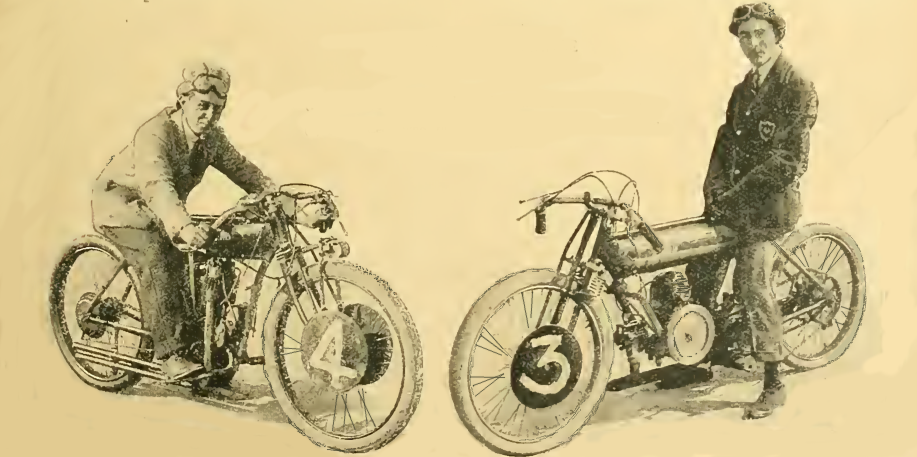
RIDERS WORRIED ABOUT overheated air-cooled engines could buy Koolah cooling fins: “A series of aluminium plates of peculiar studded form are connected into a continuous heat dissipating chain by hooks and springs. The aluminium segments have tongues of the same material riveted to them, and are pressed firmly between the ribs…Three rings are recommended for most engines, but those which have no ribs on the head may fit a fourth.”
THE MOTOR CYCLE LISTED 55 lightweights under 300cc, 37 of them two-strokes; here’s a dozen of them…






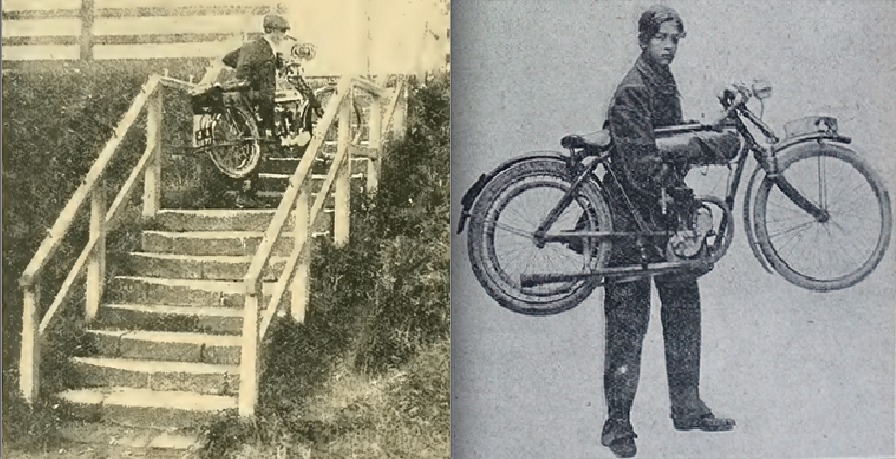
“SIGNS ARE NOT WANTING that the system of lubrication which has come to be known as ‘petroil’ is going out of favour. It would appear that the chief objection to the ‘petroil’ system of lubrication is the messy condition in which it leaves the carburetter, both interior and exterior, petrol pipe, and, in fact, everything with which the mixture comes into contact…But almost the same condition of affairs, it is found, applies to the interior of the engine, for carbon deposits form quickly—quicker even than with a four-stroke—and render the inside of the piston, the piston ring slots, and the ports partly clogged…There is also some difficulty with the mixture after a machine has been standing on a cold day, for should the oil used be only slightly too heavy, it settles on the bottom of the tank and forms one homogeneous lump which can and does cause erratic running for a time. A throttle controlled lubricator is surely ideal and perfectly automatic. It relieves the rider of all lubrication worries. From these considerations alone, it is to be hoped that some discovery may be made that will overcome the objections outlined.”
“MESSRS PHELON & MOORE have just introduced a simple system for allowing their engine to be be run on paraffin…As soon as the engine is properly warmed the paraffin tap is opened and the petrol tap closed, while a specially domed cap for reducing the compression when running on paraffin is fitted over the exhaust valve…P&M are considering the desirability of fitting it to all machines sent to tropical countries. In view of the great difference in price of the two fuels, the device is of general interest to all motor cyclists both at home and abroad.”
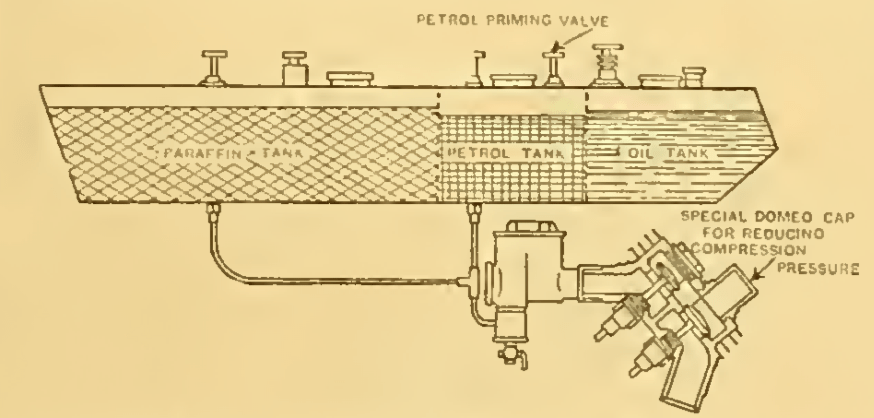
“THE EXTRAORDINARY popularity of motor cycle racing in Italy is exemplified by the holding, nearly every week, of an important road race. This invariably attracts large entries, and a considerable percentage of the competing machines are British. This has given a considerable fillip to English trade, and already proof has been afforded us by several manufacturers that considerable orders are coming in from Italy.”
“IS THERE ANY SOUND accident insurance company which issues accident policies in respect of motor cars and motor cycles to owners and riders above the ages respectively 60 and 55? I ask this question because I find that the Motor Union Insurance Co absolutely refuses to issue such policies to drivers of motor cars above the age of 60 and of motor cycles above the age of 55! No difficulty is made about issuing such policies to a motor cyclist age 16, who knows absolutely nothing about his or her machine, who has never ridden one before, and whose chances of coming to grief are very obvious, while the experienced, careful man or woman is absolutely declined solely because he or she is ‘over age’. A greater absurdity can hardly be imagined. I suppose one’s chance of being run into by a road hog, or novice, increases with one’s own age.—MEDICUS.”
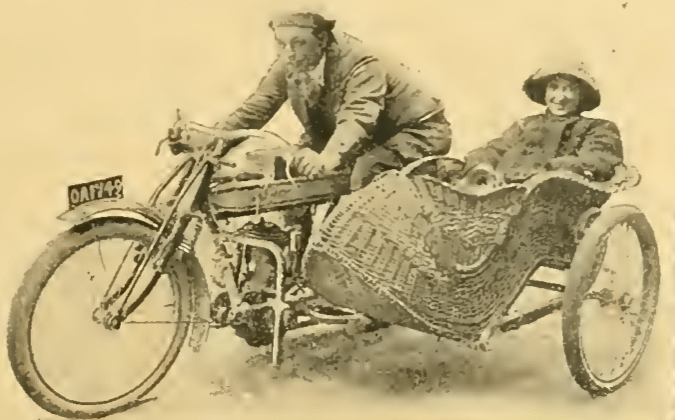
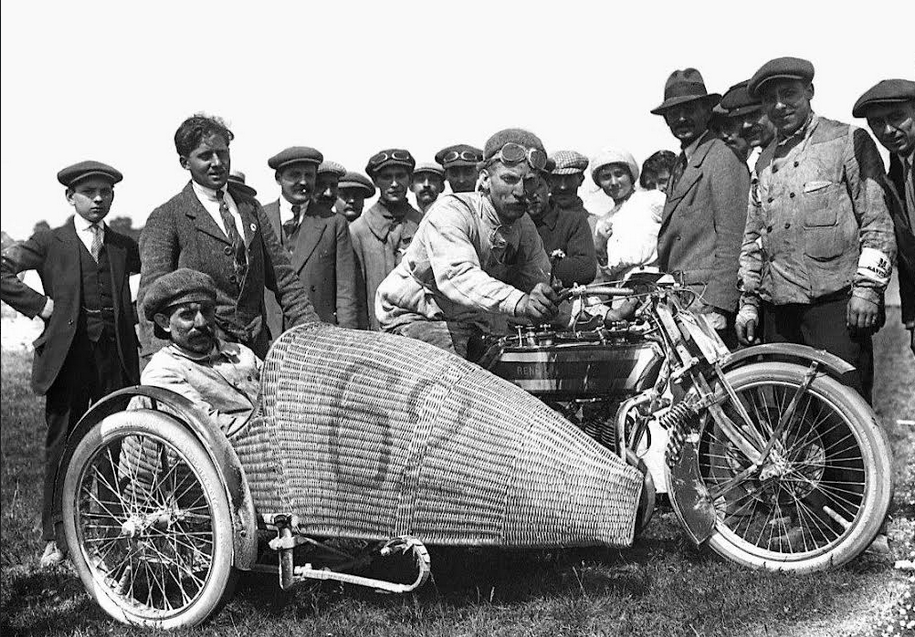
IXION OBSERVED: “The ‘Nut’ and His Hooter: The latest nuttiness consists of scrapping the usual half-guinea hooter, and buying in its place a stumpy little cyclorn at about eighteenpence, which is secured to the centre of the handle-bar by a few lappings of insulating tape. The unaccustomed impertinent treble squeak of the tiny hooter is a fine road clearer at the moment, because people are unfamiliar with it, and wonder what is coming. Its efficiency will probably decrease as soon as a few hundred imitators have copied the practice.”
I HAVE LATELY BEEN sampling two or three 750-1,000cc mounts,” Ixion reported, “and I have specially fallen in love with a 5-6hp Ariel which I have had the temerity to ride solo. The makers say that it weighs 280lb only, but it seems as lumbersome to handle as the 7hp Indian, which scales 3cwt with the lighting outfit. This is its sole drawback. I pant and perspire as I wheel it out of its shed, but when I get it on the road it is a perfect dream. It starts as easily as my wee Douglas, its gears snick home like a knife separating a butter-pat, its brakes combine the grip of Samson with the velvetiness of Delilah, its acceleration is terrific, and its top gear suffices for all main road hills. Still, these are not the features which have specially won my heart. It knocks the ordinary 3½hp mount silly at moderate touring speeds. At 20mph, for instance, the machine is dead silent and literally vibrationless. You cannot hear the engine exhaust or valves; the big tyres, spring forks, sprung saddle holder, and great weight absolutely damp out all the inequalities of the road surface, and make it more comfortable and steady over indifferent roads than any £500 car, and there is not the most minute semblance of engine convulsion. The driver drifts along as if he were wafted on a cloud, travelling a few inches above the road surface. It is the last luxury in locomotion. If the throttle is opened up to 30 or 35mph you just grow conscious that the road contains pot-holes and that you are sitting over an engine which is discharging burnt gases astern as unostentatiously as possible, but that is all. These merits are, of course, shared with other machines of equal class; the latest MAG-engined Matchless is a worthy mate for an Ariel, for instance. But as I know the Ariel best I use it for a text. No 3½hp machine that I have ridden even distantly approaches the smooth mastery of this big twin, and it is folly to pretend that the 3½hp is perfect until it at least faintly mirrors this supreme comfort. Descending to lighter machines, the inherent inferiorities of the type are manifest—100lb, and even 200lb, have manifest merits in comparison with 300lb; they are easier to wheel about, cheaper to buy, cheaper to run; but they cannot combine this tremendous substantiality with perfect silkiness of running and profound mastery of their work. If I were engaged in the design and manufacture of baby two-strokes I would drive a 7hp 10,000 miles per annum, so that my ideals might not sink too low.
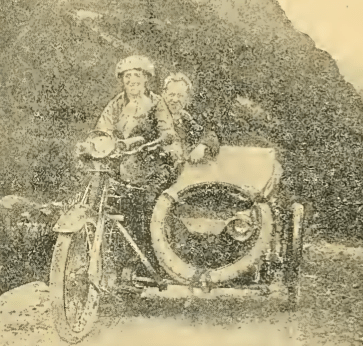
“OVER ONE-THIRD of the machines one sees on the road are fitted with sidecars, whilst the many models especially designed for this purpose exhibited at Olympia were very notable. One of the most singular points in connection with motor cycles and sidecars is the extremely unequal distribution of comfort between the two people concerned…there are many who hold that a really well-sprung sidecar is far more comfortable than the best seat on the finest-motor car…It is rather singular, however, that, for all the years that have been devoted to its development, the properly sprung motor cycle, such as the Indian, PV, Bat, Edmund, TMC, and NSU, is still as much an exception to the general rule as ever it was. Motor cyclists must, therefore, be regarded as a hardy race, who look upon nearly all the other qualities which their machines possess as being superior in importance to mere personal comfort…The most common and generally most satisfactory form of [sidecar] spring adopted is that in which both the front and rear portion of the car are supported at each side on the ends of long, curved leaf springs, in which generally about three or four laminae are used.” However, there were plenty of alternative systems…
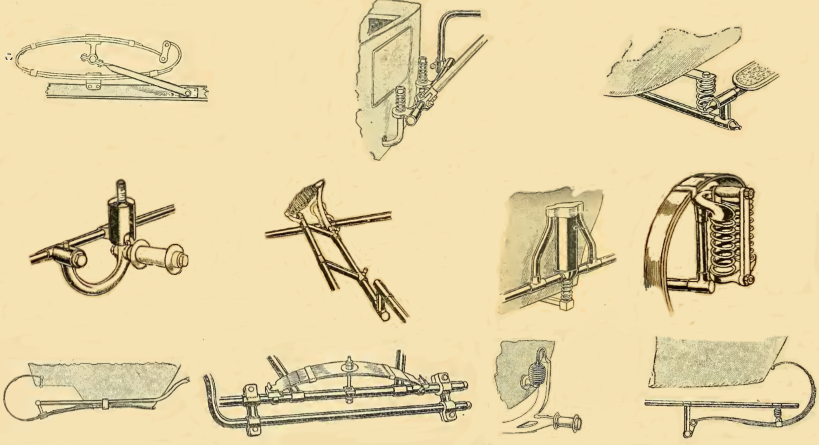
“THE DESIGN OF MILITARY motor cycles: In order to be passed by the military authorities, the machine must conform to various regulations. The engine must be a single-cylinder of about 500cc with dimensions of not less than 84x84mm. A certain number of horizontal twin-cylinder machines of less capacity will, however, be accepted. All types of machines are not, however, equally suitable. Let us first consider the conditions under which the machine will be used. It has to be ridden under all sorts of weather conditions and stand unprotected from the elements at night. It has to be ridden over any kind of road, good, bad, indifferent, level, and hilly, over farm roads that consist principally of ruts and loose stones, and, when passing troops on the march, as often as not in the ditch. When delivering messages at night it has to be ridden over the fields where the troops may bivouac. On the open road high speed is essential, as there is no speed limit when carrying despatches; on the other hand, when marching with a column, slow speed is a sine qua non, and the cycle should then be capable of being driven comfortably at not more than four or five miles an hour, otherwise one has to get off and push. No doubt on the score of reliability, which is the very first essential, the Army regulations would appear to encourage a heavy, powerful machine, but, provided reliability can be ensured, the lightest machine that will do the work should be used.
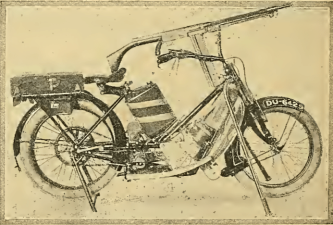
o the work should be used. With a lightweight a three-speed or multiple gear is a great advantage; it not only allows of a high speed on the level, but…is further a great help for slow riding in the column, and for this purpose a good clutch that can be continually slipped, but which will take up the drive again directly it is let in is required…As the machine is continually exposed to the wet it should be of the ‘all black’ type or else suitably enamelled all over, or as far as possible all the bright work covered…Mud guarding should be as effective as possible, not only to reduce unnecessary cleaning, but also to protect the rider. The engine and the transmission gear should be totally enclosed, and the magneto should be in a position where it is well protected. There is no reason why on the majority of engines the valve stems and springs should not be enclosed as they are on a motor car engine…From the point of view of protection the all-chain drive running in an oil bath, yet readily accessible, is no doubt the best…An electric lamp fitted with a dry battery of the flash lamp type, such as can be bought in any town, is a very handy thing to have fitted. It can be used as a head lamp in case of the acetylene lamp failing, and can readily be taken off the machine to find one’s way on foot about a camp at night. A large petrol tank should be fitted and replenished at every opportunity, as there are occasions when one finds oneself running short of petrol in a village where it cannot be procured and the road to the nearest supply is held by the enemy…Good heavy non-skid covers should be used to prevent side slip and to minimise the risk of punctures. To deal rapidly with punctures detachable wheels would be a great assistahce, and no doubt if the Military Authorities built or designed machines for their own use standardised detachable wheels, which could be used either as a front or back wheel, would be specified. A spare wheel complete would be carried in the transport, and would fit any of the machines. To sum up, a military cycle should be as light as possible, consistent with reliability, speed, and flexibility, should be mud and weatherproof, silent, and with good petrol and baggage-carrying capacity…there is no doubt that the most suitable machine is one fitted with a twin engine rather than a single; it is certainly more silent, and flexible, and has the advantage that one can on occasion get home on one cylinder.”
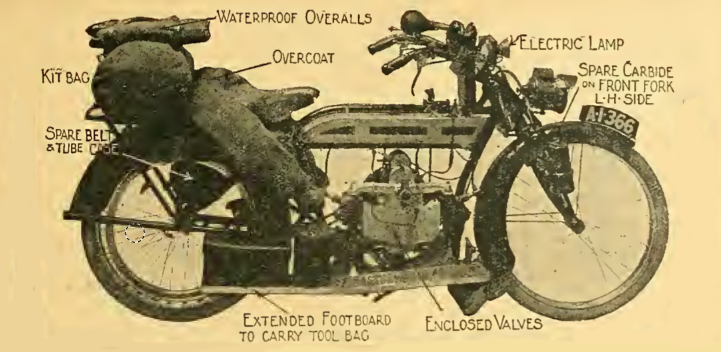
“OWING TO THE regrettable commencement of hostilities on the Continent, which threaten to involve a great part of Europe in war, the FICM trials, which were to have taken place with Grenoble as centre, have been postponed.”
THE MOTOR CYCLE SHOWED LITTLE SIGN of Entente Cordiale in its preview of the 1914 International Six Days Trial: “Thanks to the supineness of the Union Motocycliste de France, we are still unable to give anything like a complete list of entries…all that has been sent to us by the French governing body is a list of manufacturers and private owners who have entered. No mention is made of the machines, and the list is certainly not complete, as many names of drivers are missing…Owing to the French body having kept the ACU in ignorance of the names of the English entrants up to the eleventh hour, the latter institution will find it difficult to make satisfactory travelling arrangements… Teams from Germany and Switzerland, and, of course, France, will lend an international air to the competition. In all, over sixty entries are expected.” These included 21 Brits with the national team comprising Charlie CR Collier (Matchless combo), Tommy de la Hay (Sunbeam) and Bill Newsome (Triumph). “Entries close at double fees on July 25th. The machines will be examined and sealed on Sunday, August 2nd, at L’Ancien Arsenal, Avenue Felix Viallet, Grenoble.” The Jerries didn’t show up which was understandable as war was declared on 28 July.
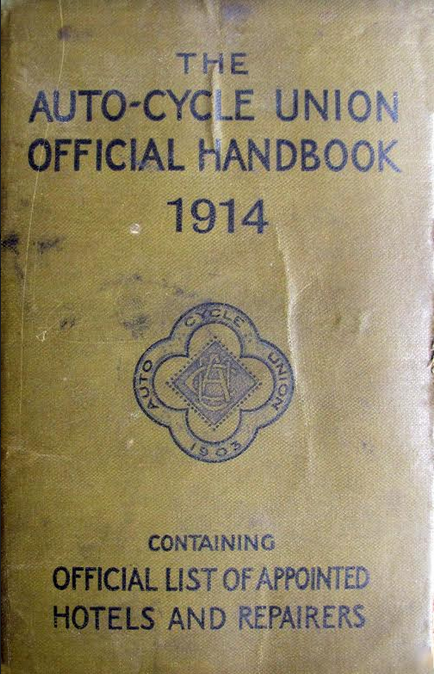
“THE REPRESENTATIVES OF The Motor Cycle who went over to France last week in connection with the International Six Days Trial had a most interesting if not exciting trip. A start was made from Havre last Thursday morning in company with Mr and Mrs Loughborough and Rev EP Greenhill. Three competitors, in WB Little (Premier), Frank May (AJS), and J Greenwood (Connaught), followed the pilot car, which contained five persons. At that time the situation had not assumed the seriousness it now has, and none imagined that the trial would be postponed. Near Gien on the second day, HFS Morgan, who had started the day previously, was met returning, he having been troubled with a main bearing bush on his engine. The car and the two motor cyclists managed to lose one another, but all arrived at Grenoble safely last Saturday evening and learned with the greatest concern that a general mobilisation of the French Army had been ordered an hour previously, that the trial was abandoned, that petrol had been commandeered by the French Government, and that foreigners must quit within 24 hours. Here was a serious state of affairs! The car party at once decided to return at the earliest possible moment. There were no trains available, and on Sunday morning the British Consulate was visited. Here we found a number of other competitors and their passengers making enquiries as to the best course. All were advised to leave as quickly as possible, and the British Consul gave it as his opinion that essence would be obtainable in the villages. This news led Pressland (Crouch Carette) and W Chater Lea (Chater-Lea) and their passengers to discuss a return via the Galibier Pass in order to enjoy some of the gorgeous scenery of the French Alps. What became of them we do not know. Finn and his passenger with the Enfield sidecar had managed to lay in a store of petrol and intended returning by road. RA Bishop wath the, 8hp Enfield sidecar which Greaves drove in the English Six Days Trial seemed undecided what to do, though he had journeyed down by train. Little and Greenwood elected to return by the route they had traversed. By dint of diligent enquiries a source of petrol supply was privately forthcoming, and our party therefore took on board some fourteen bidons [cans]. There was naturally great excitement in Grenoble, and a military air on all sides. Only a few trains were running to certain restricted spots, and weeping women and children bidding good-bye to their menfolk made matters look ominously black. A start was made on Sunday morning on the 500-mile trip to Havre, the party having decided not to lose a moment. Railway crossings, of which there are a large number in France, as well as the bridges, were guarded by gendarmes, and the car was pulled up on many occasions and the occupants interrogated as to their nationality and as to the nature of the baggage, the presence of explosives being feared. We had taken the precaution to display the emblems of the Entente Cordiale on the car and many times they were recognised and enthtusiastically cheered. The increased vigilance of the authorities, however, impressed upon the party the extremely serious nature of their position, and the probability of being cut of in France should the Channel service be stopped, which it was anticipated would be the case. At Decize, where the party dined, it was resolved to continue throughout the night by changing drivers and relying upon the Michelin Guide and Baedeker for the route. Splendid progress was made, and, curious to relate, during the night only once was the party challenged by a sentry. As dawn broke cart loads of reservists from the country were encountered on their way to the mobilising centres, and 24 hours after the start the distance recorded was 415 miles. But our petrol supply was now becoming exhausted, and many times our requests for replenishments were met with a shake of the head. At Dreux, however, our luck was in, and once again we laid in a good store. How thankful we were that the French roads were so straight! Speed was quickened as daylight improved, but now another trouble threatened the party, which, of course, was absolutely reliant upon the car to see them safely through. It was feared that the ferry across the Loire at Quillebeuf would be suspended, which fear was later discovered to be a well timed one, and the route consequently changed to the longer stage via Evreux and Rouen. Occasionally we were able to pick up scraps of war news, but the alarmist reports were in the main proved later to be unfounded, but they served to increase our determination to go through to Havre to avoid risk. The sentries were not so much in evidence as the frontier was left behind, but the military preparations were by no means relaxed. Havre came in sight at last after 27 hours’ continuous running. It was generally believed that Wednesday night’s boat would be the last across for some time, and, consequently, we fear that the remainder of the British party may be subjected to great inconvenience, as nothing had been heard of them when we left Havre. The boat on which the writer sailed was stopped in the Channel on Wednesday morning while a torpedo Boat encircled her; a pilot was taken aboard off Southsea to navigate the boat by a roundabout route (it was said and believed to avoid the mines), and after many delays in the Customs at Southampton, the train due at Waterloo at 9am got there at 3pm, and there was not a single traveller who was not heartily glad to set foot on English soil again.”
MAURICE GREENWOOD, WHO WAS one of the English party which went to Grenoble for the abandoned FICM Six Days Trials, has got back safely and sent us his experiences. Their machines were commandeered by the French military authorities at Lyons, and eventually, through the good offices of the British Consul, the party escaped from Lyons to Paris in a troop train, which averaged 10mph to Paris. Thence it was an easier matter to reach the shores of England. W. Chater-Lea and his wife and C Pressland, the two cycle car drivers, are still unaccounted for, and they must still be in France.

“WAR! AT THE MOMENT of writing it appears that motor cyclists may soon find opportunities to show that their favourite sport is more than a healthy and instructive hobby. They may be called upon in large numbers to put their knowledge, machines, and even lives at the disposal of the country. The equipment which has provided many a day’s sport and many an evening’s discussion will be at the free disposal of fellow countrymen. Let us trust that we shall be found useful if our services are required. The lives which many of us have often risked for sport and commerce in the past will be more readily offered in a sterner cause.”
“OLYMPIA IS AT present being used for the incarceration of German aliens.”

“HOW TO ACT: The Motor Cycle has entered into communication with the War Office with a view to furnishing the names and addresses of motor cyclists willing to serve as required. The War Office have gladly accepted such assistance, and it any readers are prepared to place themselves and their machines, or only the latter, at the disposal of the military authorities we shall be only too glad to forward any names sent in to us to the War Office. Readers desirous of helping should write us, on one side of the paper only, clearly stating their full names, addresses, and ages, also the horsepower, make, and date of manufacture of their machines, and whether they are prepared to give their services, or only those of the machines. The Auto Cycle Union also call the attention of motor cyclists to the fact that any riders desirous of joining either for home defence or with an expeditionary force may obtain particulars of service from the nearest recruiting station. On going to press we learn that the War Office are prepared to take twenty motor cyclists for special service. Preference will be given to those who know French and other foreign languages.”

“THE MOTOR CYCLE IN WARFARE: Motor cyclist despatch riders are to play an important part in the present war…the value of motor cyclist despatch riders in the event of railway lines, telephones, and all other means of communication being out of action cannot be overestimated…the military motor cyclist having time and again proved his worth in no uncertain fashion, the Government has gone on multiplying the numbers and extending their uses in various directions, notably in the flying corps and transport service. All this is a feather in the cap of motor cyclists, manufacturers, and all others directly connected with them, as the success of motor cycles in warfare is simply and solely due to their present-day reliability. But the fact of motor cyclists being attached to the Army is not the only pleasing feature in this crisis; indeed, we know of nothing more encouraging than the patriotic response of motor cyclists to the call of their country. Hardly had the order for the general mobilisation of the Army been issued and the request for motor cyclist volunteers made than every vacancy was filled and thousands have since been refused. The appeal by The Motor Cycle in the last issue for volunteers met with a most encouraging response. Each day scores of replies were received from readers offering the services of themselves and their machines, and these answers were at once handed to the secretary of the Auto Cycle Union, which body has placed its services and the whole of its staff at the service of the War Office authorities, and the names and addresses of those who offered their services have been classified into the counties and districts in which they reside, which list is now at the disposal of the War Office when further volunteers are required. Last week Midland manufacturers received repeated orders from the Government for motor cycles; the War Office officials immediately on the outbreak of hostilities took details of the stocks held by the different firms, and have since acquired a large number of machines.”
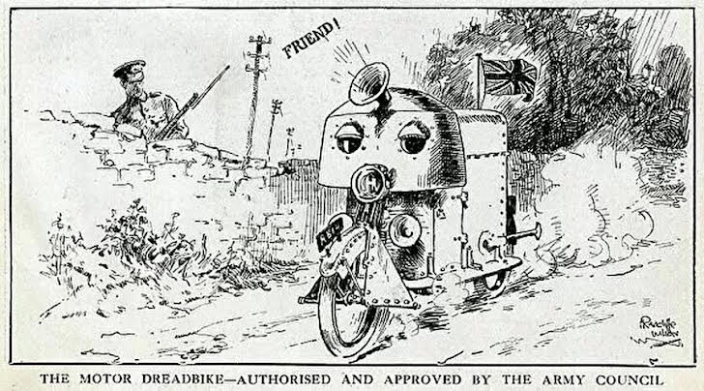
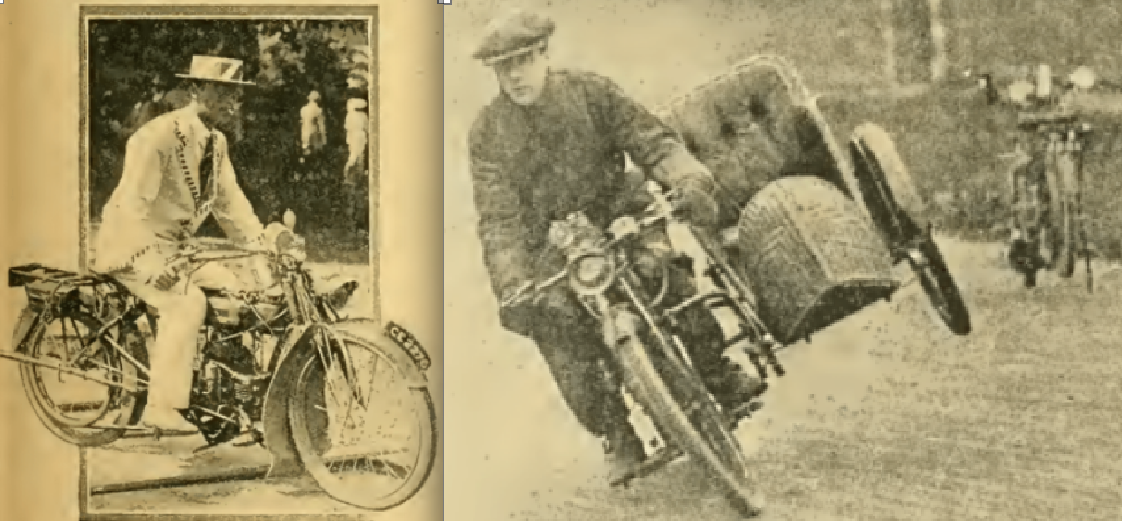
“GREAT RUSH OF APPLICANTS: On Friday there were 2,000 names in excess of the number immediately required. Capt Trapmann has enrolled 25 riders able to speak foreign languages, who will accompany the expeditionary force in the dual capacity of despatch rider and interpreter.”
“LONDON RECRUITING SCENES: Here, by Fulham House, under the railway bridge, about thirty machines were ranged up on both sides of the road, while a little farther on, seated at a table and assisted by a rather juvenile orderly, was Lieutenant BC Pollard, who is a keen motor cyclist, a capable journalist, and a man of experience under actual war conditions. He was handling a difficult task in an extremely business-like manner, and any attempt to get round him on the part of an applicant was a complete failure. Not very long after our arrival a man of short stature brought round a four-year-old machine, the value of which was stated on his application form to be £35. The officer in charge asked him if he thought that that was the real value of the machine, to which the applicant replied in the affirmative, with the result that the officer asked him how he had the audacity to value a machine of an undetermined vintage at such a high figure, tore his paper in half, and sent him about his business. Crowds of disappointed motor cyclists surrounded the table, and the most extraordinary scenes were witnessed. Those who had been lucky enough to be taken on were spending money in all directions in getting their machines put in first-class order, or even buying new ones if they thought that their own were not good enough; in fact, the number of new machines specially bought for the purpose was astounding. As the case was one of national emergency, preference was given to men who paraded in person with their mounts…”
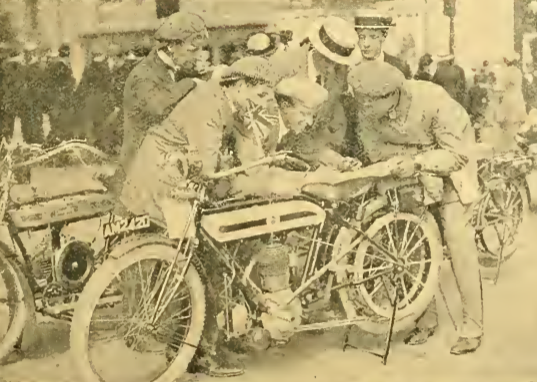

“OTHER WAYS OF HELPING: It must be remembered that there are other ways than despatch riding in which drivers may give their services. The War Office requires first rate drivers of motor lorries and motor-propelled ammunition and forage waggons; also expert engine men for the flying section…The aeroplane section of the army also requires skilled fitters, and many motor cyclists, anxious to volunteer, might be eligible in this direction, if their services cannot be used in other ways.”
“SPECIAL CONSTABLE SERVICE: There is also a force of special constables, 30,000 in number, to be enrolled in London, and it is proposed that a body of 50 motor cyclists should be included among these. They are destined to work inside the Metropolitan area and five will be allotted to each district. Their duties will be to carry out patrol work.”
“THE SPECIAL CONSTABULARY FORCE: For the Warlingham district no fewer than 60 motor cyclists have been enrolled, and are being equipped with revolvers by the local residents. Their duty will be the guarding of railway
bridges, etc.
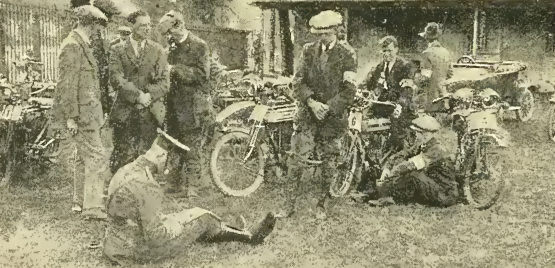
“BANDSMAN BLAKE AS SCORCHER: Bandsman Blake was charged before the West Flegg, Norfolk magistrates for riding a motor cycle on the highway near Yarmouth to the common danger of the public, but, as both the well-known pugilist and the constable who had stopped him had been called to the war the case was dismissed, the Chairman of the Bench stating that the defendant had gone to serve his country and everyone was useful at the present time.”
“DESPATCH RIDERS WITH THE FRENCH ARMY: From what we have seen of the French Army in its early stages of mobilisation, it does not seem to be too well provided with motor cycle despatch riders, though it is known to possess a squad of Triumph riders. One of the most notable riders whom we saw was Oblin, who took part in the Paris-Nice trial in 1913. He was mounted on a very smart looking 3½hp Moto-Reve. He is a very fine looking man, and was in the full uniform of a Zouave, and very picturesque helooked. He left under orders, and made a good 30mph average over the rough road between Evreux and Nonancourt. At Havre we came across another French despatch rider, who was mounted on a Clement-Gladiator—strongly resembling the English Royal Enfield in its general details.”
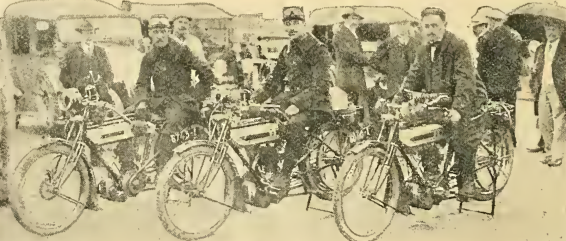
“MACHINES FOR NAVAL DEPOTS: It is not only for the Army that motor cycles are being employed, for we learn that the Admiralty have taken over 50 machines from the Triumph Cycle Company, and have intimated that more may be required. These machines have been despatched to Chatham.”
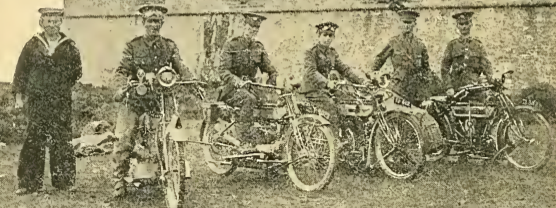
“ADVICE TO NON-SELECTED RIDERS: Now that there are practically no further vacancies for motor cyclists in the Army at the present time, the next question which presents itself is as to what steps the numerous disappointed riders will have to take if they desire
their wishes to serve their country to be gratified…we therefore suggest tliat local club members and individual motor cyclists should set bout studying map reading and army conditions, so that if they are wanted they will be of real service to their country…”
“THE RUSH TO ENLIST: It is not only in the Metropolis that the rush to enlist has been so phenomenal. It is the same all over the country. In Birmingham the excess of applicants over the number required was tremendous. In Liverpool, where the ACU have a Local Centre, the same tale is told, and in the first two days of recruiting over a thousand riders presented themselves… “
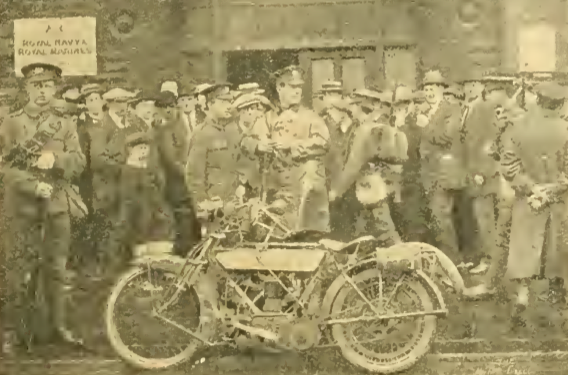
“AT THE SCARBOROUGH POLICE COURT…the magistrates considered it necessary to fine a military motor cyclist for doing his duty. The pretext was that he was driving to the danger of the public. Although the man was riding a Government machine and his captain gave evidence that he was obeying orders, he was fined ten shillings and costs, or more than a week’s pay. He was held to be liable under Civil Law, although on active service. Does this mean that a despatch rider carrying urgent messages, which affect the welfare of the nation, may be summoned for exceeding the 20mph? In view of the present crisis the decision is most astonishing, and though we do not wish to encourage law breaking, we believe that a soldier on active service can only be imprisoned by civil authorities for crime or a debt of over £30. What if the defendant had refused to pay?”
“DESPATCH RIDERS BEING GATHERED from the class which we have designated as ‘dashing’, there must be many men among them…who have had their licences endorsed. We all know that licences are often endorsed for very trivial faults. We, therefore, think that it would be a gracious act if the Home Office would remove the endorsements from the licences of all those who have served their country in this war. This would be some small recompense for their loyalty and valuable services, Therefore we say, ‘Let all endorsements and suspensions be removed, and let despatch riders start again with a clean slate.’.”

“RIFLE PRACTICE: Nobody can prophesy with confidence what course events are likely to take, and, though we hope for and expect the best, it is still perfectly possible that every healthy adult may be requisitioned for actual warfare. It would be a great pity if the bulk of our 150,000 motor cyclists were only available as despatch riders, and proved inefficient combatants in emergency. A memory of the Boer war suggests that clubs might usefully take steps to train their men in marksmanship.”
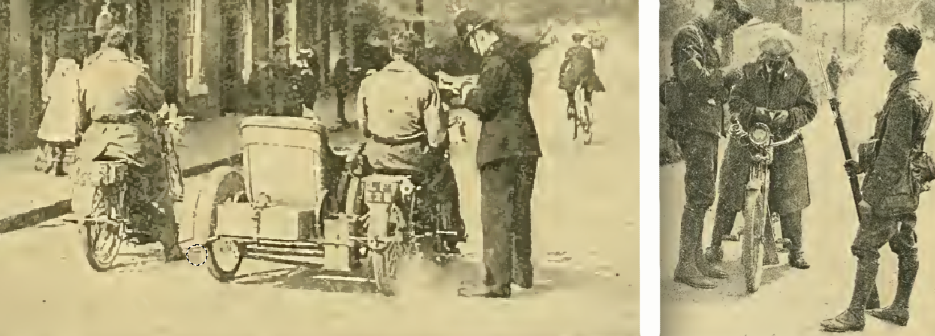
“KEEPING OPEN LINES OF COMMUNICATION: We have heard from Hugh Gibson, the well-known competition rider, that he is organising a small motor cyclist corps for home defence purposes at Ainsdale, Lanes, and that he is in communication with the Cumberland MCC and Edinburgh &DMCC to secure co-operation. The idea is to enable rapid communication to be kept up between Liverpool and Edinburgh by motor cycle riders in the event of the telegraph or railways breaking down.”
“A MILITARY MODEL: We are informed by Messrs Quadrant Motors that they are specialising on a military model 4½hp single-cylinder motor cycle, several of which have already been supplied to the War Office.”
“THE FORTS AT LIEGE (where the FN factory is situated) are equipped with guns manufactured in the FN works.”
“BELGIANS TO THE FRONT: Many Belgian volunteers on their way from Paris to their own country left on sidecar combinations with their wives, sisters, and children, all bedecked with flowers as if on a holiday jaunt.”

“ENGLISH LADY MOTOR CYCLISTS IN GERMANY: ”Two young lady motor cyclists, Miss Scott and Miss Dickenson, Wootton, Isle of Wight, have arrived home from a tour in Germany after suffering terrifying experiences. They were arrested three times as spies, hauled off their machines, and roughly handled. Although they showed duly authenticated passports they both lost their motor cycles at Frankfurt, where they were requisitioned for war purposes.” The ladies’ full story, and details of a Scott riders escape from Germany, can be found in the 1914 Features section.
“A NUMBER OF 3½hp Premier counter-shaft three-speed machines has been supplied to the War Office for use with the Expeditionary Force, and two machines for Lord Lonsdale’s Colonial Corps. Our photograph is of Corporal G Drew, attached to 1st Signal Squadron Royal Engineers, Seventh Lancers, 1st Cavalry Division, Expeditionary Force.”
“IN A RECENT ISSUE of The Motor Cycle I note with interest your photograph of Corporal Guy Drew and his 3½ Premier. I must tell you he is now riding a 1914 TT Douglas, which he most kindly commandeered from myself. I learn that something went wrong with his original mount, and there was no time to have this put right. I happened to be the unlucky man nearest with a new machine.
Albert Moss.
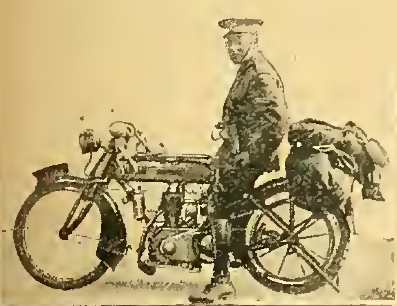
“THIS WEEK WE ANNOUNCE a ‘Shilling Fund’ with the object of purchasing useful Christmas presents for motor cyclists on active service at the front. Various funds have been opened to buy tobacco, cigarettes, plum puddings, and the like for our men at the front. The fund opened by The Motor Cycle will be devoted to the purchase of small but useful articles such as gloves, mufflers, handle-bar muffs, warm socks and abdominal belts. We think that those readers who have won awards in competitions during the past year would willingly forego the whole or part of the prizes, so that some of the purchase money may be used as we have outlined. Busy factories, influential clubs, and readers in general will, we feel sure, welcome this opportunity of showing their appreciation of motor cyclists’ work at the front, and send donations of a shilling upwards.”
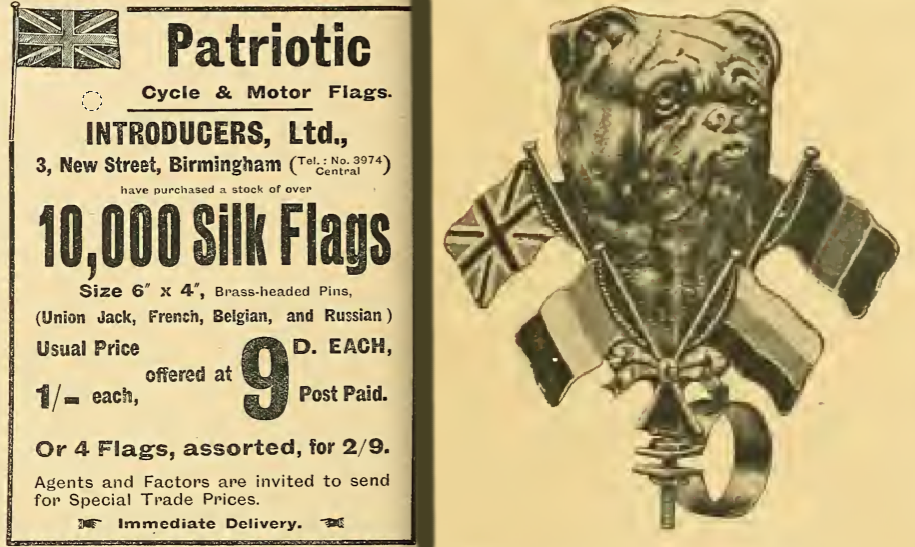
“MOTOR CYCLIST VOLUNTEERS: Hundreds of names of motor cyclists willing to act as despatch riders have been received by The Motor Cycle in reply to our appeal on behalf of the War Office. These names have all been classified according to the districts in which the applicants reside, and particulars of the machines have been noted. In some cases applicants have offered the services of their machines when they themselves are incapable of riding. In others riders have offered their services who have no machine at their disposal. The list of names is being compiled in conjunction with the Auto Cycle Union, which body is directly in touch with the War Office, and at a moment’s notice can give the officials there the names of the motor cyclists available in any district in
the United Kingdom.”
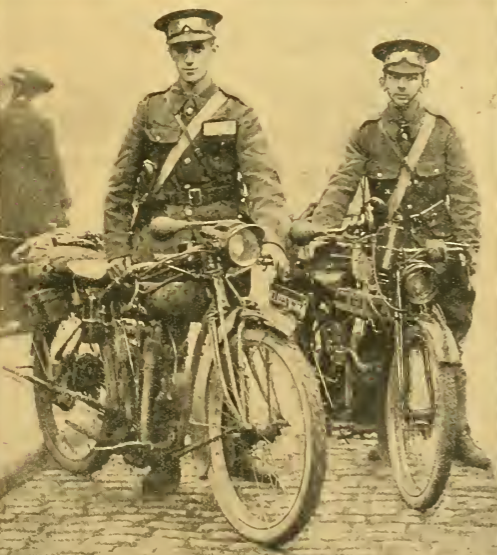
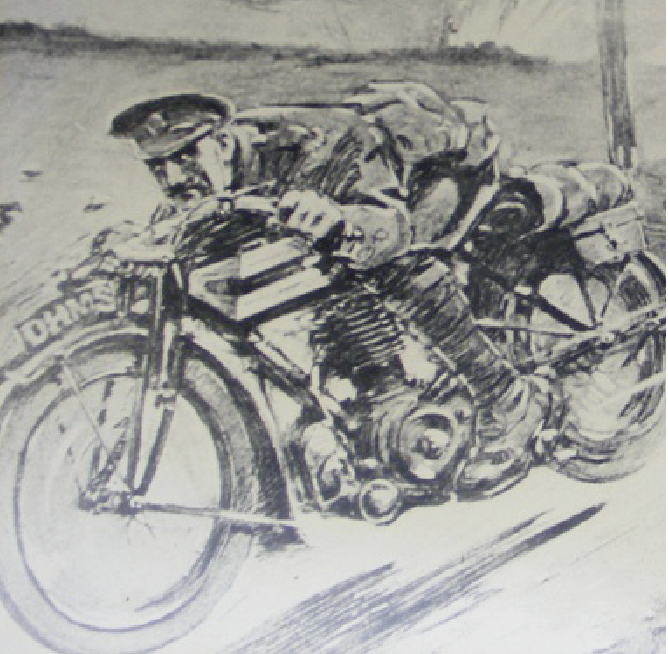
“OUR ADVICE TO CLUBS: At a time when every motor cyclist is anxious to serve his King and Country, and when all army vacancies are for the present filled, the advice of The Motor Cycle to club committees is to encourage members to cultivate assiduously an intimate knowledge of their own particular localities and to become well versed in the art of map reading, so that if their services may be required eventually, they will be as useful as possible. Ordinary competitions having been cancelled, clubs might well arrange map reading contests and reconnaissance tests in districts not occupied by troops.”
“MEETINGS CANCELLED: The Public Schools MCC has deemed it advisable to cancel all fixtures for the present, but it is hoped to hold a trial later when the European crisis becomes less acute.”
“THE ANGLO-DUTCH TRIAL: As was anticipated, the Dutch Motor Cycle Club has now notified the Auto Cycle Union that, owing to the war, the Anglo-Dutch Trial fixed to take place in Holland in September must necessarily be abandoned.”

THE ACU ANNOUNCED: “Upon the outbreak of hostilities several clubs which had arranged to hold open competitions in the near future notified the Auto Cycle Union of their intention to postpone or abandon them. The Union is of opinion that, whilst, of course, local circumstances and conditions must necessarily be taken into consideration, yet where at all possible the Government’s appeal to ‘carry on’ will best be supported by the club’s carrying out their fixtures as originally intended. Steady continuance of motor cycle competitions throughout the country cannot fail, to some extent, to have a stimulating effect on both sport and pastime, and consequently—which is of far greater importance—the motor cycle industry generally.”
…AND AT LEAST ONE Manufacturer was deeply unimpressed: “We have to-day received from the ACU a circular letter urging that motor cycle competitions should be carried on. We think it is necessary that a paper with a circulation such as yours should take this matter up very strongly. We have replied to the effect that as most of the competitors in ACU competitions are single men, the ACU would be assisting the country in a much more loyal manner if they urged their members who are single men to take up arms on behalf of their country, which would be much more commendable than riding about through the country on a motor bicycle for the purpose of gaining marks with a white badge round their arms, which we think at these dreadful times would be utterly absurd. We cannot imagine the Belgians, French, or Russians having motor cycle competitions at this time.
O de Lissa, Managing Director, Motosacoche.”
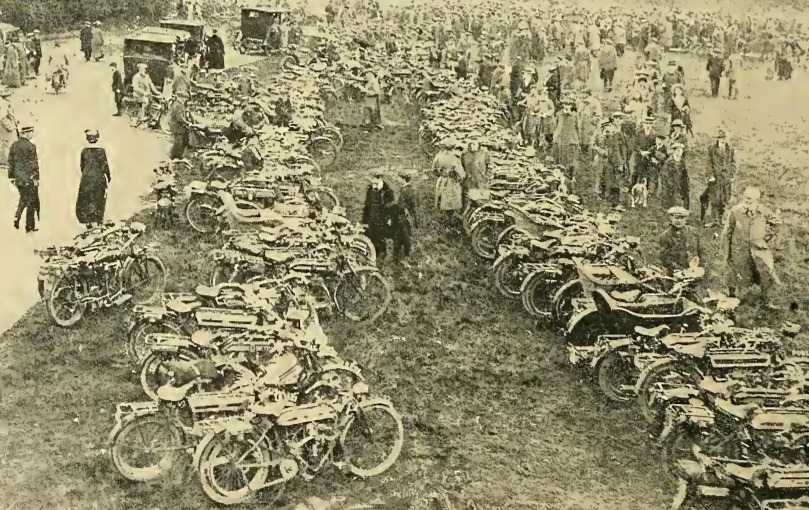
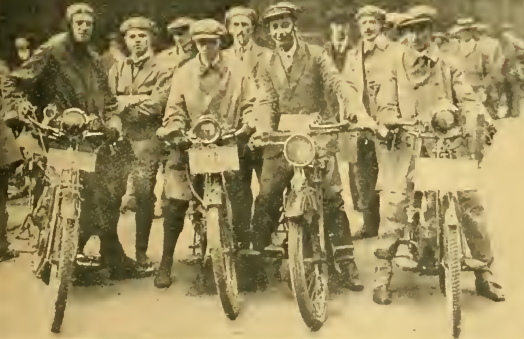
THE MCC’S DEVONSHIRE TOUR attracted 59 starters, double the 1913 tally. “The weather was very rough and wet for the time of year, and this made the task of climbing tlie test hills an exceedingly arduous one, especially for the solo riders. Quite a number were early in trouble, Cole being particularly unfortunate in suffering a nipped tube four times before lunch. Coates broke the sprocket off his gear box near Bridgwater and retired. Batty-Smith had ignition trouble and retired at the same place. As Porlock Hill was approached the rain came down in torrents, and this made the surface exceedingly treacherous. Of the 47 who reached the hill 23 failed to make a clean climb…A good deal of amusement was caused by the obvious displeasure of several of the lady passengers, who were annoyed at having to walk up the hills…Winter’s back wheel collapsed three miles from Lynmouth, and he came in on a car. Of the 48 who left Hungerford, 40 completed the outward journey…Sunday was spent pleasantly by those who were not
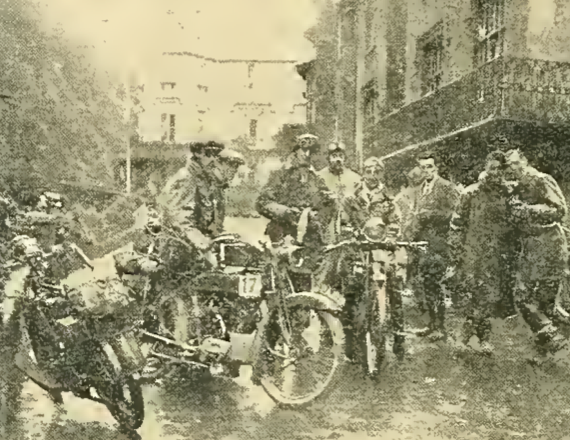
attending to their machines. There were several walking parties to the Valley of Rocks and Watersmeet, and a party rode over to Malmsmead to inspect some of the local hills. Several washed their machines in the Lynn, much to the amusement of lookers-on…Countisbury Hill was in a very greasy condition, but as the steepest gradient is only 1 in 5½ there were no failures. The run back as far as Bridgwater was uneventful, excepting for heavy rainstorms at intervals. After lunch Mr Baddeley, the trials hon sec, announced that, in consequence of the war causing anxiety to some of the competitors, who wished lo get back to town quickly, no checks would be taken up to the finish at Hungerford, and that they could finish as rarly as they liked. This led to the more sporting members indulging in what was called the Devon TT, and in hurrying quite a number lost their way and put in many extra miles. It also brought about the downfall of Fielder, who broke the frame of his New Hudson, and dropped the power unit on to the road when going at speed.”

ONCE AGAIN THE MCC hosted the Inter-Club Trial and, for the fourth time, won the event, beating teams from 30 other clubs. The trial had started, in 1904, on main roads but as the bikes had evolved, so had the course. This time it included Tysoe and Sunrising—two formidable acclivities which stopped many riders in their tracks.
HAVING SHOCKED THE BRITS by a Senior TT hat-trick in 1911, the Indian tribe was back on the warpath north of the border by taking the team award in the Scottish Six Days Trial. For more on the trial and an engaging report of the trials and tribulations endured by the Blue ‘Un’s man in the saddle check out the 1914 Features section.
“THE PENRITH &DMCC HELD their first open speed trials in the beautiful Lowther Park, by kind permission of the president of the club, the Earl of Lonsdale. The course was a half-mile in length, almost straight and very fast. The substantial entry of 95 was received, being divided into 13 classes catering for every type of machine. The honours of the day were shared by F Dixon (7 Indian) and A Brewin (8 Zenith), both of whom covered the course in 24.8sec, the former, by making this time on three successive occasions, put up by far the most consistent performance of the day, the masterly way in which he handled his big machine creating admiration among the spectators [he won four classes]. This being the club’s first attempt at organising an open competition the officials are to be congratulated on the success of the meeting.”

“ALTHOUGH THE WEATHER conditions which favoured the Edinburgh Club’s sports were far from alluring, there was nevertheless quite a crowd present to witness the compiftitions. As usual during an event of this nature, one or two performances were outstanding. In the exhibition trick riding and driving event, AUR Downie (2¾ AJS) performed some really excellent balancing feats, such as standing on the saddle and driving with two strings attached to the handle-bar, riding backwars, etc. JW Moffat (2¾ Sunbeam) was also good. The sidecar and car football matches provided many thrills, and the manner in which the combatants manipulated their machines excited loud applause. Several unrehearsed incidents did much to assist in the enjoyment of the afternoon, the star turn being JAW Beaton, who in his effort to cover the hundred yards in the trailing race at evens carried away the erection holding up the buns for the bun event. In this same event, J Steel who was trailed behind AH Alexander (2¾ Douglas), finished on his back, thereby being disqualified.” Having been disqualified in the trailing race AH Alexander went on to win the water race obstacle race, plug changing, zigzag race, potato race and bun race. JR Alexander won the trailing race; JA Porter (2¾ Douglas) won the 40 yards fast race; JW Moffat (2¾ Sunbeam) won the 25 yards slow race; J Steel (2¾ Douglas) won the run and cycle race; JAW Beaton (8 Matchless) won the sidecar football and turn-out competition.

“H JENKINS, THE WINNER of the Australian Tourist Trophy race, on approaching a slightly elevated railway crossing in the Victoria MCC 100 miles road race, held at Camperdown, Victoria, cleared (on a 7hp Indian) a distance of 32 feet; this feat was witnessed, and the distance measured immediately, by the officials.”
“NORTH WEST AUTO ASSOCIATION Social Meet: On Saturday last about 250 members met at Delamere and spent the afternoon in the famous Cheshire forest. A prize was offered for the best attendance before 3pm, but most clubs did not compete. The best figures were Oldham 28, Liverpool Amateur 18, Mersey 15, Hyde 12, and Chester 9.”

“BIG SUPPLIES OF FUEL: A full cargo of 70,000 barrels 2,800,000 gallons) of Pratt’s motor spirit arrived in the Thames last week from America.”
“A PETROL FIRE: We have received information that 650 tins of petrol drawn in a steam lorry caught alight near Guildford the other day. Surely the transport of motor spirit in a steam vehicle is not the height of wisdom! Secondly, after the conflagration a number of fire engines played thousands of gallons of water on the fire. It is not surprising, therefore, that the road was full of water and flames, and that a river of fire was washed down the hill. Surely at this epoch of the motor industry the fire brigade authorities should have learnt that water is of no avail with a petrol fire, and that the only remedy is either sand or a chemical extinguisher.”

“WE HAVE CALLED attention on several occasions of late to the advance in the sporting and business side of the motor cycle movement in Italy, which is quite a valuable market for British manufacturers, and nearly 40 makes from this country are now represented there. Some admirable machines are also produced in Italy itself, the Delia Ferrera, of Turin, the Borgo, also made in Turin, and the Frera, of Tradate, having done wonderfully well in racing events this year. There are about 16,000 motor cycles running in Italy at the present time.”
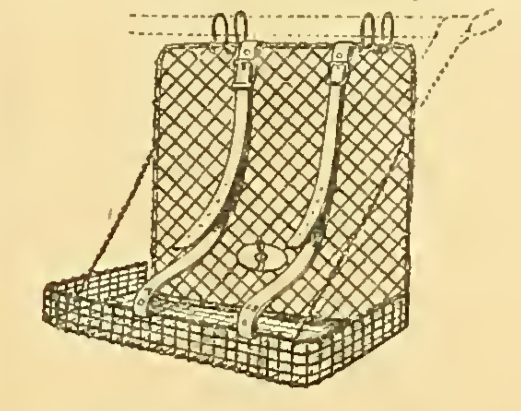
“ON THE FOLKESTONE-BOULOGNE boat the other day there was a French boy of 14, a well-built lad who spoke English with ease, who was returning to France in the hopes of obtaining a motor cycle and becoming a despatch rider.”
“PRICE OF PETROL: Boycott all garages at which highly increased prices are asked for petrol. There is no authority for increase at present, and the two leading suppliers assert that the stock is sufficient for all ordinary demands.”
“UNOFFICIAL RECORD ATTEMPT: Last week an attempt was made on the End-to-end sidecar record by two Oldham motorists, Noah Oliver and Isaac Cotton, mounted on a 6hp Bradbury. The first intimation of the attempt was the receipt of records of progress at The Motor Cycle offices, but the attempt was abandoned owing to the bad weather. We have since pointed out to the driver the risks he is running with the police and the ACU in attempting such a record, and seriously we would advise him to offer his services to the Government as a despatch rider if he is anxious to show his speed proclivities.”
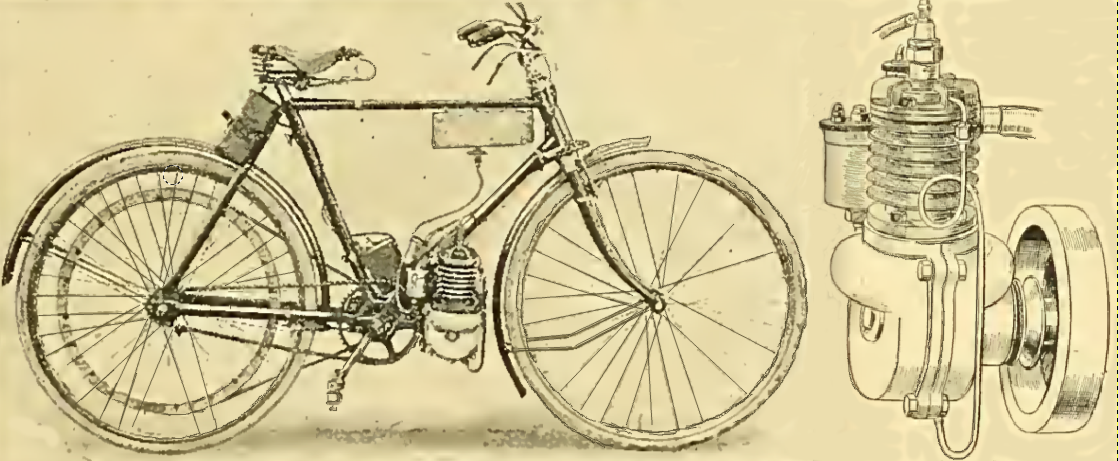
“THE MAGNETOS IN USE in this country have hitherto been, almost exclusively, made abroad, the great majority coming from Stuttgart. We are glad, therefore, to be able to announce the advent pf another thoroughly well made machine entirely of British manufacture. The BTH magneto is made by the British Thomson-Houston Co, of Coventry, and is so designed that it can be interchanged with a Bosch of similar size; the magnets are, however, a quarter of an inch higher, which should be an advantage from an electrical point of view, as it should give a hotter spark at low speeds. The high-tension terminal is absolutely waterproof, as it contains a metal socket but no hole through into the interior Lest anyone may have misgivings about the use of British made magnets, we may mention that the British Thomson-Houston Co have for years been using magnets which do not vary more than 0.1% for scientific purposes, whereas the magnets of a magneto may vary as much as 10% (or 100 times as much) without detriment.”
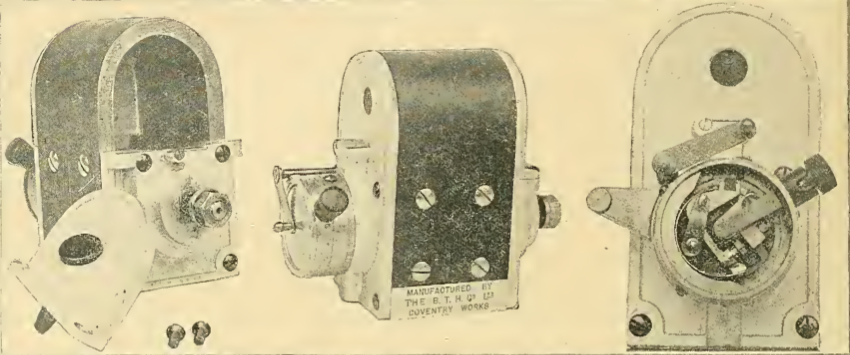
“THOSE OF OUR READERS who have goods to deliver, and who have suffered by the wholesale commandeering of horses for the Army, would do well to consider the advisability of pressing into service a sidecar outfit for the conveyance and delivery of light goods…These machines are very light in weight, cheap to run, and their first cost is moderate, and there is the further advantage that immediate delivery can be obtained in most cases…We illustrate three specimens of these outfits from manufacturers who have been quick to realise the immense usefulness of the sidecar delivery van, especially in view of the shortage of horses. Many tradesmen in comfortable circumstances who have received or will receive payment for the horses which have been commandeered for the Army would require to lay out but a little extra to purchase a sidecar vehicle of the type illustrated, and it is certain that such a machine could easily do the work of two horses, and can be tended and driven by any intelligent youth over fourteen years of age…”

STURMEY-ARCHER, FAMOUS FOR its hub gears, came up with a three-speed counter-shaft gearbox and supplied examples for evaluation to a number of motor cycle manufacturers. The Motor Cycle reported: “From all sides we hear excellent reports of its behaviour, and particularly of the wonderful way in which it is possible to change speed quietly without the use of either exhaust lifter or clutch. The gears are in constant mesh, and the change is effected by sliding dogs which lock the required pinion to the shaft. In outside appearance the box is very neat, and it is light and well made. The enclosed type kick starter is mounted on the off side, and on the near side lies the 8in driving pulley with the chain wheel and clutch on the outside. The clutch has five plates, two of which are fitted with cork inserts, and the pressure is obtained from a series of comparatively small springs…Users of the gear inform us that the clutch is particularly sweet in action, and a restart can be effected on any hill which the power permits to be climbed on the run. The lightness, fool-proofness, and simplicity of the box combine to make it a most taking proposition, which is sure to create a large demand in the near future. It must not be imagined that Messrs Sturmey-Archer Gears, Ltd, intend to forsake the hub gear. On the contrary, they will place both types of gear on the market with equal confidence, realising that each has its own sphere in which it is pre-eminently useful. But the advent of this gear is particularly interesting, coming, as it does, from a firm which up to the present has exerted all its power in favour of epicyclic hub gears.”

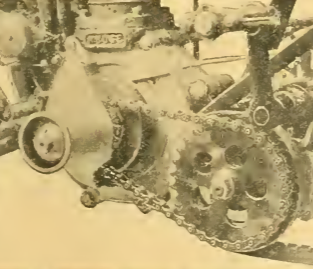
“A MOTOR CYCLE AGENCY CAPTURE: Messrs Robertsons’ Motor Agency had an exciting experience the other day. A German called at their depot in Great Portland Street, W, and first asked for a Harley-Davidson catalogue. On one being shown to him he said that what he really wanted was an instruction book. When he got this he said he would like a key for a Harley-Davidson tool-box, a question which aroused a certain amount of suspicion. On being asked why he wanted it he replied that it was to open the tool-box on a friend’s machine who had lost his. Somebody then said, ‘Please give us the name of your friend,’ which he did, giving the name of a foreign customer whom the staff knew well, and whom they thoroughly trusted. He was then asked to come inside, but said he could not as he had an appointment elsewhere. A little muscular persuasion resulted in his entering the shop, and as soon as he got inside he started struggling and eventually succeeded in escaping into the street, but was rapidly hauled back and kept in custody until the police arrived. He then confessed that he had stolen the machine from the customer whose name he gave as reference, and was recognised by the police as a man who had been wanted for some time in connection with motor cycle thefts. Irrespective of the offence he had committed he was liable to prosecution for riding a motor bicycle, as motor bicycles are, of course, forbidden to persons of German nationality. The police were exceedingly grateful to Messrs Robertsons for the prompt action they had taken, and regarded the capture of the ex-German waiter as an important one.”
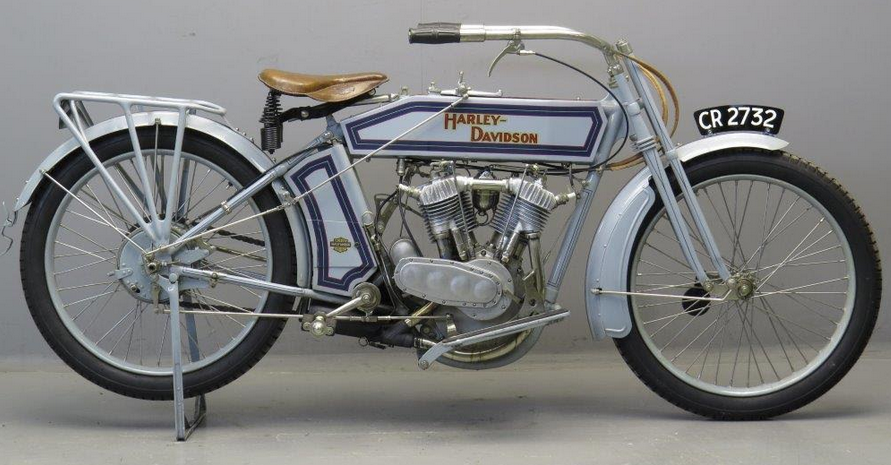
“THOUGH THE BROOKLANDS flying ground has been taken over by the Military Authorities the track is still open, and there is a great deal of interesting flying going on at the present time…It is hoped by the track authorities that the next BMCRC meeting will be duly brought off to a successful issue.”
THE ITALIAN MOTOR CYCLING Track Championships were held on the 400-yard Milan “saucer track”; all three classes were run over 10km. B Badino (Douglas) won the 350cc class at 57.8mph followed by Carlo Maffeis (Motosacoche)and S Bernardinelli (Douglas). Carlo Maffeis (Moto-Reve) won the 500cc class at 60.8mph ahead of Alfredo Belfanti (ABC) and Vittorina Sambri (Borgo). Merlo (Frera) won the 1,000cc class at 63.1mph ahead of Carughi (Frera) and Rava (Borgo). This was the third consecutive championship for Messrs Maaffeis and Marlo. However, the new ABC did better than the results suggest, as The Motor Cycle explained: “Maffeis on the inside got away first, closely followed by the Italian lady rider, Miss Sambri, and Belfanti (ABC) lying third. Maffeis soon gained nearly half a lap advantage, but Belfanti, who in his heat had clearly demonstrated that his machine was very fast by covering the fastest lap in 12.4sec, which is the record up to the present and represents a speed of 66.15mph, was gathering speed at every lap, and fast approaching Maffeis, but to do this he had to pass Miss Sambri, who, unable to hold her machine, kept swinging towards the outside of the track. Once they bumped together, and a fall was most cleverly avoided by Belfanti, who, however, had to pull up. Once again he tried to pass, but could not get through for the above mentioned reason, till at last Miss Sambri’s machine shed its belt, and this caused her to retire. It was, however, too late for Belfanti to catch up Maffeis, and he had to be content to finish half a lap behind, both riders being heartily cheered. This is the first appearance of an ABC machine in Italy, and the makers and agents may well be pleased with its performance.” The ACU’s reaction to the news of a woman riding in the Italian championship is not recorded.
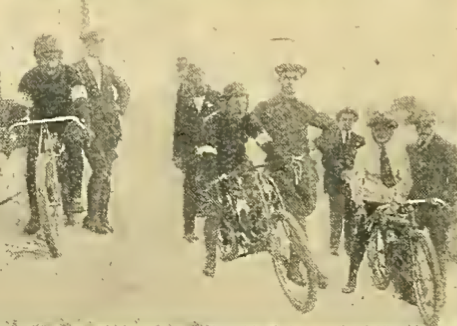
“TO COMBINE A LIGHTING dynamo with the magneto is, of course, ideal, especially when carried out with the simplicity with which the [US-made] Splitdorf dynamo-magneto is designed. There are two armatures placed one above the other, the upper one being that of the generator. The magnets used are not permanent, but are excited in the first case from current stored in the accumulators. To start the engine a few revolutions are obtained from the kick starter, and in doing so a small contact is put into action by means of a centrifugal governor. This allows current from the battery to pass to the shunt coils of the dynamo from which more current is generated, and the magneto magnets then become excited. The magneto works in the usual way, as the armature and contact breaker are quite orthodox. The whole unit is extremely compact, and when viewed externally differs but little from the ordinary magneto, but it is somewhat taller. Accessibility has been looked after throughout, and removal of a small cover at the top lays open the connection terminals for inspection. The brushes of both armatures are also easy to get at, and a small regulating coil is utilised for dissipating excess current, so that it is impossible for the batteries to become overcharged. The switch is one of the bayonet-jointed type, and for every notch engaged one lamp is put into action. It should be mentioned here that a small pilot lamp is used in the head light for town work. An ammeter is attached to the top tube, which can be viewed comfortably from the saddle. The dial is divided into two portions which denote the rate of charging or discharging respectively. The battery, which is known as the Elba, and is manufactured by. the Willard Storage Battery Company, is stowed away neatly behind the seat tube. The present lighting set, which is the only one in England, has been tested some 2,500 miles, and during that time has given no trouble whatsoever. The engine starts easily even when the battery is so run down that there is not sufficient current to operate the small pilot bulb in the head light.”


“MESSRS H COLLIER AND SONS, Ltd, of Plumstead, have added one more luxury to their already famous Matchless sidecar combination in the form of a Lucas electric lighting outfit. The generator is mounted in a very accessible position above the magneto, and is held by means of a specially designed bracket to the rear down tube. This bracket is so constructed that it can be fitted without any alteration whatever to any existing 1914 machine. The drive is by means of a chain operated by a sprocket on an extension of the magneto-shaft, and a casing is provided which totally encloses both the dynamo and magneto chains. An adjusting screw is provided at the bottom of the bracket by means of which the chain can be adjusted to the correct tension.”
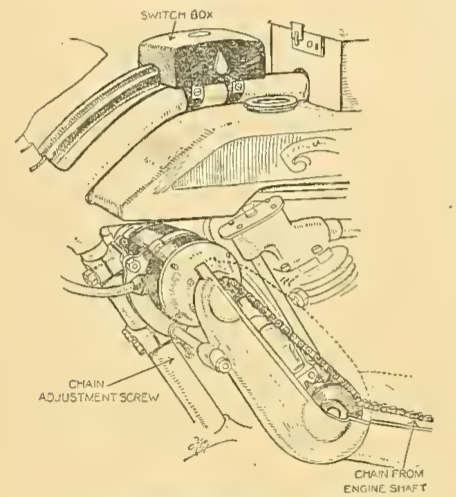
“THERE IS NO DOUBT that the ordinary wire wheel is very troublesome to clean, for the spokes are numerous and it is difficult to get at the hub; many motor cyclists will, therefore, be glad to hear of a wheel which very closely approaches the wire wheel in the matter of weight, and possesses none of the disadvantages just mentioned. The Starley wheel is the invention of Mr William Starley. Ten lugs are riveted to the rim, the latter being made as usual; over these lugs are placed the spokes, which in the centre fit into malleable wedge-shaped pieces like the ends of the spokes of an artillery wheel. For convenience of fitting, a certain amount of play is allowed between these pieces, and, when the spokes are in place, corrugated steel wedges are forced between these pieces from the inside, thus the whole is held firmly together. A groove is then turned in the centre and a liner inserted, which is spun into the groove. Next, a hub is put through the centre and bolted up with a flange on each side, the bolts going through alternate spokes. The spokes are formed from steel tube rolled to an oval section, but running to a point on each side. This gives great lateral stiffness, but at the same time the wheel has a certain amount of spring. The parts are all made of steel and polished before assembling, thus very little finishing off is needed, and, as no wood is used in the construction, the whole can be stove enamelled. Wheels made, in this way are absolutely true and very strong. The inside of the rim is unusually smooth owing to absence of spoke heads, the riveted lugs before mentioned being flush with, the inside of the rim. The weight of the wheel is very little more than the ordinary type, being 9lb complete. The wheel is made by the Jointless Rim Co, Long Acre, Birmingham, and is at present being tried by certain well-known firms with a view to adoption in 1915. It will be exceedingly in teresting to watch the develop ment of what may be termed artillery wheels for motor cycles. Since the advent of steel wheels on the Clynos in the Scottish Trials there has been a considerable amount of spade work done in this direction. There are also many possibilities about the disc wheel which was designed many years ago for use on pedal racing bicycles, one of the objects being the elimination of the air resistance of a large number of fast revolving spokes, the skin friction of the polished disc being almost negligible. “

“I HAVE LONG HELD that the problem of rear springing is the most vital of all that face the motor cycle designer,” Ixion wrote, “but I have made few references to the matter lately, because the trade seemed cynically impervious on this point. I return to it at last like a giant refreshed. I happen to have ridden a PV spring frame and a rear-sprung Indian within one and the same week, and the relief to my spine was enormous. Readers will guess from the length of my connection with The Motor Cycle that I am no longer in my teens, and the older one gets the more heartfelt is the muttered ‘Ouch!’ which is our normal benediction of a level-crossing or a particularly antediluvian pothole. I admit the worst that can be urged against existing rear springs; they are heavy, they may not appear beautiful, and they add to the cost of a machine. But the extra insulation they afford is most desirable. I live in a district of average roads, and once a week I ride five miles out and home to a golf club. Thrice in that distance I stand on my footrests to dodge the bang of a level-crossing, a half-filled drain trench, and a series of potholes where a foundationless road crosses a bridge over water meadows. For a whole mile of the distance my eye is glued to the road surface, for I know that the man-holes and drain lids protrude from one to three inches out of the worn macadam. Yet over the remainder of the journey I am always unduly conscious of the fact that I have a spine, and that my spine is constructed of short pieces like a speedometer driving shaft; are not the rough road and the rigid frame playing skittles with my vertebrae every inch of the way? Yet I am no weakling. I think nothing of 300 miles in the day, or of trebling the speed limit on a deserted road. There are millions of potential riders far more sensitive than myself. Does the trade realise what this means? It means that if one of the fiercely competing 500cc firms brought out an efficiently rearsprung machine I should ride it to the exclusion of every other make; and that thousands of similar individuals would be equally discerning and resolute. Does this tempt nobody?”
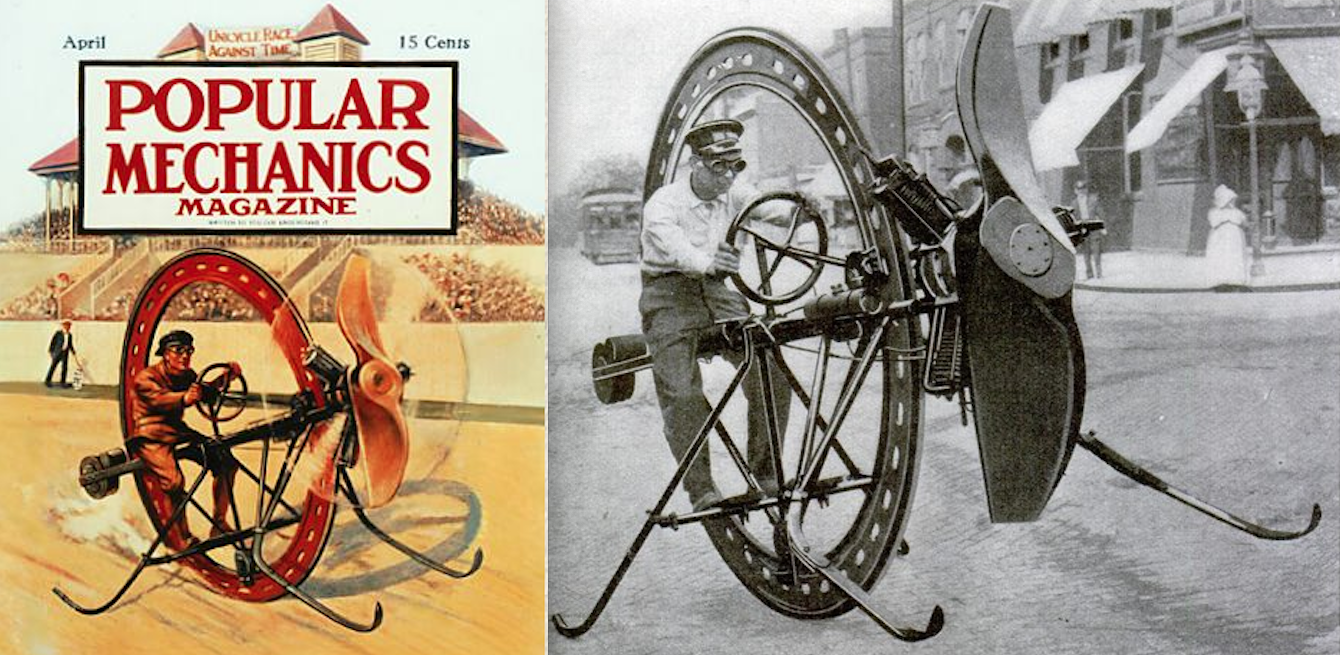
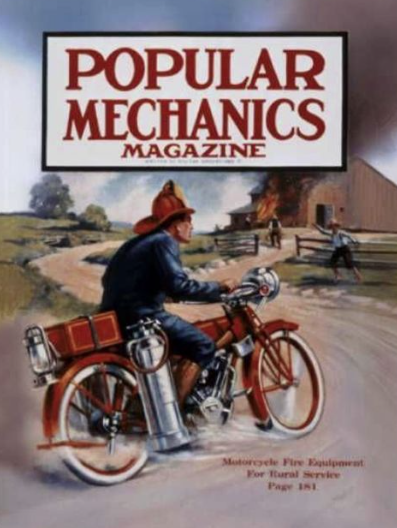
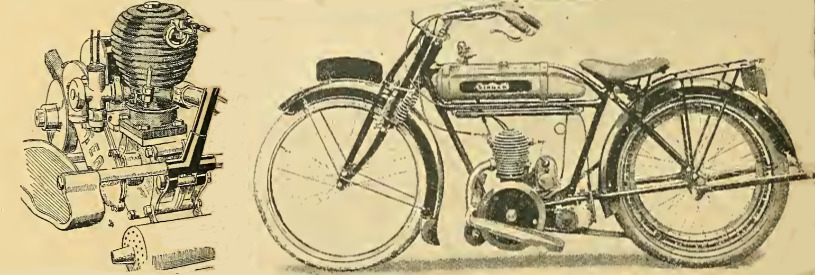

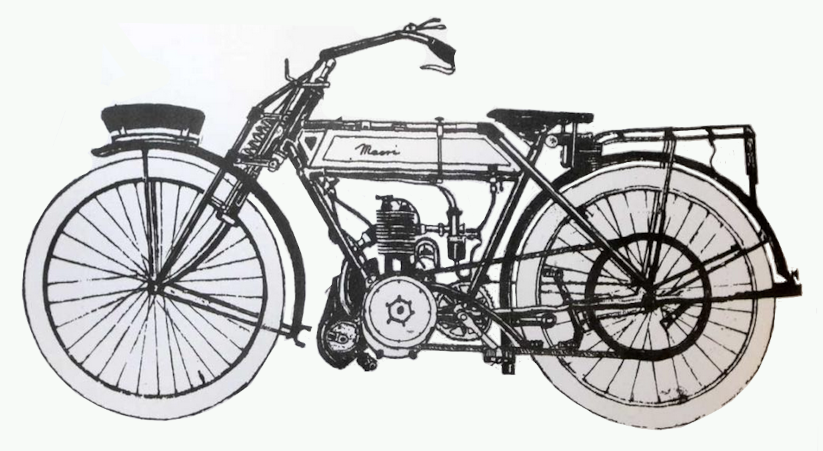
THE COVENTRY AND Warwickshire MC’s ninth annual hillclimb attracted 100 enthusiasts—The Motor Cycle reported: “The event was run off very smoothly and promptly but for unavoidable traffic delays, and no incident of any kind marred the procedings.” However, it noted: “Though ‘standard pattern’ machines were called for in Classes 6 and 7 [amateur and expert, standard touring machines up to 500cc], we regret to have to observe that standard machines were conspicuous by their absence, despite the splendid entry. Practically all were TT mounts; we do not recollect seeing a single standard chain case on the chain-driven mounts, there were no such things as footboards and pedals, and even silencers were dispensed with. We heard of no protests, however, which rather suggested that most regarded themselves as on an even keel with their rivals.” The biggest success on the day was the 1.9hp, 211cc Levis. Ridden by Messrs Veasey, Newey and Butterfield the little Levises were 1st, 2nd and 3rd in Class 2 (touring
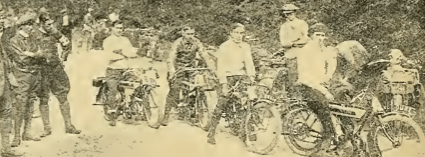
two-strokes up to 225cc)—and they repeated their hat-trick in Class 3 (up to 350cc). These were, in general, gentlemenly times. But sometimes the Blue ‘Un couldn’t resist pointing out its rivals’ shortcomings: “The Coventry and Warwickshire Motor Club have achieved fame as the result of their hill-climb at Style Cop last Saturday, first of all because it broke a period of club inactivity since the war began, and secondly because two motor journals announced the venue as Porlock! As Porlock is only about 160 miles from Coventry, it would be a distinct feather in the cap of even the modern machine to be able to go such a distance to a climb and back in a week-end. And what about the Auto Wheels?”

“WE ARE GLAD TO BE able to state that the FN Works at Liege have not been destroyed. Mr Kelecom, the chief designer and one of the principals of the firm, is at present in England, and he has assured Mr Gelder, the manager of FN (England), Ltd, that the works are intact and are being used as a German Red Cross Hospital.”
“A SIDECAR QUICK-FIRER: A FEW days ago we noticed in London traffic a machine fitted with a patent sidecar chassis on which a quick-firing gun was mounted on a special bracket. The usual type of body and springing had been dispensed with and in its place was an ordinary pan saddle with a motor cycle type of back rest. This was placed in such a position that the passenger on the sidecar could operate the machine gun whilst sitting there. The whole of the suspension was very carefully carried out. There was also a large number of cases of ammunition carried under the axle in a steel framework, which was suspended by several coil springs.”

ACCORDING TO AN officer in charge of Motor Cyclists Signal Sections, the comforts most required by despatch riders are warm gloves, scarves, and cigar lighters.
“WITH THE EXCEPTION OF aeroplane equipment, the first Canadian Expeditionary Force of 32,000 men, now on Salisbury Plain, is probably as completely fitted as any of the allied troops engaged in the European conflict. The mechanical section includes automobile gun batteries, motor ambulances, officers’ cars, repair shop vehicles, and, last but not least, an efficient motor cycle and bicycle corps. In addition, the 90th Regiment from Winnipeg has a decidedly interesting fighting accessory in the shape of a motor cycle machine gun unit, consisting of a 7hp two-speed motor cycle and sidecar upon which is mounted a modern quick-firer…the motor cycle and bicycle squad that has recently arrived in England will undoubtedly prove its mettle when the supreme test comes. The squad is made up of 32 motor cyclists, mostly from Toronto (the real centre of riding in Canada), and about 300 push cyclists gathered from many points. The Toronto motor cyclists are made up of crack dirt track racers and competition riders of note, several of whom are very prominent in local club circles. These staunch riders have the best of equipment for this, their greatest test of endurance. The 32 men have 50 brand new Indian 7hp two-speed machines at their disposal, 18 of which were not even uncrated before they reached England, and are being held in reserve in case of emergency.”
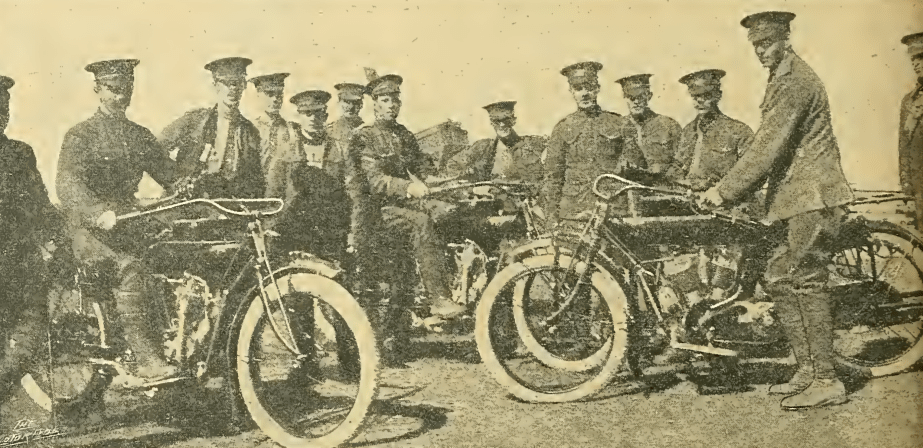
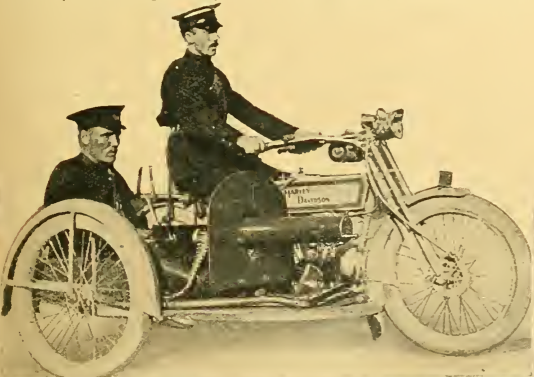
“THE IDEA OF FIXING a machine gun on a motor cycle is by no means new, and is even older than the armoured motor car. It was at the time of the Richmond Show in 1899 that the first motor cycle machine gun, consisting of a Maxim mounted on a trailer and towed by a De Dion tricycle, was demonstrated by Mr FR Simms, one of the founders of the Royal Automobile Club. At considerably later dates quick-firing automatic rifles have been fitted to the handle-bars of motor cycles, and have been demonstrated on TMCs and Scotts, and even exhibited at the Olympia Show. We think that there is a distinct future for the machine gun fitted to a motor cycle and sidecar.”
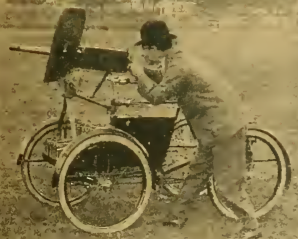
“LAST WEEK A STATEMENT was made in one of the evening papers to the effect that the capital of the Triumph Cycle Co Ltd was mainly German, and that the shares were mainly held by Germans. We are informed by the Triumph Co. that this is an absolute misstatement. Over 95% of the capital is British, and in the hands of British subjects. Those who know the Triumph Co scarcely need reassurance in tliis matter, and there is no doubt that they have done more for the British motor cycle industry than any other firm in this country, because they stuck to the manufacture when the motor cycle movement was at its lowest ebb, and when other cycle firms were dropping out of it.”
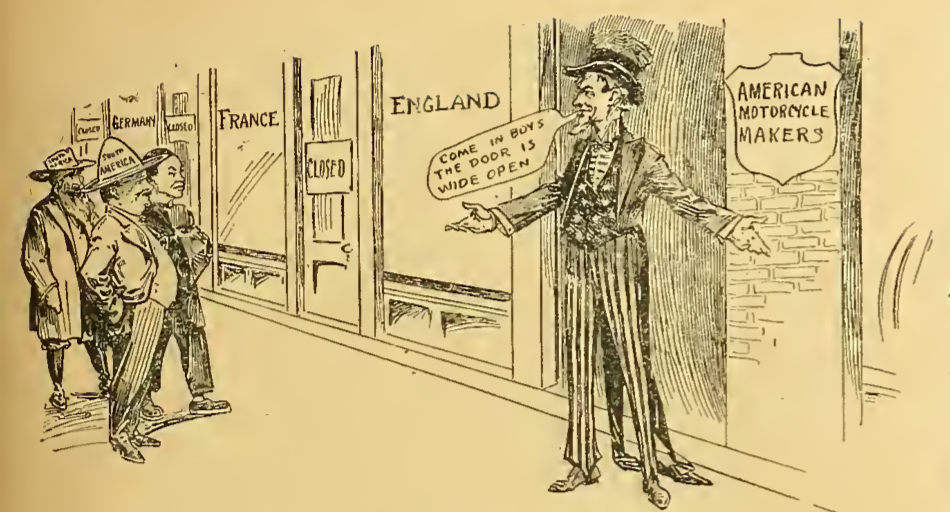
“SINCE THE DECLARATION of war police trapping has almost entirely ceased…due to many motor vehicles being used in the service of the Government, and owing to the police force being depleted through many of its members being called out to join the Reserves in both the Navy and Army there has been no one to work them. It is indeed pleasant to think that the roads are as free and open in this country as they are in France, but we most earnestly beg motor cyclists not to take unfair advantage of their present immunity…There have been numerous cases of fast driving in places where fast driving is dangerous, and we would therefore earnestly impress upon motor cyclists the necessity to drive with due caution in places where caution is necessary. Taking advantage of an opportunity like the present is not playing the game.”

“A LUCKY ESCAPE: Dr Low and his brother were recently working in their laboratory, when someone fired two revolver shots at them through the window. Fortunately both shots went wide and no damage was done. The man who is alleged to have been responsible for this dastardly attempt at murder has been arrested. He is, we regret to say, an Englishman. Dr Low has been busily engaged in Government work lately.” And, a few weeks later…”That inventive genius, Dr AM Low, has been doing much work for the Government lately, and recently inspected a new rifle and sent a report of it to the War Office. A man of German nationality, purporting to be the secretary of the inventor, called on him the other day and presented him with a cigarette, which, on being subsequently analysed, was found to contain a sufficient quantity of strychnine to be dangerous, if not fatal.”
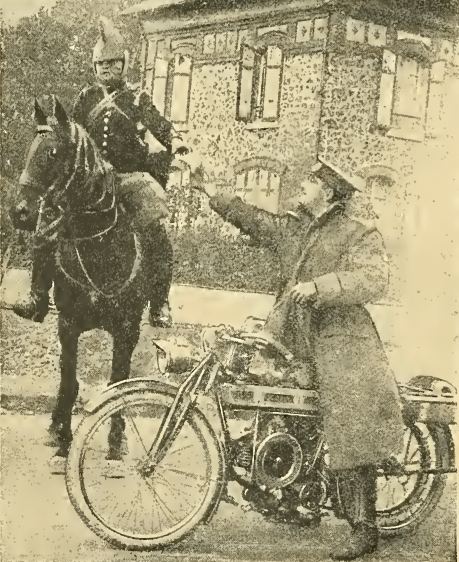
“FROM MOTOR CYCLES TO AEROPLANES: Harold Karslake, now Corporal H Karslake, of the Royal Flying Corps, writes us a cheery letter, saying he is hard at work preparing a squad of aeroplanes for service at the front and that he expects to go with them. His experience in turning air-cooled engines has stood him in good stead in tackling the somewhat difficile Gnome motors, and he says many little racing tips from motor cycle practice are applicable to the Gnome. Incidentally, he mentions that two foreign spies were captured at Brooklands last week and their car commandeered.”
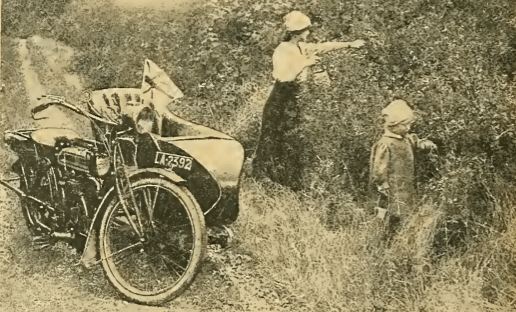
A “CORPS OF SPECIAL RESERVE motor cyclists” was established at Chatham. One of the recruits reported on his experience: “…several men were detailed off for fatigue work, which consisted of going down to the railway station with the traction engine and waggons and loading them up with crates containing new machines, all Rudge Multis and three-speed Triumphs. Our equipment was very complete, and consisted of the follow- ing, among other, articles: Large clasp knife, haversack and water bottle, two pairs of good strong boots, two shirts, three pairs socks, toothbrush, hairbrush, shaving brush and razor, boot brushes, magnificent Webley revolver, Cardigan waistcoat, and many other excellent things beside. As uniform we got the ordinary tunic with corporal’s stripes, riding breeches, puttees, service cap, and brown leather belt with holster for revolver and case for ammunition. We went to bed that night with feelings that we were lucky mortals indeed falling in with all these good things. Of course, we had to face the fact that motor cyclist despatch riding is dangerous work, but for the matter of that all volunteer work at the front is dangerous, and on comparing our lot with that of the infantry volunteers we could not help feeling that fate had been indeed kind…along with others we were sent on fatigue duty, which consisted of unpacking the crates and fitting up the new machines. We set to work with zest smashing up crates and extracting brand new machines, which came forth glittering and shining masterpieces of modern mechanism. From other boxes came hordes of lamps, horns, mirrors, spare tubes, spare belts, spare tube carriers, etc, etc, etc, and it was our job after unpacking to fit each machine up with these. My friend and I, seeing our advantage, each picked out a machine which we intended, if in any way possible, to secure for ourselves, and we set to work fitting these up. To a man who has never been able to afford a new machine you can imagine that this sort of thing would be like a dream, and we both hoped we should not suddenly ‘wake up’. Later on in the day we had an opportunity of allotting the mounts we had chosen to ourselves definitely…Some men were sent to Stirling, others to Limerick. We were both sent to the same company at Aldershot, and so started off for the great military centre that evening on our new mounts, full of zest for our new life…”
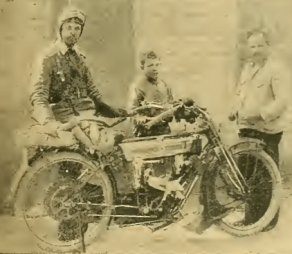
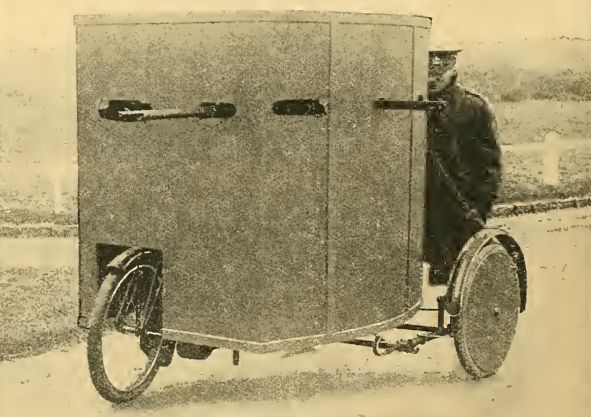
“WE UNDERSTAND THAT Cyril Pullen, who won the Senior Tourist Trophy Race this year on a Rudge-Muiti, is now serving as an air mechanic in the Royal Flying Corps Sub-depot, Sheerness. A large number of well-known competition riders are acting in the same capacity.”
“WE UNDERSTAND THAT Messrs Phelon & Moore have been ordered to supply 200 of their motor cycles to the Russian Government for military purposes immediately…The Belgian Government last week placed an order with the Enfield Cycle Co for 50 3 hp Enfield motor cycles for the use of despatch riders.”
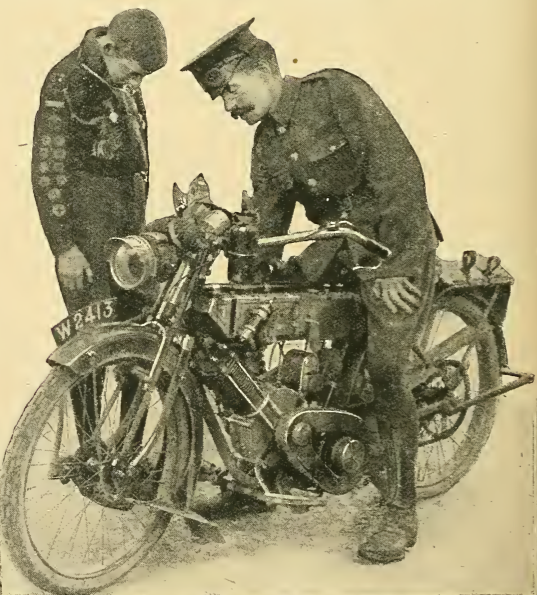
ENFIELDS FOR THE FRONT: The Belgian Government has just placed an order for 50 3hp Royal Enfield motor cycles, and the machines were despatched to the front at once. We believe that this is the first Government order in this country for V-twin machines, and from what we know of the Enfield from personal experience, we should say that the Belgian Government will have no reason to regret their choice.
“PROBABLY NO CLASS OF young man is more eminently adapted for warfare than the average motor cyclist. He is, in the main, young, sound, and, by virtue of youth, generally free frm family responsibilities. We feel that, although much has been done by motor cyclists to assist the Army, more might yet be done. Most of these young men belong to a class with possessions worth defending. Let them then defend them. The noble response made by the working classes, who are not blessed with much of this world’s goods, should set a shining example to these more fortunate young men.”
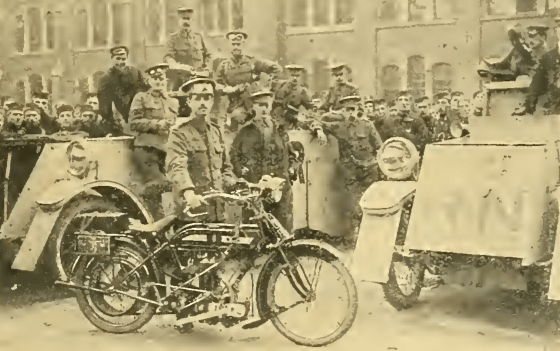
“THE AUTO CYCLE UNION has been approached by the First London Machine Gun Battery for assistance in the enlistment of 50 motor cyclists. The battery is a privately raised force which will be attached to a battalion, which is probably leaving for the Front within a month, and is at present in camp at Wembley Hill. About 25 men are required as motor cyclist despatch riders, and the remainder will be required to be equipped with sidecar machines, which may also be needed to pull machine gun trailers. The men will be required to enlist for three years or duration of war, and must provide their own kit, which will cost in each case about £5. The machine will be taken over on the ordinary War Office terms. Motor cyclists desirous of joining should apply for further particulars to the Recruiting Office, 104, Victoria Street, London, SW.”
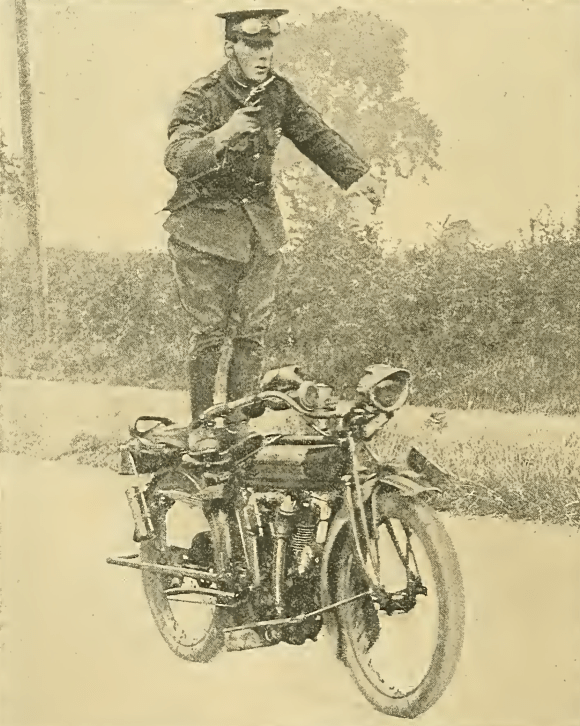
“WE HAVE RECEIVED A LETTER from the 25th County of London Cyclists’ Battalion, Fulham House, Putney Bridge, SW, which reads as follows: ‘I beg to announce that the makes of machines accepted by the War Ofiice have been limited to the following: Douglas, Triumph, P&M, Rudge, Rover, BSA, and James (single-cylinder). Hugh BC Pollard, Inspecting Officer, London Motor Cyclists’ Reserve Committee’.”
THE TIMES REPORTED: “Where the Germans obtained their vast army of motor cars and motor cycles might at tirst be thought a mystery, but out of the fifty that the writer saw gathered before the head quarters over one half were of foreign make, there being many English and a few American cars among them. There are with every brigade motor cyclists, many possessing English and American motor cycles.”
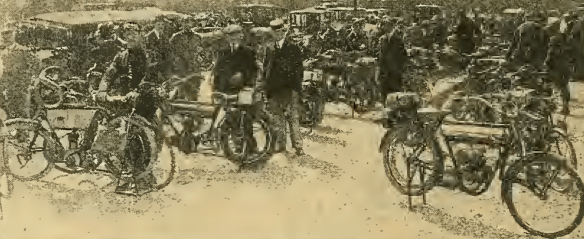
“AS SHOWING THE CARE exercised by the authorities in guarding the roads, we hear that W Whitaker. a member of the Woolwich, Plumstead &DMCC, was stopped no less than 21 times on a recent journey from Dover to Woolwich. Near Ashford he noticed a steam roller held up, and the driver and his mate asked to prove their bona fides.”
“I ILLUSTRATE HEREWITH the type of adjustable tappet employed on a certain foreign cycle car,” Ixion wrote. “As the sketch shows, the tappet is very cheap to make, and the adjustment is made without the aid of tools by the sub- stitution of a thicker capping disc. I think it is preferable to the usual type of adjustable tappet, which embodies two or three nuts, and is a fiddling thing to set.” Shim tappets…I wonder if they caught on?

THE COMMERCIAL INTELLIGENCE DEPARTMENT of the Board of Trade reported that South Africa was Britain’s most valuable export market. “The value of the imports of motor cycles from all sources to that Union from 1908 to 1913 are: 1908 £10,634; 1909, £12,743; 1910, £22,032; 1911, £72,938; 1912, £154,236; £1913, £223,524. The United Kingdom has been far the greatest exporter, and her share of the trade represented by the figures above has been over 90% for the past four years…Our American rivals are keenly seeking to fill this valuable market, and Japan is another country where they have actually made headway at the expense of the British manufacturers. The British Commercial Attache at Tokio, in his report on the trade of Japan in 1913, states that the value of the imports of motor cycles was only £6,900 in that year, as compared with £9,800 in the previous year. The imports from the United Kingdom diminished by £2,800, while those from the United States and other countries increased. This seems a market which our manufacturers might well seek to regain.”
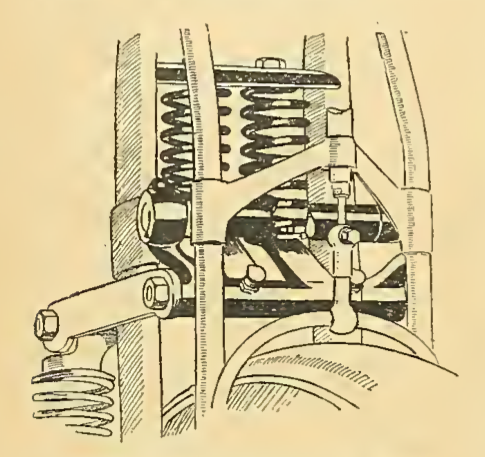
“THE DRUID SPRING FORK, the most extensively used shock absorber on motor cycles, has stood the test of nearly ten years’ use in practically every country. How well we remember early in 1906 the late Mr A Drew calling at our offices with one of these forks attached to a 3hp magneto Singer, and demonstrating its efficiency to us on a piece of rough paving near our offices. Now, nearly ten years later, an improved type of fork has been introduced, with the object of overcoming the dithering or bouncing action which users of Druid forks well know occurs when striking a rough stretch of road at speed. The characteristically neat appearance of the Druid fork has been in no way affected by the provision for combined action of the forks—which is the feature of the latest design…The top links are attached as usual, but the forward ends of the lower links, instead of being pivoted to the main fork, are attached to a iioating bar which is pivoted to the fork at the bridge piece, its movement being governed by a pair of coil springs acting on arms formed with the floating bar. The construction, therefore, permits of a slight forward and backward movement of the wheel, while the normal Druid up-and-down motion is retained in the usual way. A neat bridge piece is formed to take the brake stop, and the shoes are arranged to permit of quick detachment of the front wheel.”
“IN THE COURSE OF their march through Belgium the Germans levied blackmail, as is well known, on various towns. Ghent, in addition to being ordered to supply a large number of cigars and barrels of petrol, had also to supply ten motor cycles. We hope they were not in perfect running order!”

“TERRITORIAL MOTOR CYCLISTS: Within seven days of the outbreak of hostilities the Territorial units were all filled, and in addition a large number of motor cyclists were on the War Office waiting list. Also, the ACU has a list of 1,500 motor cyclists indexed in the various localities in which they reside, and from which motor cyclists can be supplied as requiied. The Liverpool oflice of the ACU has supplied a large number of men for tHe Mersey defences. Indeed, so great has been the Response that it is unlikely that many of the riders who have offered their services will be required, and our readers are advised to seek other outlets for their patriotism, eg, the firing line, where it is reported that the coveys of Germans are very numerous, well grown, strong on the wing, and likely to provide excellent sport.”
“WHAT NEW ZEALAND CLUBS ARE DOING: Immediately on receipt of news that war had been declared between England and Germany the respective secretaries of the Pioneer Athletic and Bicycle Club (Motor Section) and the North Canterbury MCC wired the Prime Minister of Dominion (Right Hon WF Massey), offering the services of the clubs to the Defence Authorities. These offers have been accepted, and members of the clubs appointed as despatch riders. The Pioneer Club also decided to hold a rally to collect moiiey, etc, by motor cycle and sidecar rides in aid of the Patriotic War Fund. The fund is mainly to help to provide equipment for members of the Expeditionary Force, and to maintain those dependent on the volunteers for the force.”
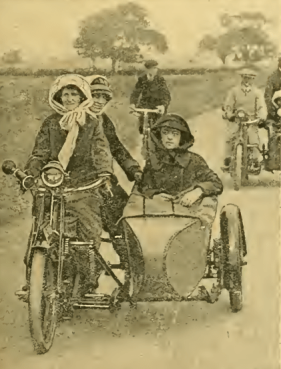
FAMOUS CHAIN MAKER’S ADVICE: Mr Hans Renold, addressing his workpeople and office staif the other day, said that there were two ways in which a man could be of service, one was to slioulder a rifle and take his place in the ranks, and the other was to keep the business of the country going and thus contribute to the support, not only of those who were fighting, but also of their dependents who were left beliind. He urged eveiy young man without ties and family responsibilities to volunteer immediately.
“MOTOR CYCLIST AS RANGE FINDER: The Express relates a stirring story of the earlier stages of the battle of the Aisne. A motor cyclist dashed almost within touch of the German troops in order to ascertain the accuracy of our heavy gun fire. Speeding back unscathed, he reported that some of the shells were falling some four hundred yards short. The range was then corrected with deadly effect. Later in the day the same motor cyclist had his machine literally blown to pieces from under him by the bursting of a shell; the rider was wounded, but escaped death by a miracle.”
THE PRESS ASSOCIATION REPORTED: “The fine work of the volunteer British despatch riders has called forth the warmest praise of the Allies’ commanders, who have been enabled through their services to maintain a constant communication along the huge front, extending about 240 miles from the Somme to the Moselle, and along the frontier of Alsace Lorraine. Many of these young fellows are just fresh from the Universities, and have had no previous military experience, but they show remarkable dash and bravery while travelling on motor cycles through country infested with enemies. Yesterday an Australian youth from Cambridge, while speeding along a country road, met a party of 14 German cavalrymen. He was unable to turn, and drew his revolver and shot down an officer and one man. The others turned and fled, and the despatch rider was able to deliver his despatch, which informed a corps commander that Germans were in the vicinity, and thus prevented what might have been a disagreeable surprise. One member of the corps has been promoted from corporal to lieutenant in three week.”
“QUICK DELIVERY: WE LEARN from Messrs Douglas Bros that on Saturday last they received an order from the War Office for 90 motor cycles, and that the whole of these were duly delivered by the following evening.
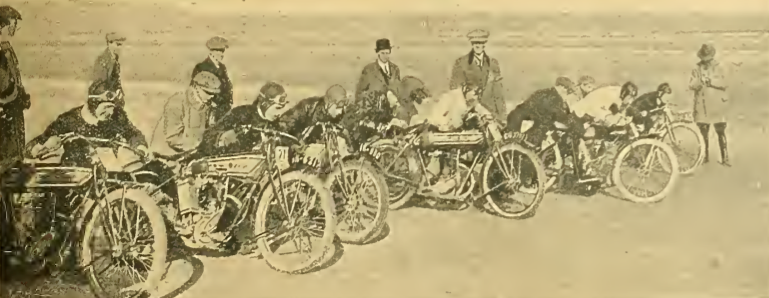
“THE VICTORIA MCC HELD A 25 mile road race in the form of an ‘Out and Home’ race between Cragieburn and Wallace on the outskirts of Melbourne, when record speeds for Australian motor cycle racing were established by Eric Tyler, who finished first on a 7hp Indian in 23min 55.2sec, the average speed being 63mph. The race was run as a handicap and 20 started, the limit man being C Kelynack (2¾hp Sunbeam), who was allowed 4½min start. RE Dowel (8hp JAP), E Tyler (7hp Indian), J Booth (7hp Indian), and H Jenkins (7hp Indian) were the scratch men. Probably the fastest machine in the race was Dowel’s JAP, but unfortunately this rider was involved in a most serious smash. This occurred through the risky method of running the race; owing to the ‘out and home’ nature of the contest, the competitors occasionally met each other at high speed. Dowel and Booth had arrived at the turn at about the same time, and rapidly gaining on some riders in front were soon in their dust, and when travelling at a speed of about 65mph met a rider named Thornton travelling in the opposite direction. Their handle-bars locked, with the result that the riders were thrown with terrific force, both of them being flung 10 or 12 yards away by the force of the collision. The two machines remained locked for an instant, and Booth, who was following, was in great danger of becoming sandwiched between them, but luckily in the nick of time the machines opened out and he got through. However, expecting a severe smash he tried to jump off his machine, with the result that he turned a complete somersault, pitching on his head. Luckily he was wearing a padded safety helmet, which saved his life, though, of course, he suffered from severe shock, and he and Dowel and Thornton had to be removed to hospital. Tyler (7hp Indian), the ultimate winner, rode splendidly throughout, and won by about a mile and a quarter from Jenkins, while close behind was Parsons (3½hp Precision), who finished third with 2min 30ssec start. His Precision was easily the fastest of the single-cylinder machines, and as this was his first race his performance was remarkably good. The final results were: 1, E Tyler (7hp Indian), scratch, 23min 55.2sec; 2, H Jenkins (7 h.p. Indian), scratch, 25min 3.4sec; 3, H Parsons (3½hp Precision), 2min 30sec start, 28min 0sec.”

“THERE WAS NEVER any doubt that the greater the number of ratios a gear possessed, provided that the gear were not complicated and unreliable, the more suited it became to the needs of motor cyclists. Experience has proved that just as the two-speed gear is streets ahead of a single gear, so is the three-speed superior to the two, and now there are indications that the four-speed gear is to receive well-merited attention at the hands of manufactiners. The first of these ready for inspection is the Jardine, made by John Jardine at the huge factory in Nottingham, where a portion of the works and special plant have been set aside for the manufacture of the 1915 model gear. The beauty of the latest gear is that the extra ratio has not been obtained at the expense of complication; in fact, the same number of gear wheels are embodied in the construction as in the three-speed gear, and the additional ratio has been provided by utilising the kick-starter gear and wheel carrying the ratchet, as driving gear wheels. Thus, by a smart piece of designing four ratios are obtainable with the complications of three, but that is not all, for in the latest box the whole of the parts, including kick-starter mechanism, are enclosed in an aluminium case formed in one piece, so that escape of oil is impossible, which npt only spells economy in oil but also a clean exterior casing…two neutral positions are provided, viz, between The first and second, and third and, fourth ratios.” Just as the Brits were moving from three to four speeds the Yanks were moving from two to three. Harley Davidson produced a three-speed box for its 11hp 989cc twin, which was joined by a 6hp single.
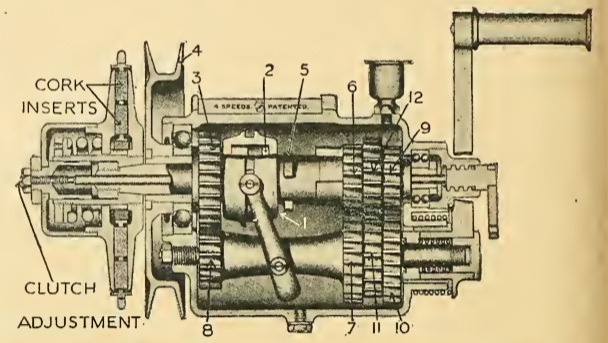
“THE RUSSIAN GOVERNMENT has lately been occupied in buying a number of motor vehicles for the use of its army… One of the Russian military motor experts, Captain Vladimir Avelevitch Mgebrov, asked or a number of machines of well-known makes to be presented at the Hotel Cecil…The trials lasted several days as the makes included Sunbeam, Humber, Triumph, P&M, Douglas, James, Indian. Matchless, Premier, Enfield, Chater-Lea, Rudge, and Bradbury…The Russian Government representative proved himself to be an excellent sportsman and tried several of the solo machines by riding on the carrier and making them take him up the more severe gradients…James, Premier, Sunbeam, Chater-Lea, and Humber were successful in obtaining valuable orders, and these have to be executed in three weeks or less, so that they may arrive at Archangel before that port is closed by ice for the winter months.”
“THE RUDGE COMPANY and, it is said, the BSA and Indian companies, have in hand orders for motor cycles for the Russian Government. The terms of the Russian Government’s orders are extremely severe. Though a certain supply of spare parts are ordered with each batch of motor cycles, these must not be touched for two months, and should any part of a machine give out within that period, the Russian Government exact a penalty amounting to ten times the makers’ list price of the defective or broken part. There is a likelihood of a number of well-known riders spending their winter in Russia looking after the army motor cycles.”
LAST WEEK A PARTY OF MOTOR CYCLISTS, now in training at Bisley, were sent to Woolwich to fetch 18 Scott sidecars with quick-firing guns, such as we have illustrated. The procession of so many armoured sidecars through the suburbs of London naturally caused a sensation. The journey was successfully accomplished, though several of the motor cyclists had never handled a Scott before. One managed to bowl a dustman over.


“WE RECENTLY HAD AN opportunity of inspecting a particularly fine sidecar outfit on which a quick-firing gun is mounted, Mr FV Barnes, of the Zenith Company being responsible for the design of the sidecar chassis. The sidecar is constructed throughout of straight tubes and is immensely strong. In the centre is a column supporting the gun, on which it is pivoted, providing an ample amount of lateral movement. A locking device holds the gun in position, so that it is held rigidly until its use is required: the gun may be worked either ahead or astern, as by undoing the locking screw referred to the gun may be lifted out, turned completely round, and used in the reverse direction. When the gun is in action a ‘spade’, which is hinged to the near side sidecar member, can be let down so as to hold the combination steady while the gun is being fired. If the sidecar is lifted up and the leg pushed forward it makes an efficient sidecar stand.”
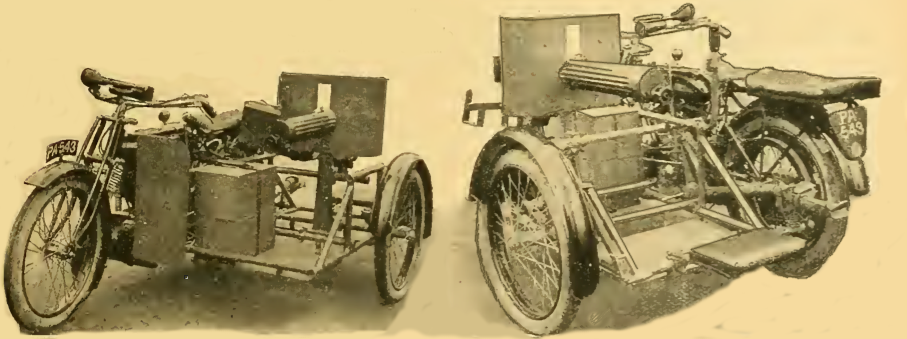
PREMIER PRODUCED A SIDECAR outfit designed to carry a machine gun. “Hitherto, the sidecar machine guns which have been utilised for service have been pleasure type vehicles adapted for the conveyance of a light machine gun, but the Premier product ia specially designed throughout for the work in view. Mounted upon the ordinary chassis is a sub-platform supported on large diameter coil springs, a metal tray extending its whole width. A most novel feature of the Premier war implement is the snap security for the legs of the tripod on which the machine gun is mounted. By depressing a clutch pedal the claws securing the feet are released, and the gun complete with its tripod can be re- moved quicker than it takes to tell…The ammunition tray swivels together with its ammunition as the gun is moved, which simplifies the rapid feed of the gun.”
THE AMOUNT OF INGENUITY displayed in designing the quick-firer machine gun sidecar combination is quite wonderful. The latest addition to the already imposing fleet of these flexible instruments of war is that turned out by Messrs H Collier and Sons, Woolwich, SW. The Matchless combination has a specially-built sidecar frame of great strength, and on it the gun is mounted on its own liipod, a most important matter, as it enables it to be quickly detached and carried anywhere with the greatest ease and celerity. The ammunition boxes are carried in a case on which the gunner’s saddle and footrests are situated…The gun is mounted high, and can be easily worked from the sidecar in practically any direction.
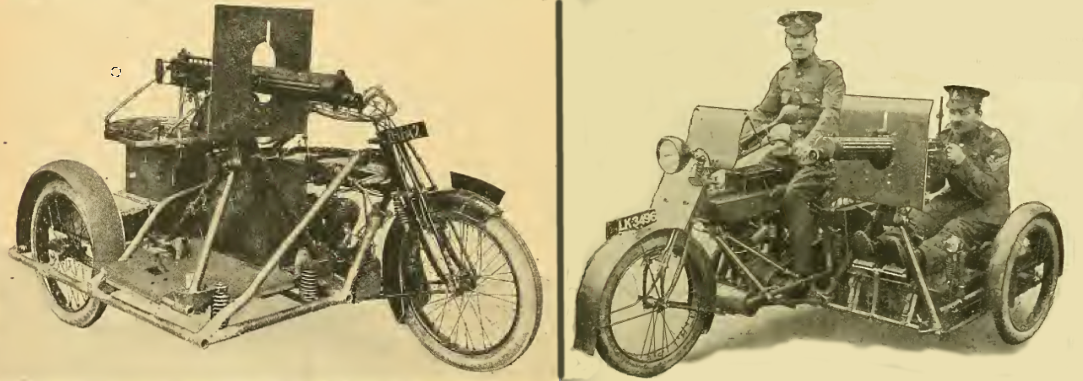
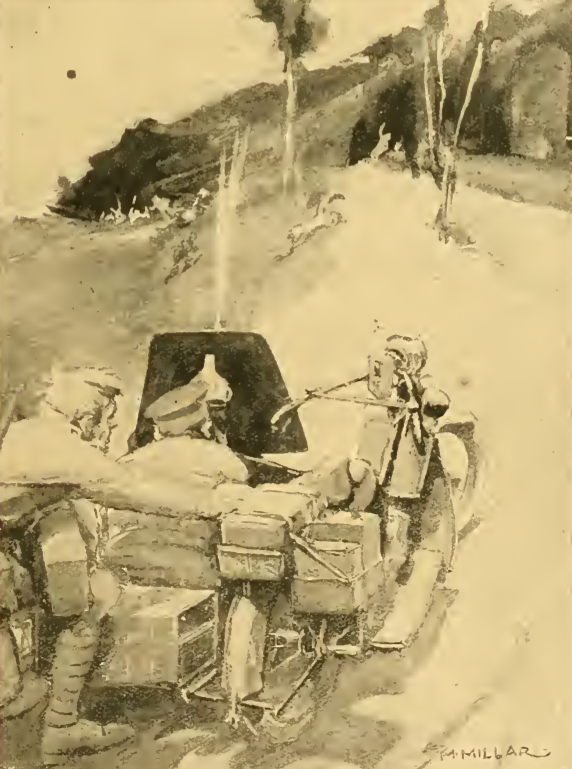
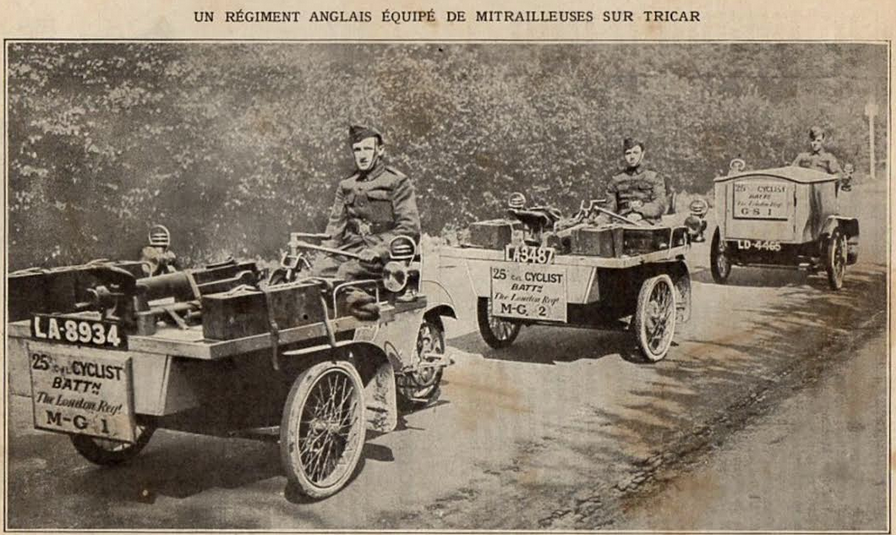
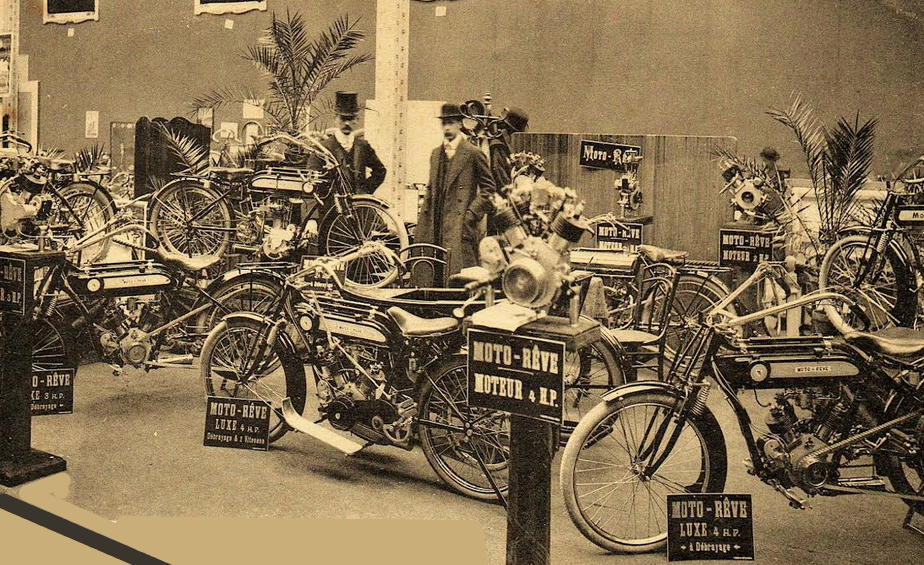
“IN ADDITION TO THE 1,652 motor cycles, referred to in our last week’s issue which have been ordered from Coventry firms alone for the Russian Army, we are advised that the James Cycle Co have practically completed an order for 260 machines spread over their 4hp big single and 3½hp twin models;260 machines represented the most the James Co. could turn out in tho limited time stipulated. Messrs, Phelon & Moore, too, completed last week their batch of 100 machines, which was exactly half the number of the original order. Owing to the imperative demand of the British War Office, Messrs Phelon & Moore were obliged to curtail the number of machines called for by the Russian Army. Incidentally, 70 more P&M machines have just been supplied to the Royal Flying Corps…American manufacturers were hot on the scent of the Russian Government order for motor cycles, an enquiry for 900 machines being circulated in the States. We are given to understand, however, that the whole order for over 2,000 motor cycles was finally placed in this country.”
A LARGE ORDER FOR COVENTRY: Coventry firms have reason to congratulate themselves upon the order for motor cycles received from the Russian Government, which is as follows: Rudge, 3½hp, 400; Rover, 3½hp, 550; Humber, 3½hp, 300; Triumph, 4hp, 300; Premier, 3½hp, 300; Premier, 9hp, 12…The New Hudson Co, of Birmingham, and the Clyno Co, of Wolverhampton, were also favoured with large orders.”
“THE MILITARY AUTHORITIES in Russia having requisitioned for the war a large number of motor cycles, the members of the Moscow Motor Cyclists’ Club, over 100 in number, have almost to a man been left without machines. Winter riding in Russia is almost impossible, but in the early spring there will be a great demand for English machines. A number of influential members are at present formulating a scheme for the purchase by the club of a large number of English machines on co-operative principles, for the benefit of the members, and those manufacturers who are interested in export business would do well to send to the secretary, whose address is the Moscow MCC, Khodinka Pavilion, Moscow, Russia.”
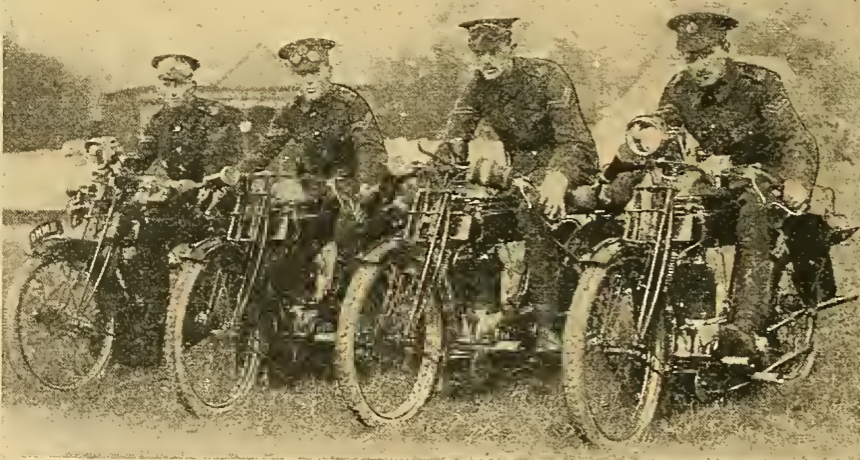



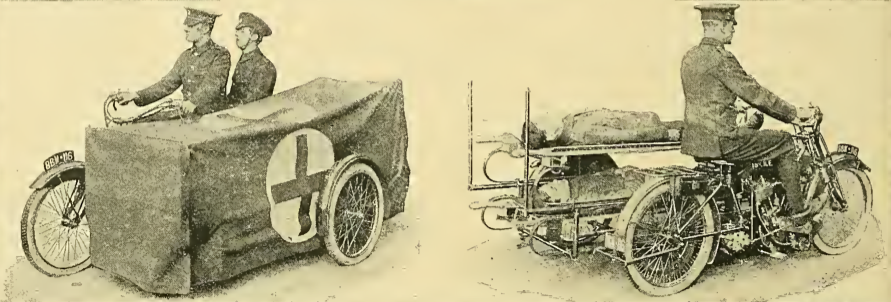
“FROM THE REMARKS OF a contributor, we shall see how vastly the organisation of the French motor cyclists differs from our own, and how much France has suffered from neglecting the pastime which we British have so zealously nurtured during the last twelve years: ‘We wear uniforms of all branches of the Service,’ our informant writes, “though our own is a close-fitting blue jacket with four pockets and a low collar, on each corner of which there is a motor cycle in red cloth, while on the arm is the letter ‘A’ (Automobile). The breeches are of red, and puttees blue. On the whole, it is a fairly practical outfit. But as there were too few ot these uniforms, many wear that of the artillery—a short tunic reaching to he waist with no pockets, which is most inconvenient…We are all armed with cavalry carbiires slung round the shoulder, and carry a bandolier with cartridges, three in each clip. In winter we wear an infantry cape, in which the pockets are inconveniently placed behind the garment…Despite all our troubles, we motor cyclists are in excellent spirits. After our long rides at this time of the year, and the many side-slips we have, we return wet and muddy, and yet find time to amuse ourselves in various ways…Unfortunately we have no motorcyclist officers like our English friends, a point on which I lay especial emphasis, because, unless a man is an active rider, he cannot adequately realise the conditions…When we meet our good friends, the British motor cyclists, we greet them with a hearty handshake, and exchange souvenirs in the shape of buttons and pots of jam. We greatly admire the English machines, especially as regards their comfort and the excellence of detail in the smallest accessory…The most cordial relations exist between the British and French motor cyclists…French motor cyclists are probably as good mechanics and as good riders as their English comrades, but our manufacturers have turned out motor cycles without gears or clutches, which did not matter so much in August and September, but since the roads have become muddy through the rain and cut up by the artillery, the machines, slowed up by convoys, knock themselves to a standstill on the slightest pretext…The repairing of the machines is grossly neglected, and none of the mechanics attached to the artillery workshops understand motor cycles. These repair lorries are mere accessory stores, and have not the tools for repairs, while those of our English friends are excellently equipped, and one of them turned out the other day a complete crankshaft for a car belonging to our staff. Not a bad performance I fancy! The worst of it is the French motor cycle corps was organised in a hurry at the moment of mobilisation. We have all types of machines—English, French, German, and Belgian—as well as several nameless mounts constructed from parts coming from goodness knows where. And the trouble of getting spares, the delay and the amount of red tape involved are appalling. The best foreign machines are the English, which are greatly admired, as are also the officers in charge of the riders. The makes I saw most of were the Triumph, Rudge, BSA, and P&M, and I was especially taken by the Douglas, owing to its easy starting and the way it holds the road in the grease. I wish I had one of these most attractive machines. The other day one of our men captured a Wanderer from the German Army. This is now used to carry news to the allied troops, to whom Victory will soon hold out a crown of laurels.’.”
“WE HAVE HAD AN INTERESTING letter from Mr Glynn Rowden, who is at present driving a motor ambulance in France. ‘The motor cyclists,’ he says, ‘are doing splendid work in carrying despatches, but their task is particularly arduous owing to the heavy traffic, as the roads are one long fog of dust. When wet the roads are inches deep in slime and mud. Bent handle-bars, footrests, broken spokes, and lamps are evidence of the difficulties and dangers to be faced. Rims should be stronger and mudguards should be made with greater clearance, as the mud at times completely jams the wheels. Punctures are very numerous, most of them being caused by hobnails from the boots of peasants. The French machines are a long way behind the times, and most have no exhaust pipes or silencers. I saw a French soldier the other day start his machine on the stand and then run, with the engine still firing, and jump on, trailing the stand behind him. There is not much chance to do repairs, and machines, if they go wrong, are scrapped and replaced by new ones. I have just had a chat with a despatch rider who has been bayoneted by a German, and on another occasion had both tyres punctured by bullets, while one night he had a bad spill through being thrown in the darkness owing to a hole caused by a shell. The counter-shaft gears are most suitable for work over here, while extra strong frames and a very low riding position are necessary. The machines doing the best at present are Douglas, P&M, and BSA.’.”
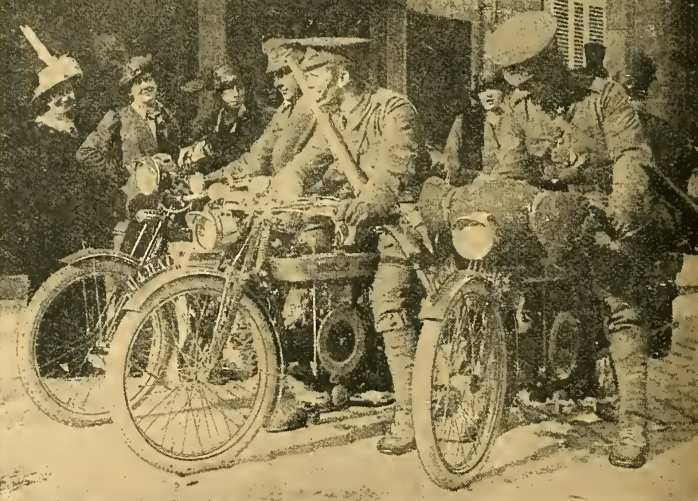
“WE UNDERSTAND THAT THE War Office has revised its list of machines which will be accepted for service. This is now as follows: Triumph, Rudge, BSA, Douglas, and Phelon & Moore. Should suitable applicants not be in possession of either one of the above-named motor bicycles, which must not be earlier than 1913 models. Government motor bicycles will be provided.”
“THE LIGHTING OF EVEN motor cycles has to be reduced before they are allowed to enter the Metropolis…Last week we heard of cases in which the police actually whitewashed the lamp glasses of motor cycle head lights before their owners were allowed to proceed into town.”
THE AA ERRECTED ITS FIRST illuminated road sign, on top of one of its roadside phoneboxes at London Colney. It “should remove all danger of motorists getting into difficulties at this point when driving towards London after dark”, the Blue ‘Un remarked.
‘WIZARD’ O’DONOVAN (NORTON) ended the year as 500cc record holder with a 81.05mph flying kilometre. S George (Indian) held the 1,0900cc flying kilometre at 93.48mph.
MORE THAN HALF THE ACU’S clerical team had joined up; the ACU topped up their military pay to their original salary. And ACU secretary TW Loughborough wrote: “I feel sure that my committee will willingly waive all claim to any fees in respect of those honorary club members now serving their country.”
“IT IS A THOUSAND PITIES that Mr AV Roe is so busy constructing aeroplanes for dropping bombs on Germany’s aeroplane factories,” Ixion remarked, “ for he is the only engineer who has ever tackled the weather-proofing of motor bicycles in a genuinely sensible fashion.”
“THE DUBLIN &DMCC HELD ITS annual dinner last week, the new president, Mr Gam Curtis being in the chair. The first toasts were ‘The King’ and ‘Absent Members Serving their Country’. It was announced that the club had adopted ‘Carry On’ as a motto, and that it was intended to run off as comprehensive a programme as heretofore.”
“JUST TEN YEARS AGO there was run off a race in France at St Arnouct, some forty miles from Paris, in which a mere handful of competitors took part, but which was destined to be the origin of properly organised international road racing, and a direct forerunner of the Tourist Trophy Race. This was the International Cup race, which was competed for by five nations—England, Germany, France, Denmark, and Austria—11 riders in all. Rignold, Hodgkinson, and Silver formed the British team, and any chance they had of winning was destroyed by frightful tyre troubles. In fact, the race roused a regular hub-bub owing to the alleged malicious strewing of nails on the course to the detriment of the riders. As certain of the home riders escaped scot-free, rather pointed remarks were made that they were cognisant of the presence of the nails. The race was won by France, the actual winner being Demester, who rode a Griffon, then one of the most famous racing macines on the market. The next year an Austrian won, and after that Continental racing fell rather flat, and the Marquis de St Mars set the ball rolling again with the Tourist Trophy. From that day onward British motor cycles have been supreme both at home and on the Continent except for one American victory. Viewing the sweeping successes of English machines of late years on the Continent, it is curious to look back a decade and see with what reverence we regarded our present day Allies as motor cycle designers and makers. But whereas French makers developed their machines along the lines of speed, our manufacturers rather sought reliability, and time has proved the soundness of their methods and the success attending them.”
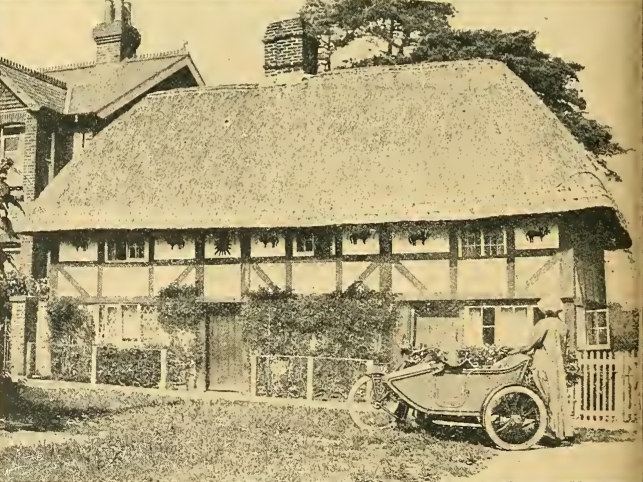
JUST FOR A CHANGE FROM THE BLUE ‘UN, here are some short stories from The Green ‘Un: “We hear, on reliable authority, that the new Scotts can ‘corner’ without any signs of skidding, at an angle of 45 degrees. The centre of gravity of these machines is beneath the hubs. Great thinhs are expected of them…Chain breakagaes should be a thing of the past with the new Renold double-strength chain. This new product fits the old sprockets and will withstand an enormous breaking strain.A feature of it is that the centre bolts have spiral oil-ways cut in them…The Essex Motor Club are to be congratulated upon including cleanliness tests in their two open trials recently. In the last event no gold medals were awarded to any competitor who did not score at least half marks in this test. We should like to see cleanliness encouraged by other clubs, and the riders themselves might be included. Anything which will tend to improve the appearance of the average motorcyclist should be encouraged…The Triumph Co is building a huge extension to their already comodious works in Coventry…A motorcyclist was caught doing 27mph through Wigan recently. As he had no driving licence, he was lucky to get off with fines of 5s and costs…The Russian Government is supporting the proposed motorcycle run over the Moscow-Petersburg-Moscow circuit, a special prize being offered by the War Office. Thirty of the best Russian motorcyclists have intimated their desire to participate in the contest…One often hears of terrific rpm being reached in benh tests, but such speeds are seldom reached on the road. On the low gear test in the Essex Trial, however, one ompetitor averaged 24mph from a standing start, and actually attained 30mph on a 12 to 1 gear. The revolutions work out at 4,600, which is remarkable for a single-cylinder motorcycle. Strong valve springs, a drilled piston, and a straight-through carburetter will work wonders…The limit in tank capacity is that of Carryer’s TT Royal Ruby, three gallons of petrol and one of oil render the tank more like a small beer barrel than anything else…What is the proper dress for lady motorcyclists? At a recent hill-climb we saw one attired in long TT boots up to the knees, a short skirt down to the knees, and a white sweater. The skirt could be unbuttoned when riding. falling into two halves, which we should not like to call trousers. The tout ensemble was very effective…All motorcyclists going over to the Isle of Man and intending to take their machines with them should remember that these must be specially registered with the authorities there…A novel spectacular ‘thrill’ will be provided at the ‘White City’, Shepherd’s Bush, during the Anglo-American Exposition, by motor races which will take place in the smallest autodrome in the world. This miniature Brooklands is really nothing more than an enormous bowl, and at its widest point across measures only 60ft. The almost perpendicular sides of this bowl are 14ft high and form the track, and round them four 30hp racing cars, capable of 60mph, will be driven at full speed…”
“MOTOR CYCLISTS ARE cautioned against trespassing anywhere near the high wooded banks at the top of Polhill on Sevenoaks Road, or to the right of Westerham Hill. Cameras should not be used at either of these places.”
“AS LONG AS THERE IS breath in my body and petrol in my tank, I shall continue to clamour for the weatherproof hosable machine,” Ixion wrote. “Above all, we want the abolition of wire wheels, and the adoption of smooth, streamline crank and gear cases.”
“THE HENDEE MANUFACTURING Co has definitely decided to withdraw fron American track racing, and will only participate in long distance road races.”
“THERE ARE NO MINERAL deposits in Britain that can be used profitably solely for the production of motor spirit. But there are immense quantities of materials that can be put to profit if all the products, or nearly so, are carefully separated and marketed…These coals vary from the bastard varieties with some 35% of volatile contents up to the true cannel with as high as 69% of volatile matter…All these coals can be mined and treated on a paying basis. In Derbyshire, Notts, Yorks, Lancs, Wales, and Scotland rich beds of these coals are lying idle…On rectification the result [per ton of coal] would be: Motor spirit, nine gallons; paraffin, 14 gallons; tar acid, three gallons; heavy fuel oil, 23 gallons; naphtha, two gallons; lubricating oil, six gallons; plus the residual pitch and wax, and less the waste…Regarding the operations, the plant for gas take-off, cooling, scrubbing, washing, distilling, and cleaning is standardised, and made under guarantee by many makers.”
“I LIVE IN CONSTANT FEAR of getting the sack,” Ixion revealed. “The war is no golden opportunity for technical journalists, and, as our staff includes several genuine veteran motor cyclists, I am not doing the work of eight men who have gone to the front. When the fateful Friday comes, my plans are all complete. I am going into business as consulting engineer to the motor cycle trade. Did I hear you scoff, gentle reader? I admit I am, technically, a gross ignoramus; but I propose to assist the trade to eliminate the faulty practical details from their machines; and how few machines are not disfigured by at least one such eyesore. I hear to-day from a man who owns a machine which has a colossal factory behind it. He had a front wheel puncture last week, and when he propped up the machine on it, the stand ‘wilted like a tired lily’. Last week I met another man who owns a machine which is supposed to be as near perfection as motor cycles can be in a world still capable of producing Kaisers. He had occasion to repair his compression tap; he found it could not be removed without taking down the entire engine, and even then a special tool had to be made before the errant tap could be disintegrated.”
“ACCORDING TO THE NEW YORK HERALD, a new fluid to replace petrol has been discovered in America. It is stated that it can be made at a cost of ¾d per gallon. The report continues that a small quantity of naphthalene is added to a large quantity of water together with two secret ingredients which can be bought at any drug store. It will be interesting to see whether anything further is heard of it; in the meanwhile it may be added that the new fuel is said to have been tested on cars with very satisfactory results.”
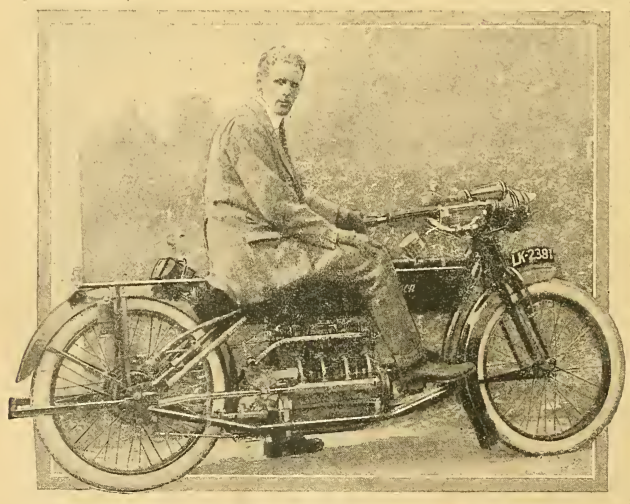
“IT IS NOT UNLIKELY that the leading clubs in the Liverpool district will be amalgamated in the near future. Such a move, resulting in one powerful and influential body having a common interest, would, we feel sure, be of great benefit to the pastime.”
“AN AMAZING YARN: A motor cyclist recently asserted in my presence that he started up the engine of his Scott sidecar outfit, and on letting in his clutch was astounded to find the machine progress rapidly backwards!” Ixion reported. “I thought he was pulling my leg, until he got annoyed, and summoned his wife, who immediately corroborated the yarn in every detail…As I have just bought a new and rather expensive hat, which I do not wish to outgrow, I will not tackle the truth or falsehood of the above experience personally.”
“SO MANY MOTOR CYCLISTS having gone to the Front as despatch riders, certain motor cycle clubs are experiencing great difficulty in collecting sufficient funds to pay the big amounts representing affiliation fees due to the governing body. As a result, the resources of some clubs will be taxed to the utmost.”

“THE ACU IS NOW IN A POSITION to carry out private tests for both motor cycles and light cars under 1,100cc. The revised scale of charges is £5 5s per day for a certified trial of one, two, or three days’ duration. The fees for tests extending beyond three days are proportionately lower.”
“THERE STILL APPEARS TO BE doubt in some quarters as to whether the export of motor cycles and parts to neutral countries is allowed, and we hasten to state that such is the case. There is nothing, for instance, to prevent manufacturers of English sparking plugs exporting their wares to Holland or Sweden.”
“SIR RK ARBUTHNOT, BT, on many occasions has said that motor cycle riding is the finest training a naval officer can have. Certainly the indulgence in the pastime steadies a man’s nerves, and makes him quick in action and resourceful in times of danger.”
“A READER ACTUALLY SUGGESTS that motorists should boycott all places where, since the outbreak of war, it has become customary to examine all licences. We are afraid we cannot offer any sympathy to our correspondent, as it is extremely important at the present lime that every motor cyclist and motorist whould be able to prove his identity.”

THE MOTOR CYCLE’S BUYER’S guide included 277 bikes including 117 four-stroke singles, 95 multis and 65 two-strokes. All-belt drive drove 135 bikes; chain-cum-belt, 72; chain, 64; shaft, six—121 boasted three-speed transmissions. The guide reported: “Quite a feature of the 1915 models is the fitting of four-speed gear boxes. Now, four speeds are a distinct luxury on powerful machines, but they are much more of a necessity in the case of light- weights. We must not lose sight of the fact that the lower the horse-power the more speeds are required.”
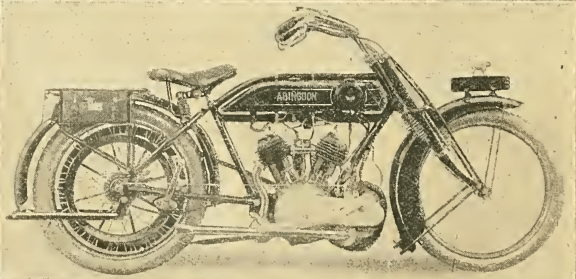
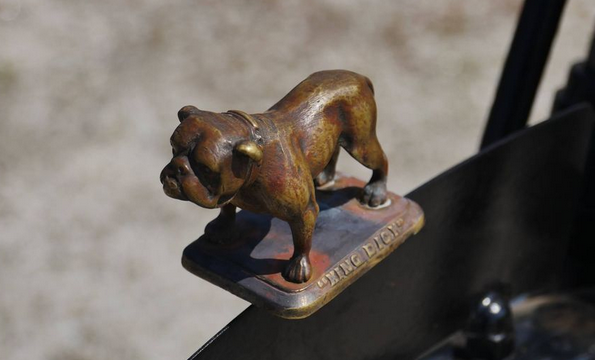

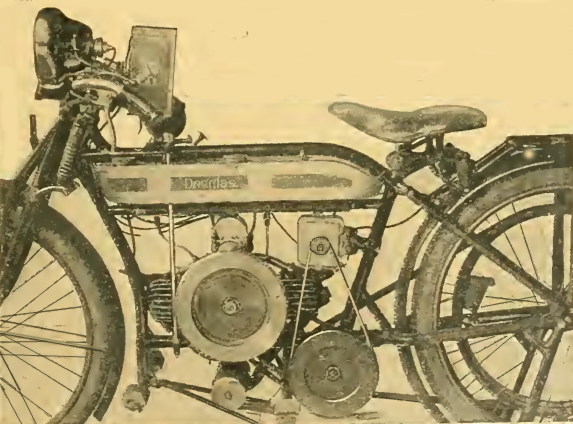
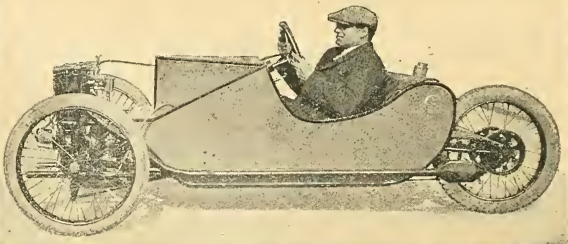
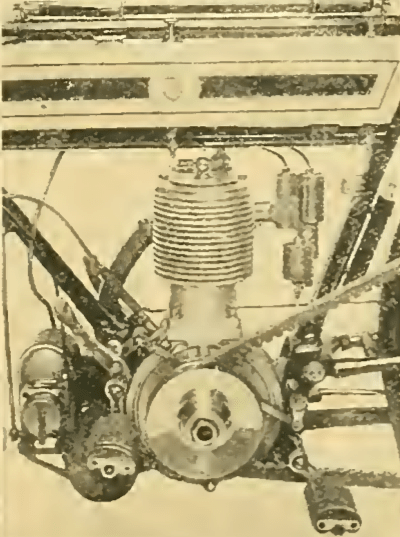
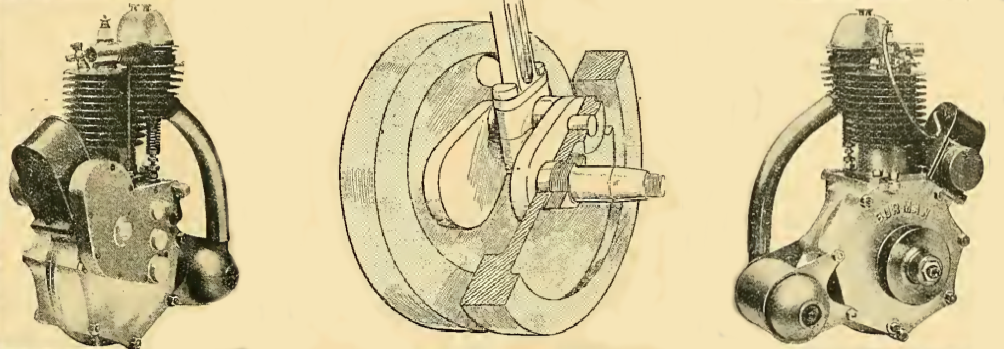
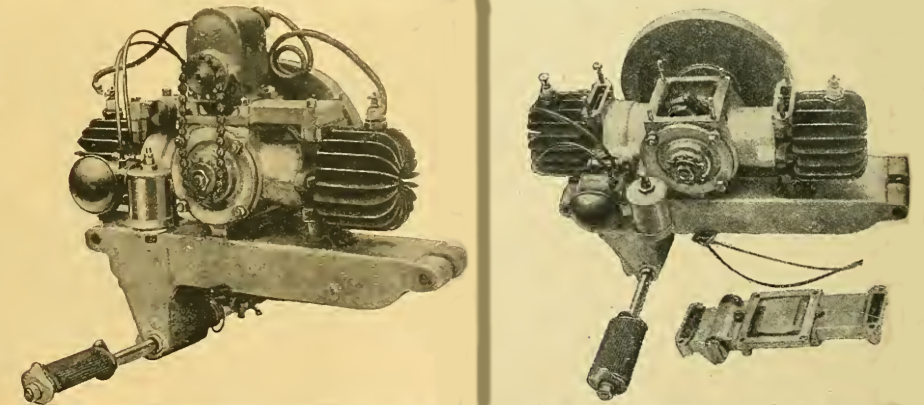
AFTER A WEEK WITH a 225cc Ivy two-stroke the Blue ‘Un said: “The fittings are wonderfully completeand the 26×2¾ tyres and large pan saddle are a luxury to which one is seldom treated on a light machine. Besides this, two stands, excellent mudguards, pannier tool-bags, and a large petrol tank make the Ivy de luxe one of the most sensible lightweights we have ever handled. The riding position is excellent, and the engine flexible and so easily handled. The riding position is excellent, and the engine flexible and so easily handled that we felt at home on it in a minute. Comfort, power, flexibility, and neat appearance are all special features of this little machine, which may be fitted with a two-speed counter-shaft and three-speed hub gear, in which case the machine would be capable and comfortable for long touring in almost any district. The maker of the Ivy has not made the mistake of adopting flimsy and toy-like parts on his machine, instead, it is built to stand hard wear. It is very silent as two-strokes go; We took a great liking to the khaki-coloured Ivy during the week it was in our possession, and it entirely confirmed the good opinion we had formed of it after its performance in the Junior TT Race.”
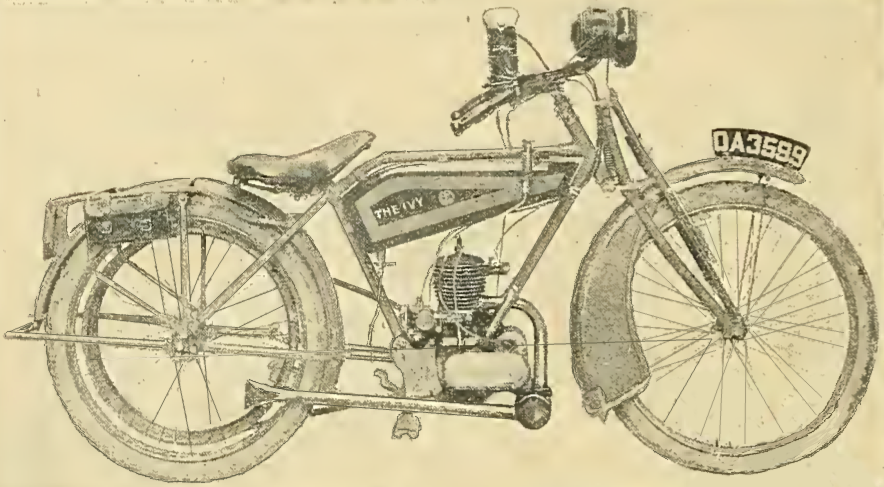


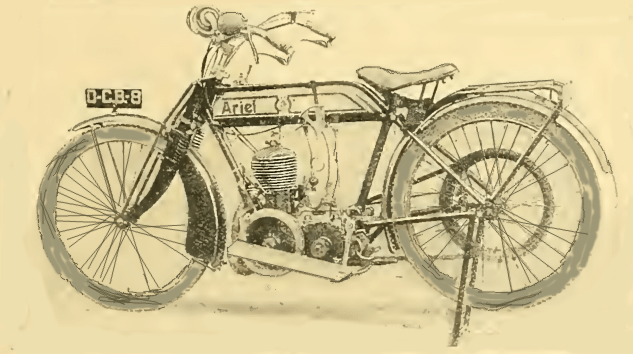
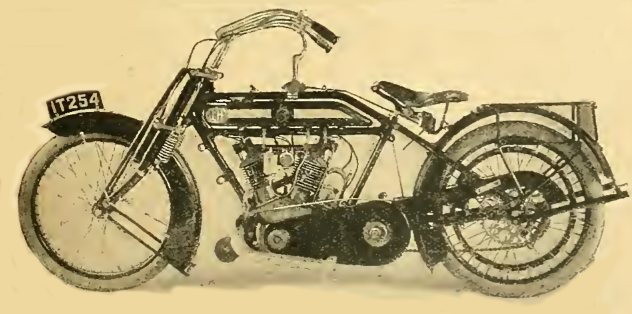

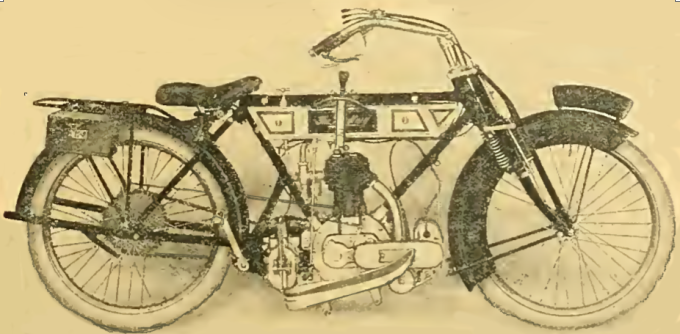
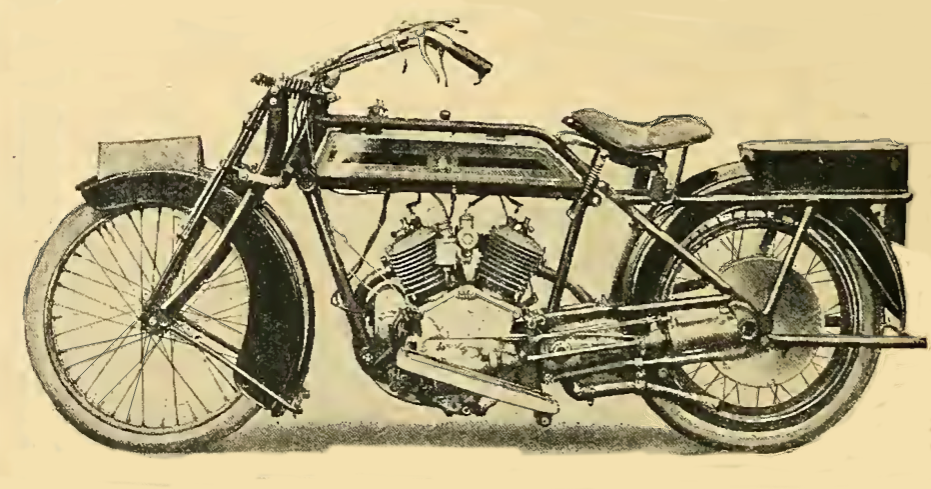
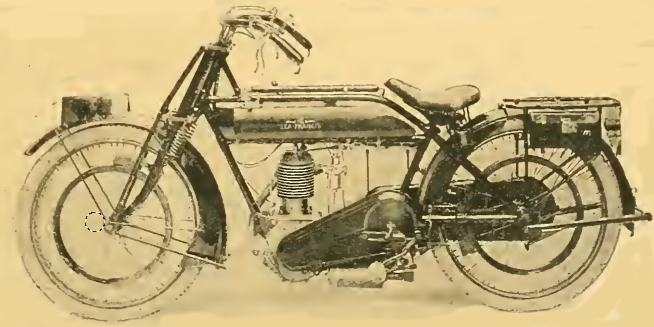
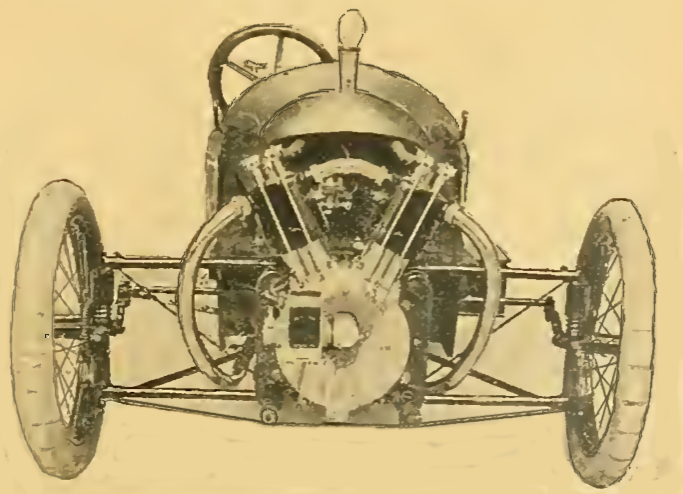
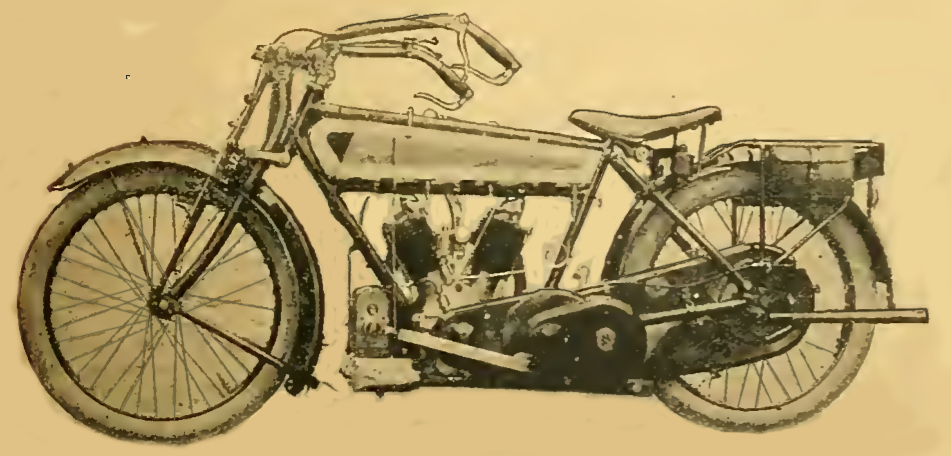
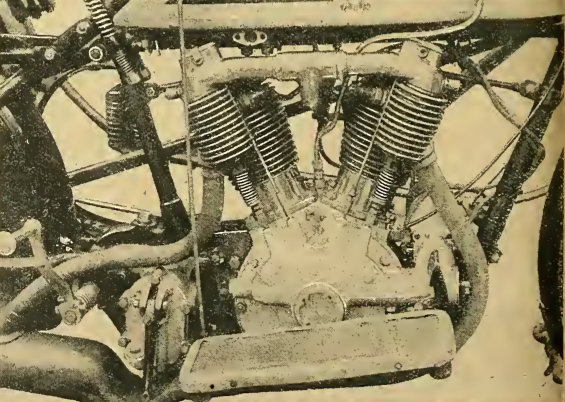
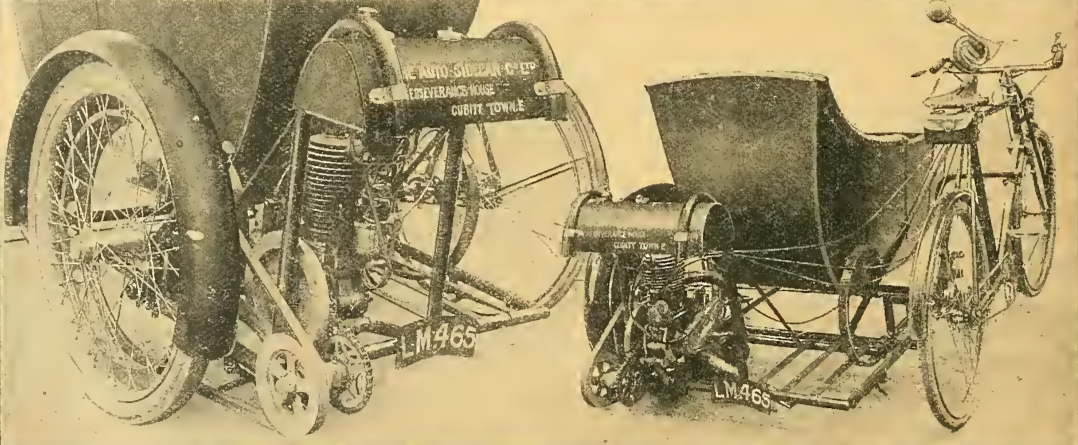
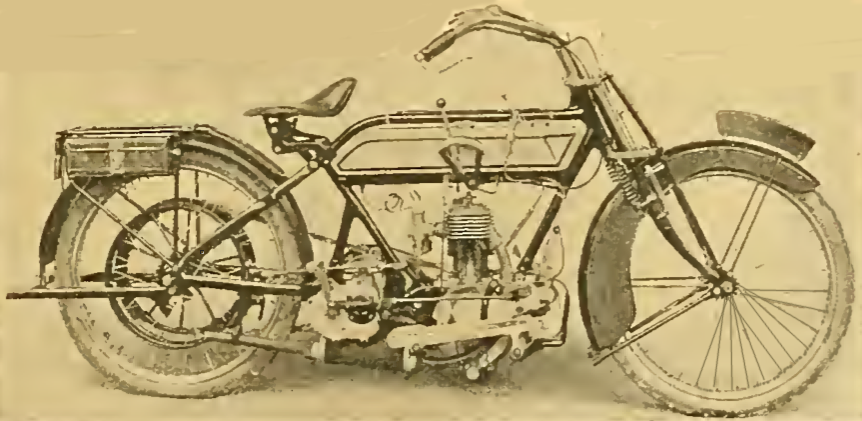
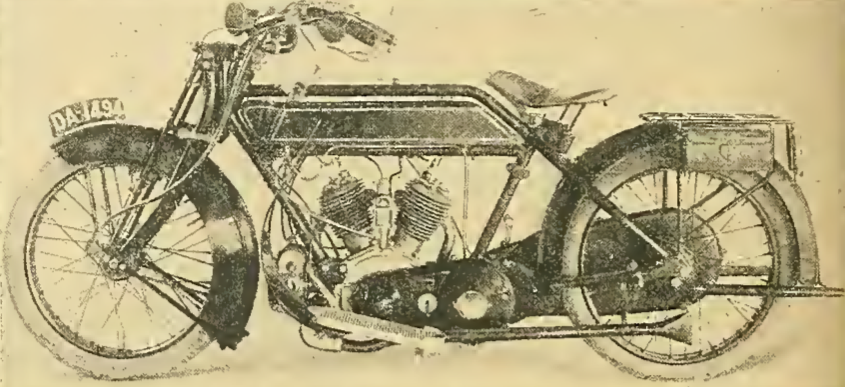
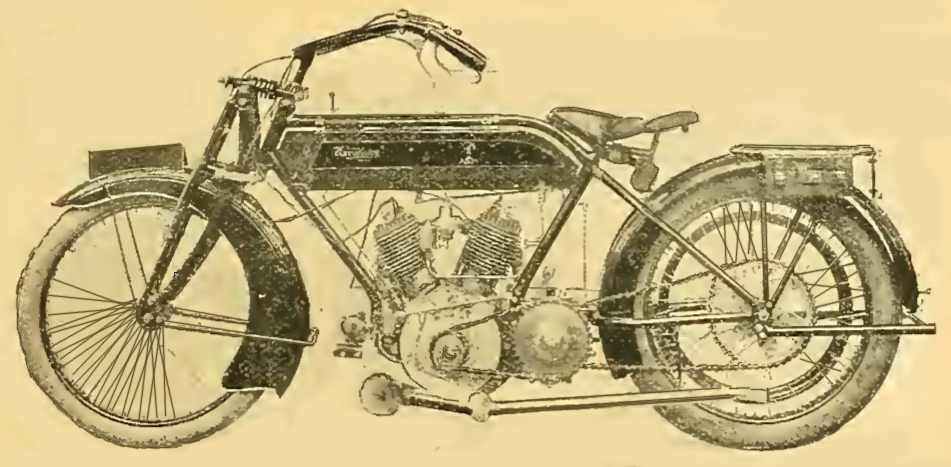
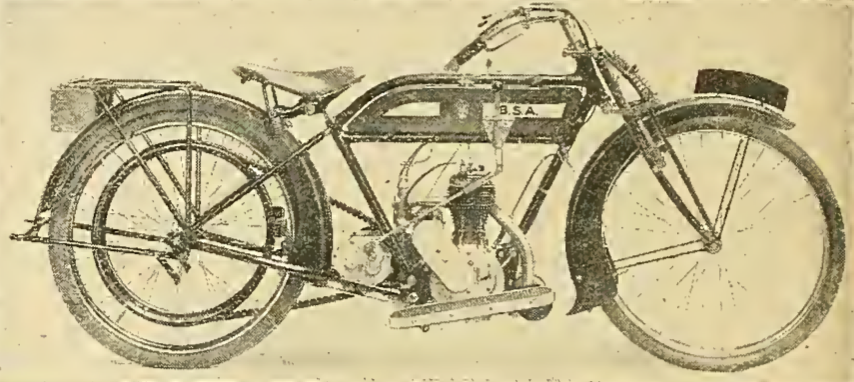
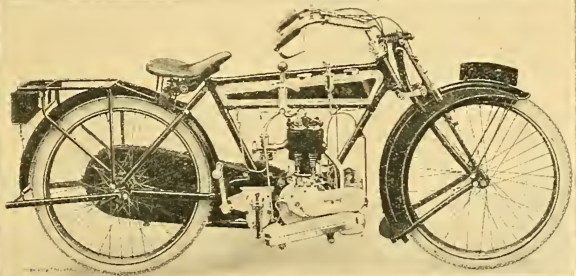
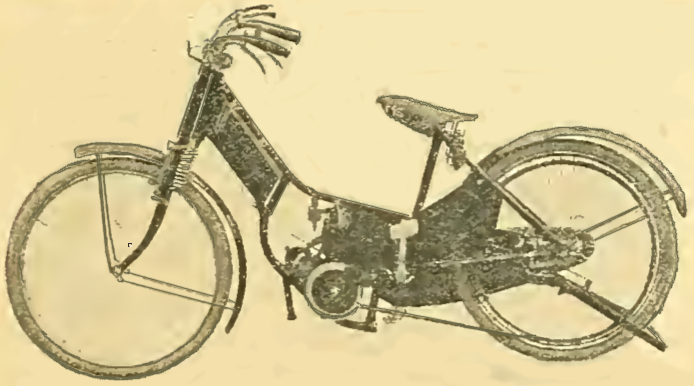
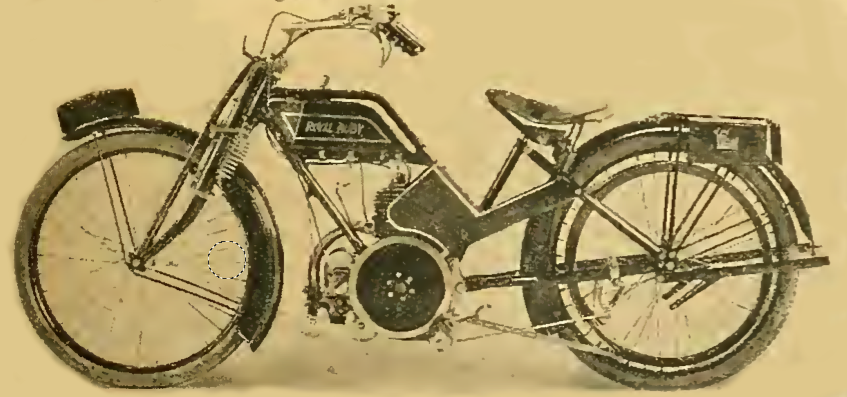

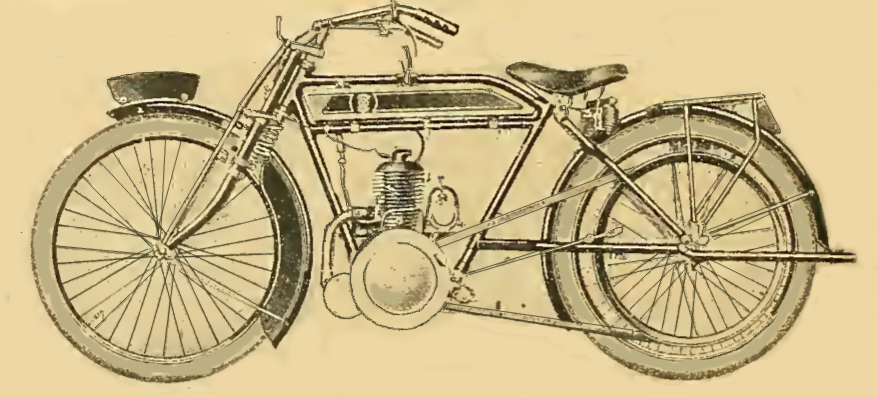



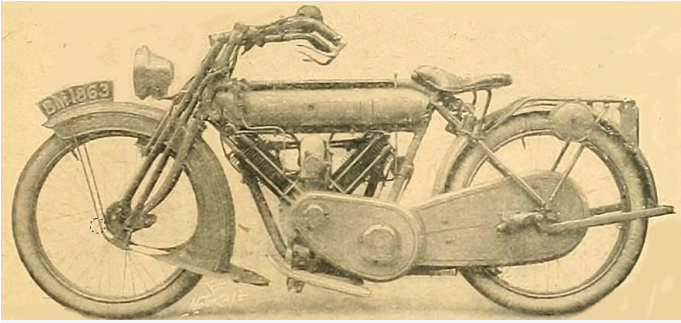
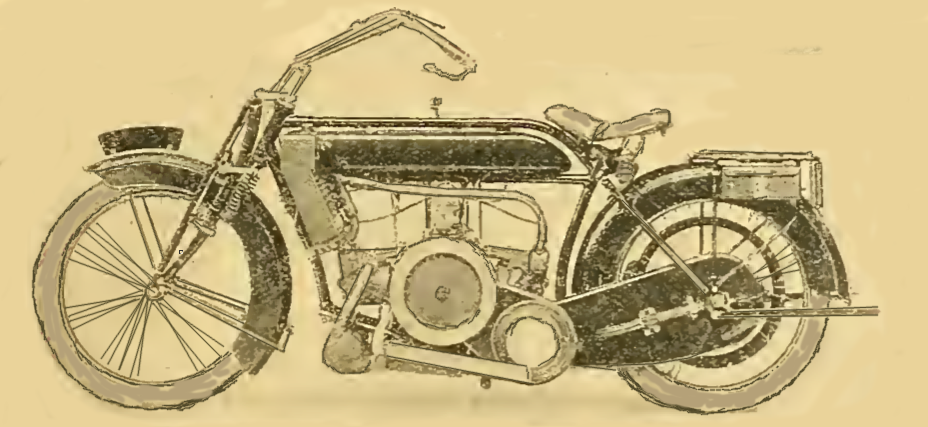
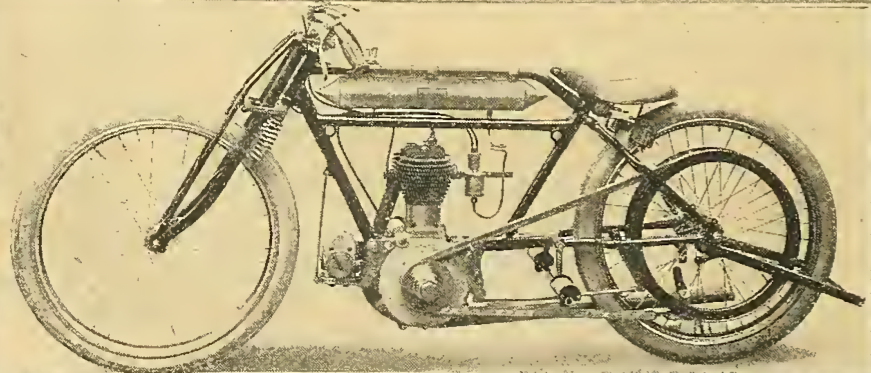
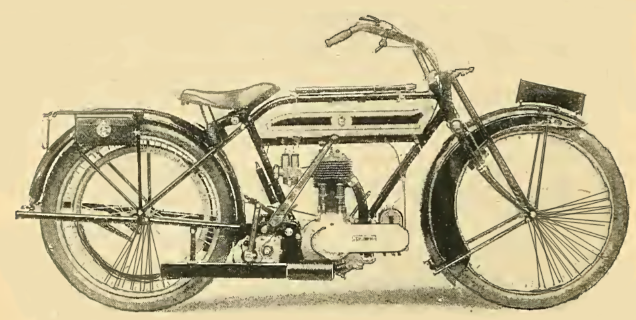


“THERE IS NO QUESTION that the war will be influential for good so far as motor cyclists and the industry are concerned…When the war is over, and the young manhood of the country returns, the demand for touring mounts will return also, while motor cyclists who have been out on active service will have formed a fair idea as to the most desirable type of mount for real hard usage…it may be regarded in much the same light as a gigantic competition, and the surviving competitors will clamour for machines of the type that have proved their worth, while non-competitors who have been compelled to remain at home will follow their example. Some idea as to the wastage that takes place at the front can be gathered from the fact that many of the despatch riders are already using their third and fourth machines, while out of the ten machines attached to a certain battalion only two survived the fighting at Mons. The others were put out of action, mainly by shrapnel fire, and were left on the field of battle amidst other wreckage. A breakdown of any sort may mean that the despatch rider is compelled to leave his mount, and any alteration in the formation of the fighting columns may lead to its total loss…A test of greater importance than any we have known is under way, and from amidst the oppressions of war we can afford to look forward with happy anticipation for the results this test will produce.”
“M GALOPIN, ONE OF the leading lights of the technical department of the Fabrice Nationale, has, it is rumoured, been sent to Germany as a prisoner of war for refusing to manufacture arms for the enemy. M Galopin has often come over to England in connection with the Motor Car and Motor Cvcle Shows.”
The Motor Cycle reported that British bikes were in use as far afield as China and, to prove it, pictured a 3hp and a 2¾hp Enfield complete with Chinese characters on their number plates.
“AMERICA IS THE ONLY COUNTRY which can be considered a serious rival to British supremacy in the motor cycle industry,” the Blue ‘Un proclaimed in its report on the Chicago Show. Technical trends included “the adoption by several of the leading firms of the three-speed countershaft gear, a feature which the American designers have been slow to adopt…for 1915 almost every machine designed for sidecar work will be fitted with three or four speeds…Cork insert clutches are the most common type, and kick, or (as they are known across the water) step starters are generally incorporated…Big twins are the rage, and colossal engines rated at 8hp and over are commonly in use as solo mounts. To British minds this would seem ridiculous, especially as in some parts the roads preclude high speeds. We must remember, however, that the general run of big American twin is not such a high efficiency engine as we are accustomed to in England.

For the most part, a certain amount of efficiency is sacrificed for flexibility and smooth, quiet, slow running, a feature which has much to commend it, and which might reasonably be studied more by our own designers. Overhead inlet valves are almost universal, and in the 1915 models the overhead rocking gear is frequently enclosed, something after the manner of the MAG valve gear…Chain drive is almost universal, though chain guarding has improved but little, and totally enclosed chains running in oil baths are almost unknown. We find one or two fresh instances of dynamo lighting, but there is no sign of its general adoption, probably on account of the excellent service obtained from the dissolved acetylene cylinders which are in general use. Frames remain much as before. In the eyes of Britishers they are mostly very ugly, but they are also undeniably strong and are reinforced by liners in all important places. The loop frame is popular and has much to recommend it. Spring forks differ largely from our own, and are frequently of the cradle type, such as the Indian, Excelsior, etc. Rear springing has received a certain amount of attention the Indian, Merkel, and Pope being possibly the most typical examples. As regards detail work, British manufacturers are years ahead. Many American machines, for instance, have no carrier or else a poor crude arrangement which would be laughed at in this country, while front wheel stands in America are looked on almost as freaks, and the makers who fit them can probably be counted on the fingers of one hand. Mudguarding leaves much to be desired. Another instance of what would here be considered almost criminal design is the fact that in many even of the most popular makes the whole engine has to be removed from the
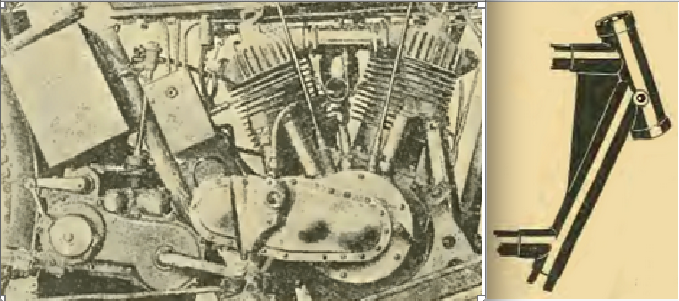
frame to get a cylinder off for cleaning purposes. The Remy Electric Co share the Splitddrf Co’s belief in a combined magneto-cum-dynamo-lighting installation, but have arranged their system so that if the battery should become completely destroyed, the dynamo can be used to ‘excite’ the magneto. The head lamp provided with the apparatus has two bulbs—a high candle-power bulb in the centre of the reflector, and a less powerful bulb near the top of the reflector; the latter is used wherever brilliant head lamps are prohibited or unnecessary; eg, it would be useful when the machine is left standing by the roadside. The new Harley-Davidson sidecar has a telescopic wheelbase, so that the track (‘tread’, as its makers phrase it) can be adjusted to suit the gap between the ruts on country roads. An American company is going to manufacture Auto-wheels under licence. An Ohio rider has patented a new rough weather windshield, which looks like the longitudinal section of a hen’s egg, the thin end being split, and terminating at the front hub, whilst the fat end protects the rider’s person. It is made of mohair (ie, black Cape cart hood fabric) attached to a light steel framework by turnbuttons and brass eyelets, and is provided with a moon-shaped mica window in the bulge of the egg. Shall we see one in the next Boxing Day 24 hours rides? Probably the most striking comparison between British and American machines is that while we are trying to turn out a light machine that
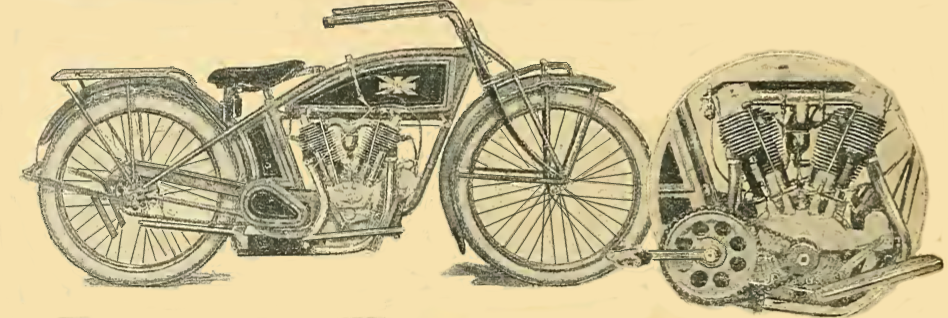
will go anywhere and withstand hard work, the Americans continue to pile on weight and use huge engines, with the consequence of heavy gears, frames, large tanks and heavy, fittings. The result is usually a cumbersome and unwieldy mount. There is one notable exception to this generality, and that is the Indian, the makers of which, in accordance with British ideas, are marketing 3½hp and 5hp twins, the latter built on the lines of the excellent little machine raced in the TT. Perhaps now that three-speed gears are coming along, the lighter and handier type of machine will become more popular in the States. American two-strokes are represented by the Schickel, a large machine with a 6hp single-cylinder engine, a three-speed counter-shaft gear, and chain drive throughout, and the only British mount in the Chicago Show was a solitary specimen of the two-stroke Triumph, staged by the agents for the Coventry Chain.” Of the 55 bikes on show 13 were one-lungers, 47 were twins and three were fours; 48 had kickstarts.
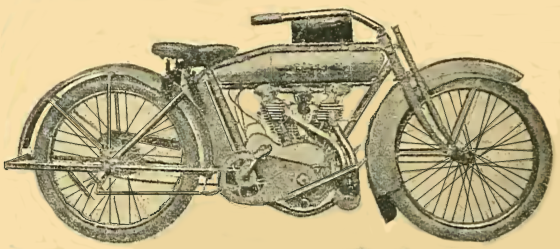
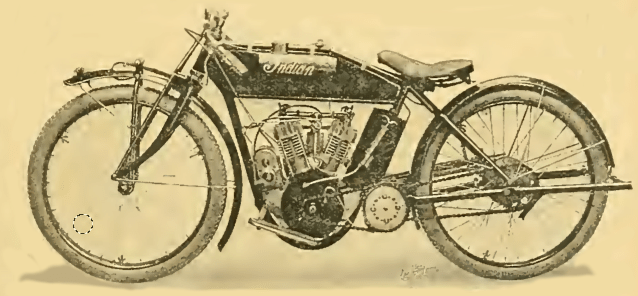
HAVING CUT HER motor cycle teeth on a Harley one-lunger, Della Crewe bought a two-speed Harley combo and rode it from her home in Waco, Texas to New York. For company she took her Boston Bull Terrier Trouble. Rather than setting out to break speed records Ms Crewe sensibly set out to see the country, taking in the 2nd Federation of American Motorcyclists race meet in Kansas City (dominated by the new Harley race team) and joining a number of small-town parades. Texaco helped out with fuel and lodgings but this was no cakewalk—battling through a mid-Western winter took months. Della and Trouble completed the 5,378-miles run to New York in six months. “”I had a glorious trip,” she said. “I am in perfect health and my desire is stronger than ever to keep going.” She had clearly been bitten by the travel bug because she then headed south, working her way down to Florida and thence to the Caribbean, Cuba, Puerto Rica, Jamaica, the West Indies and Panama. After another six months she was back in New York, followed by a run to California…by way of Alaska.
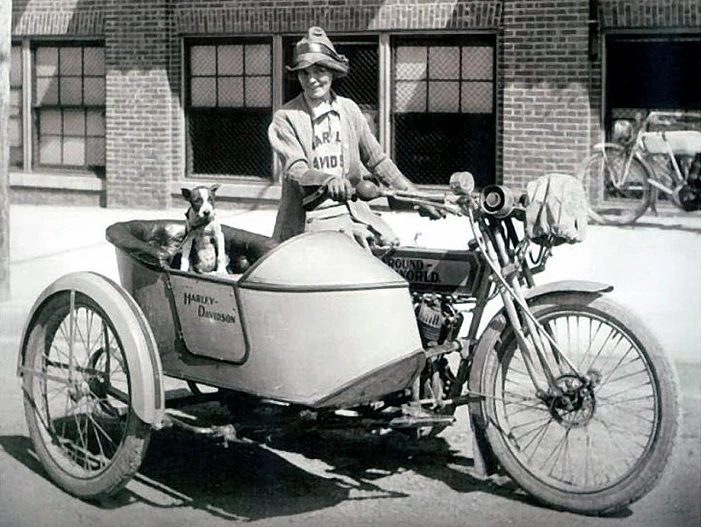
“ONE WELL-KNOWN MOTOR CYCLE firm is making casing for shells, another is producing in thousands an aggressive implement for use by airmen, another, metal articles which form part of every soldier’s commissariat, whilst a leading firm with a large machine shop equipped with the latest labour-saving tools is busy on turning and machining work for several branches of the army and navy. The leather accessory works are practically all at full pressure on work for the army…It is comforting to feel that in the health and enjoyment we have had from the motor cycle, and in the constant agitation for improvements, each and all of us have been assisting ia the building up of an industry which is to-day of the greatest service to our country.”
“AT BEXHILL POLICE COURT, VS JONES, a corporal in the 25th Reserve (County of London) Cyclist Battalion, was summoned for riding a motor cycle without a licence. Lieutenant AR Churchill, of the same regiment, said he had been instructed to appear in the case on behalf of Colonel Gilbertson Smith, his commanding officer. The regiment was stationed at Lewes, and they were charged with the duty of taking over coast defence along the sea coast of Sussex, and he wished, with the greatest respect, to protest against the action of the civil authorities in such cases as the present, because again and again they had summoned the men of the regiment for various trivial matters. Lieutenant Churchill explained that the machines were registered in the name of the Home Secretary, and that a licence was not needed. Therefore, he asked for the dismissal of the summons, and, at the same time, he wished to be allowed to enter his emphatic protest at having been brought to the court on such a case. The case was dismissed. We wonder if soldiers will next be prosecuted for not having gun licences.”
AS THE WORLD WENT TO WAR The Boche went about their business on NSUs, Brennabors, 600cc V-twin Wanderers with sprung frames and forks and, ironically, the German offshoot of Triumph. French poiluts were issued with Peugeots, Rene-Gillets and Terrots as well as British bikes, notably Sunbeams. Austrian-Hungarian squaddies had the 6hp flat-twin Puch. The Italians had Bianchi solos and 1,140cc Frera combos; Russia bought all the British bikes they could get, doubtless impressed by the British engineering that had helped the Japanese navy obliterate their fleet nine years earlier
“SCOUTS ON THE EAST COAST: Our correspondent on the central east coast reports that a large number of motor cyclists are engaged there as scouts, despatch riders, and in similar capacities. Petrol is very difficult to obtain, as naturally the Government commandeer most of the available supplies and consequently prices are very inflated. Everyone is reported as being very keen on his work, hard beds and bully beef being the only flies in the ointment. The scouts are armed with revolvers, and possess the power of commandeering a new machine if their own breaks down, a procedure which has occurred on more than one occasion.”
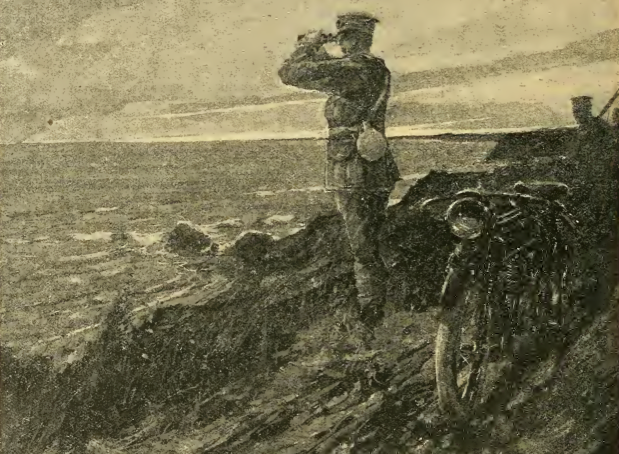
“CHRISTMAS 1914: THE THOUGHTS APPROPRIATE TO CHRISTMAS DAY are all closely associated with the idea of ‘Peace on Earth and Goodwill towards Men.’ Unfortunately, this year such words seem somewhat out of place, much as one may wish for an end to the present terrible conflict which is raging over almost the whole world, and a lasting peace. Even the armistice suggested by the Pope for Christmas Day has been found to be impossible, and for once Shakespeare is wrong when he says in King John, III, i: ‘The yearly course, that brings this day about, Shall never see it but a holiday.’ There will be no holiday for our comrades at the Front, and the best that we can wish them Is victory in the day of battle and a safe and speedy return, when they may be sure of a right royal welcome.”
Here’s a batch of the adverts which enthusiasts were reading as the world descended into five years of madness.
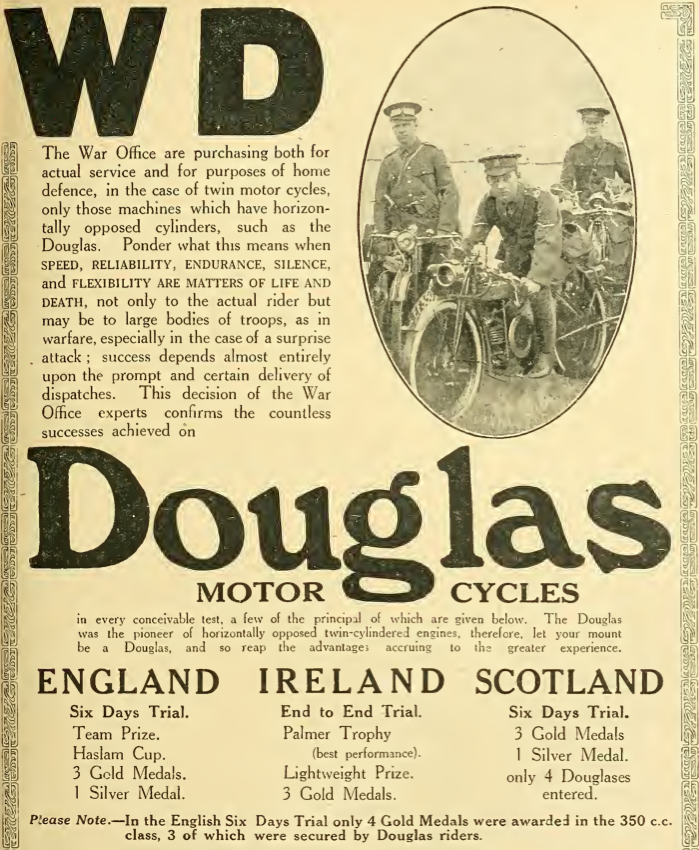
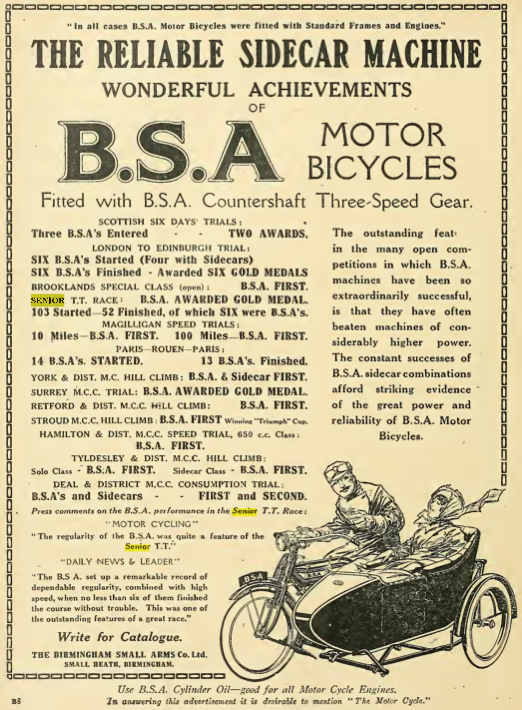
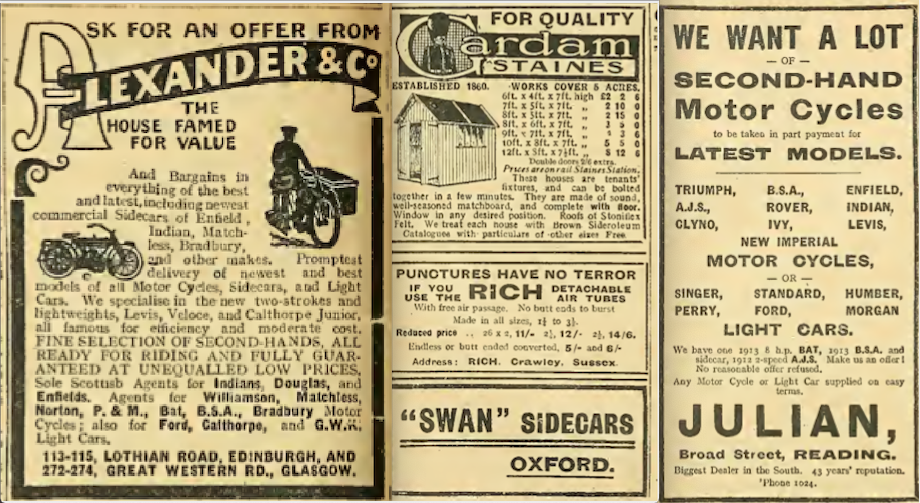
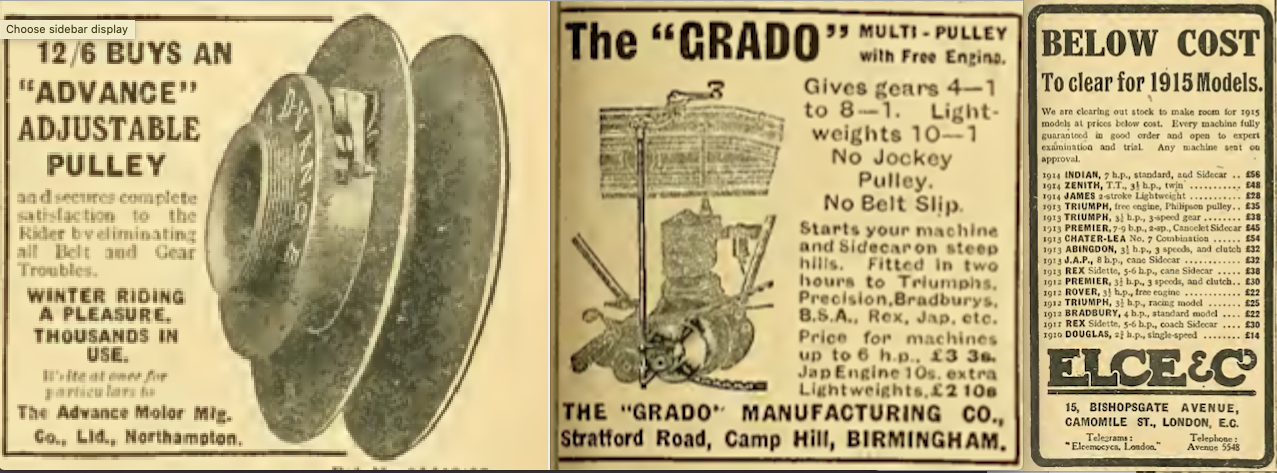


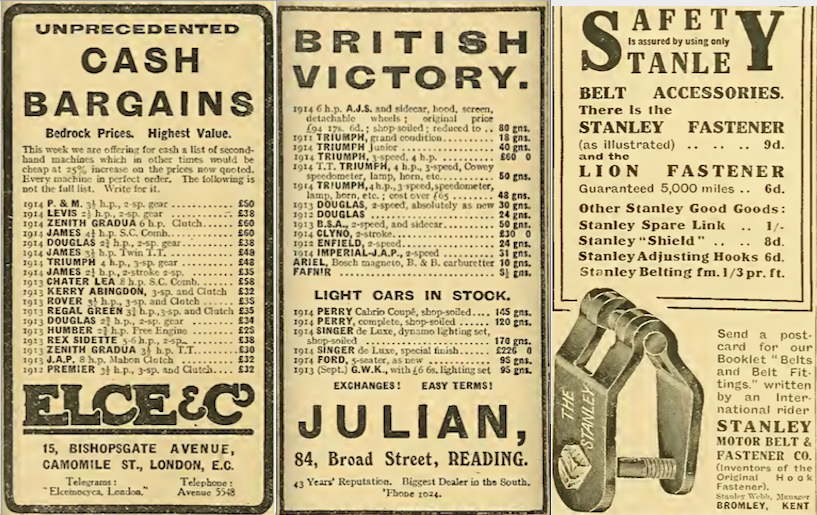
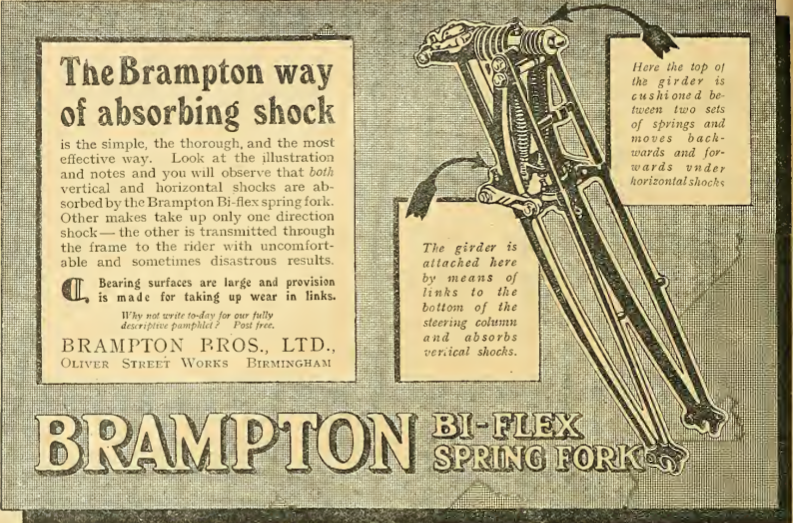
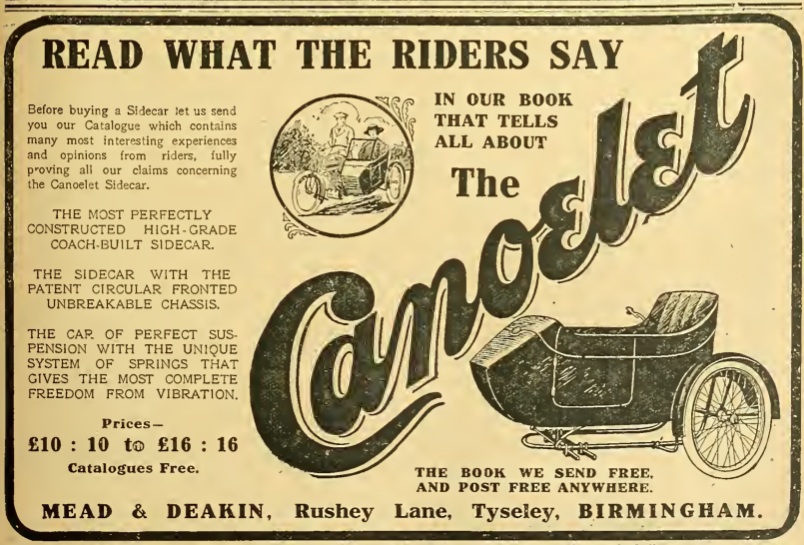

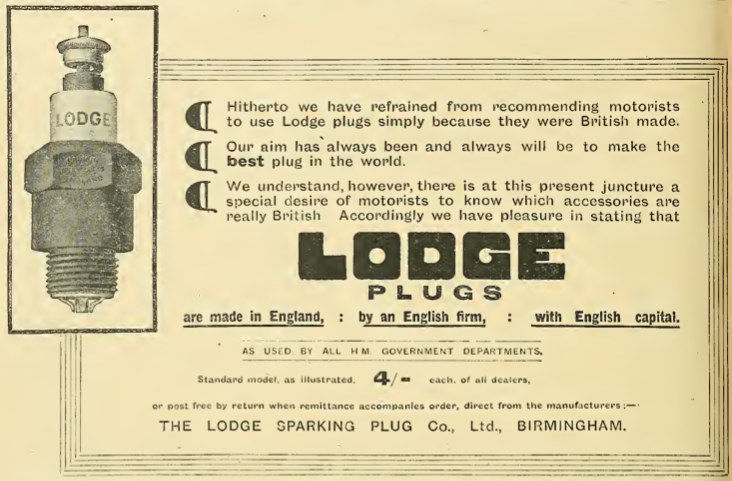
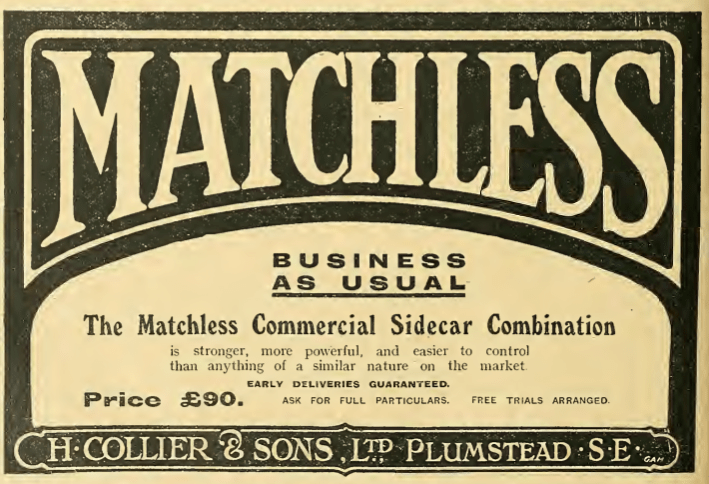
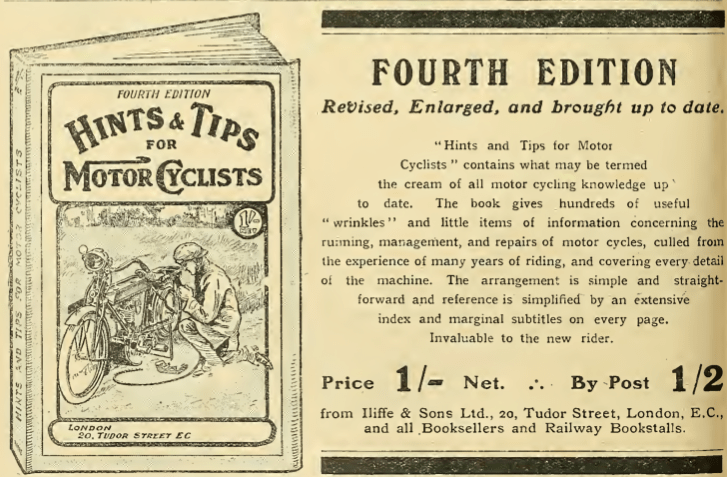
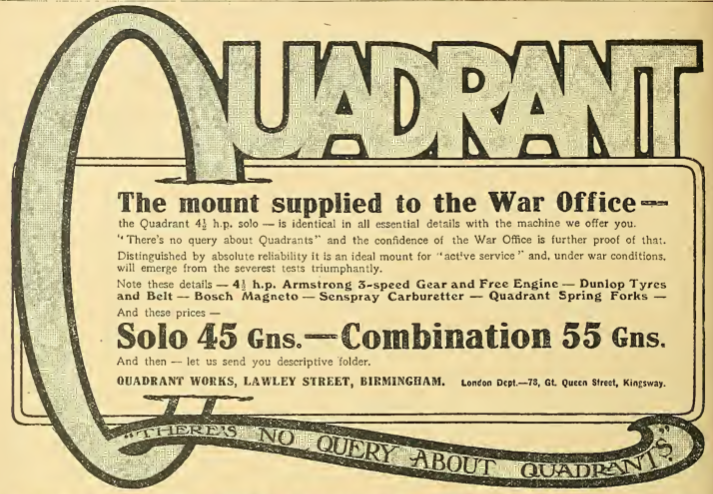
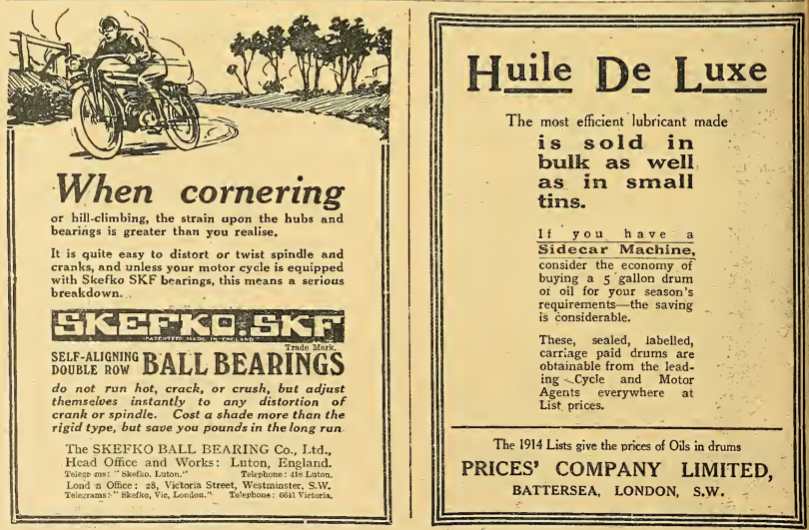
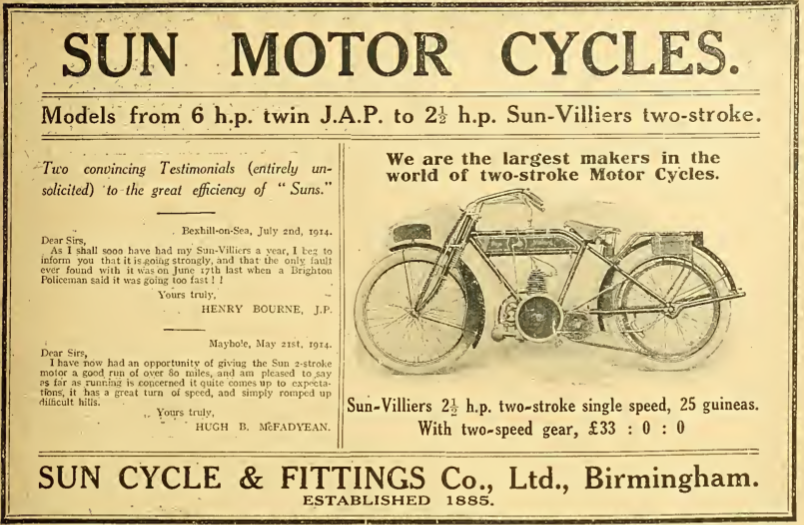
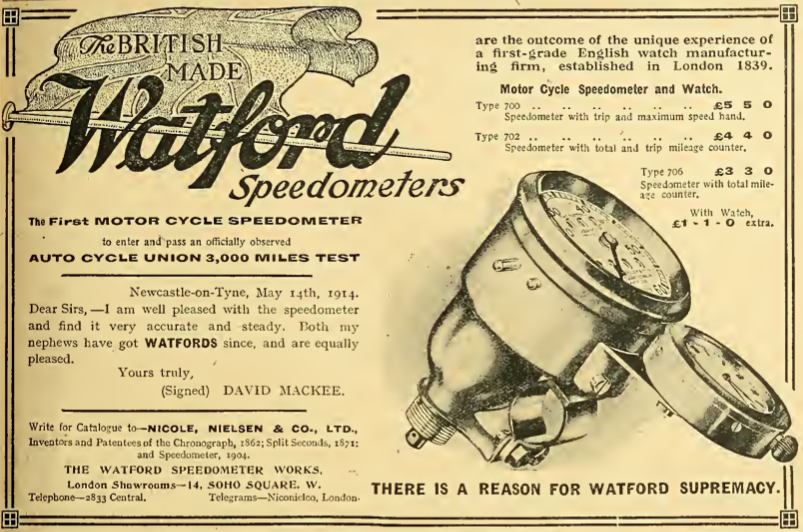
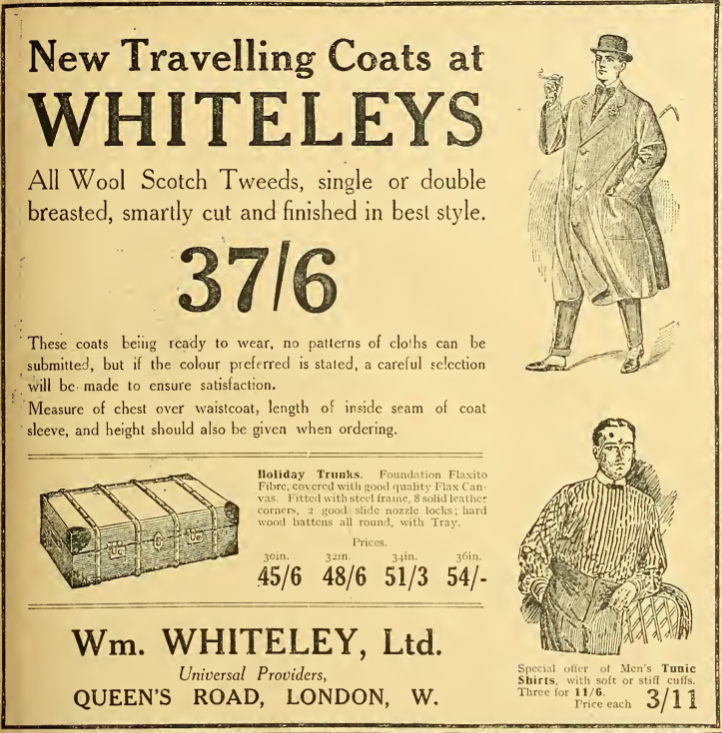
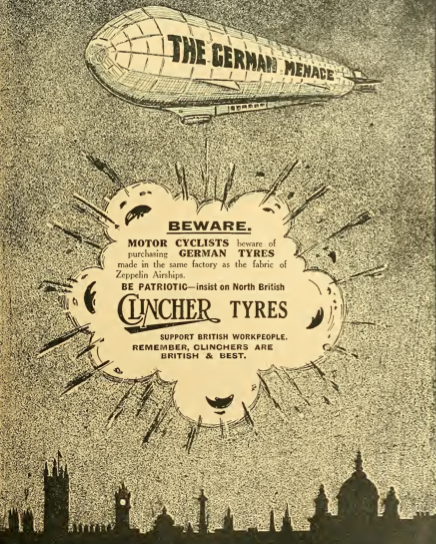

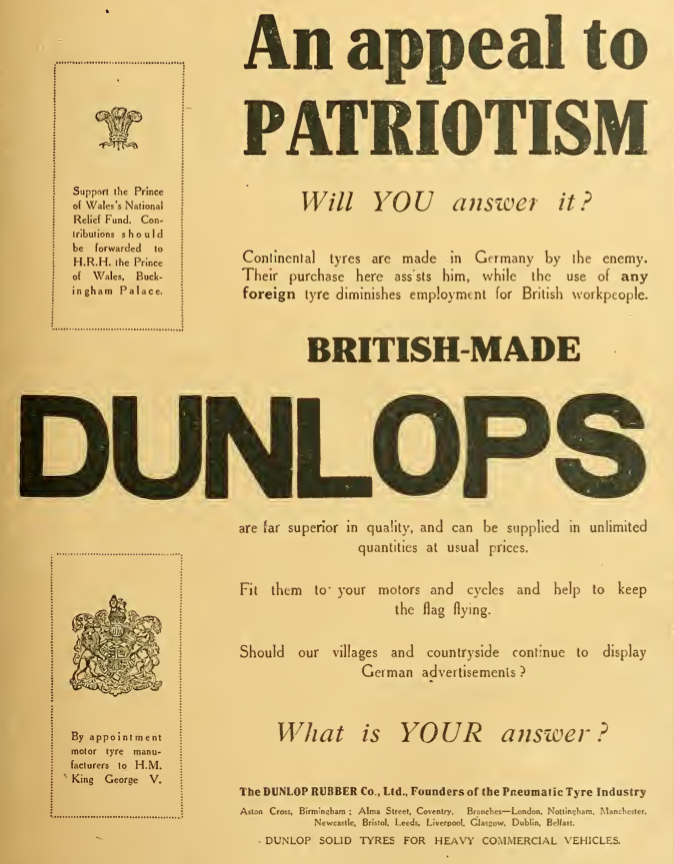
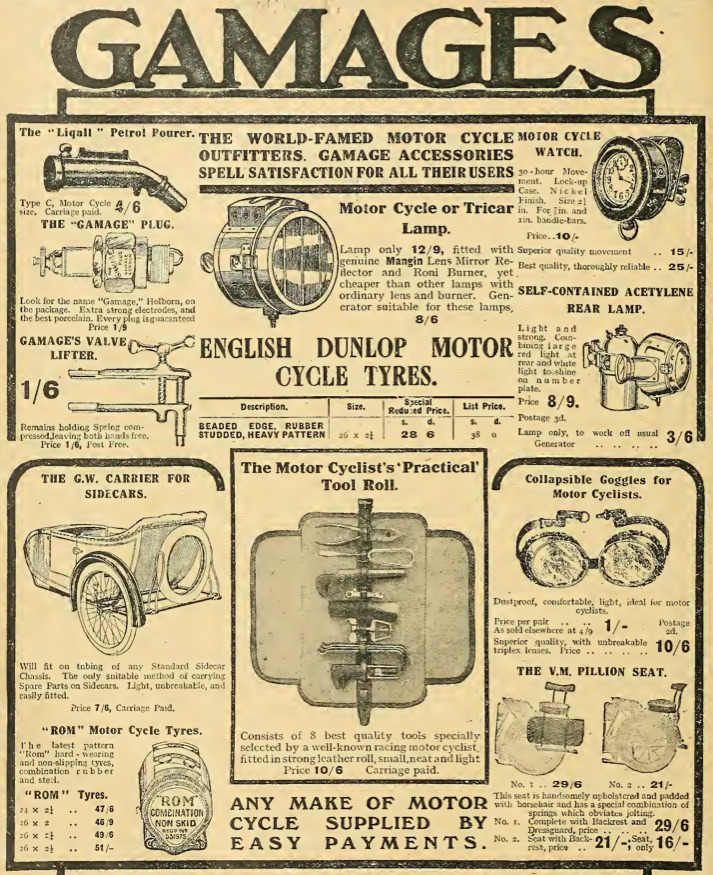
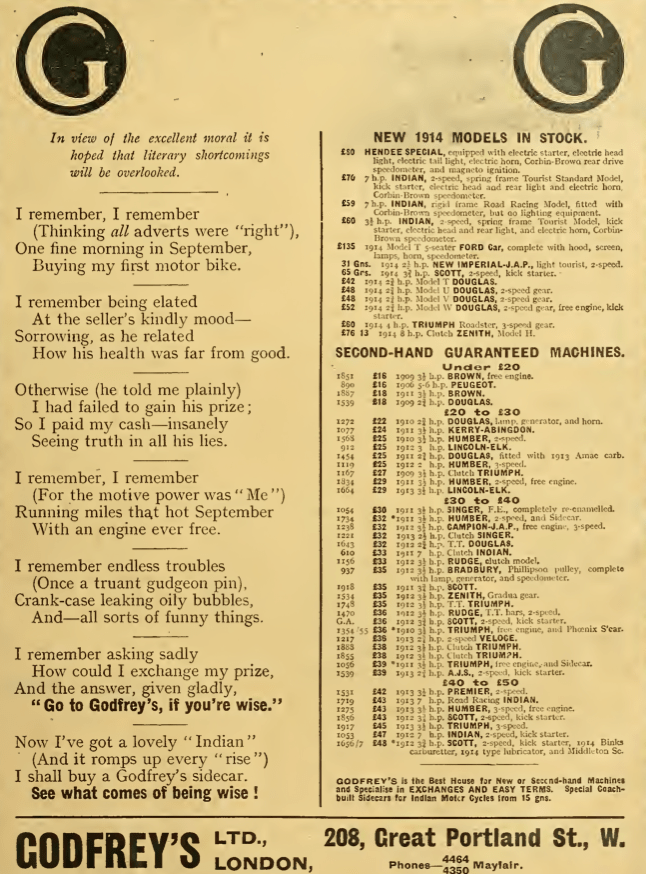
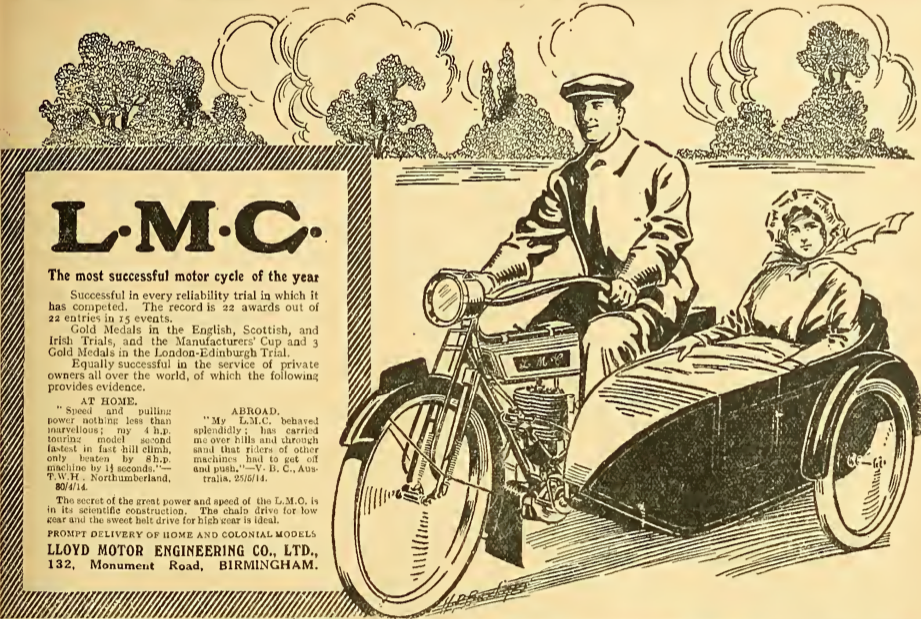

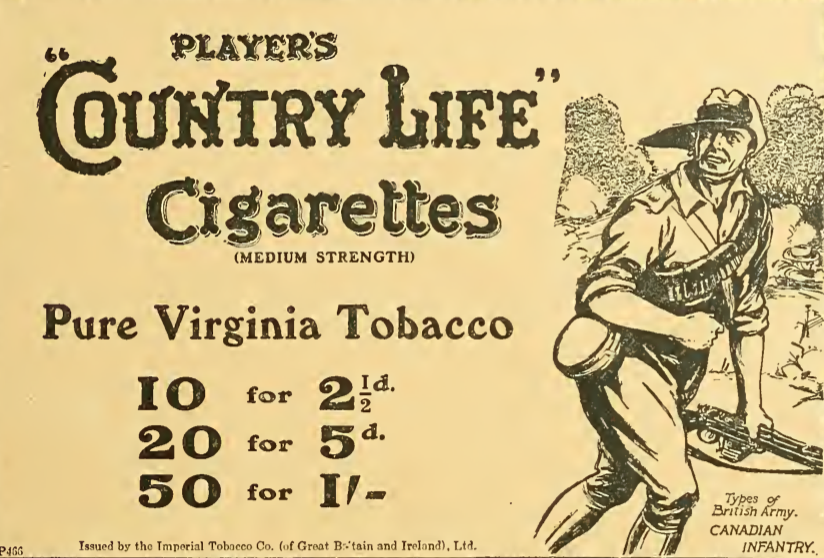
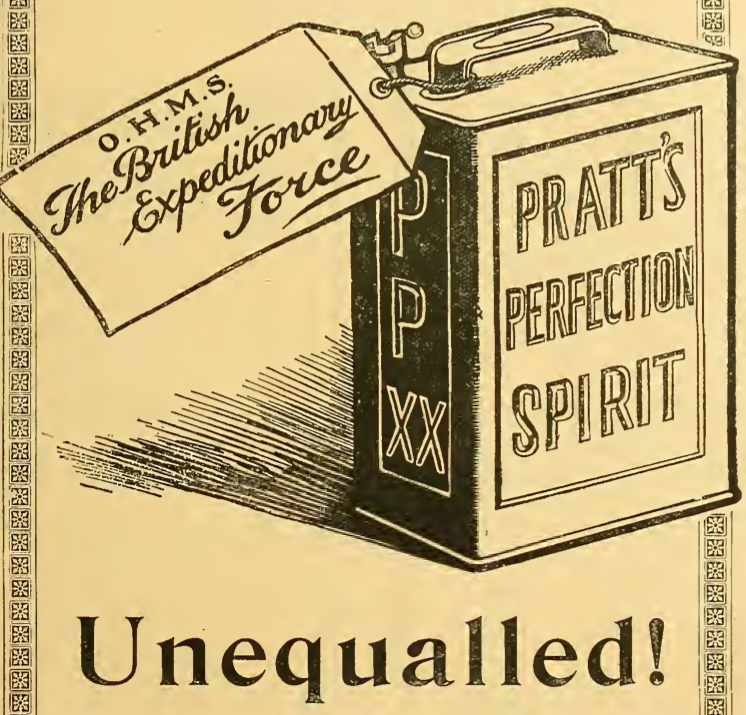
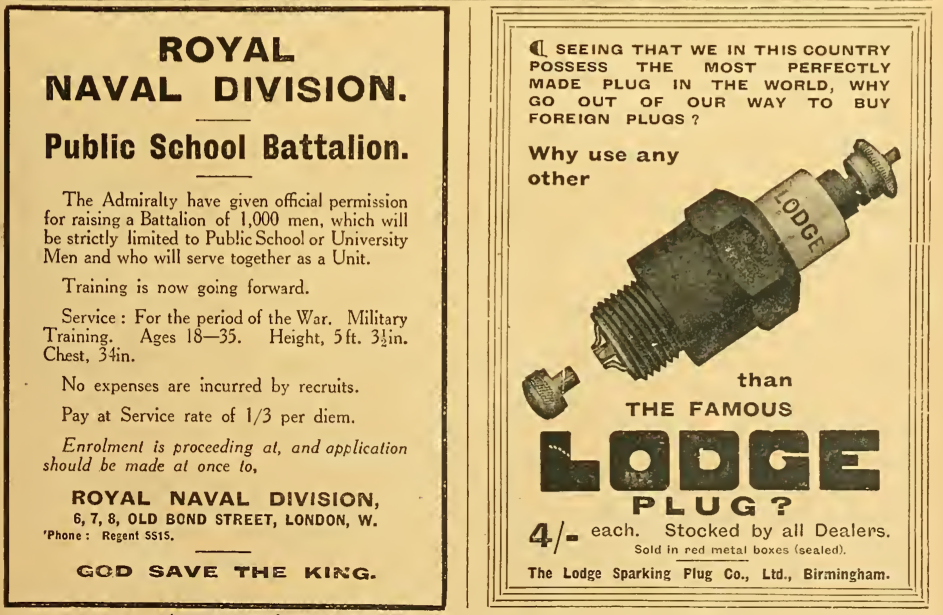
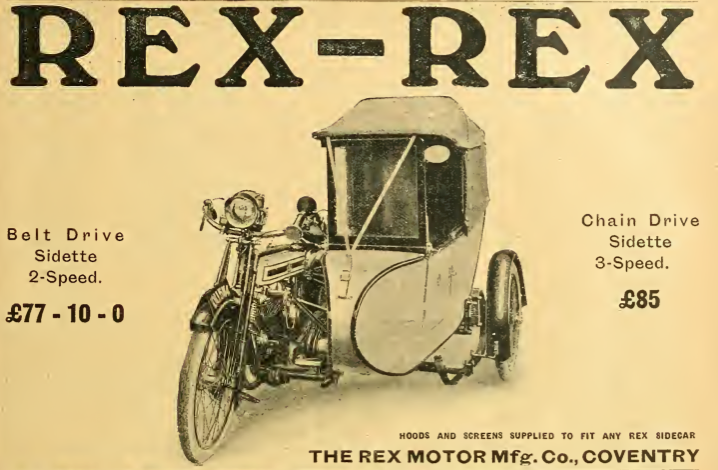
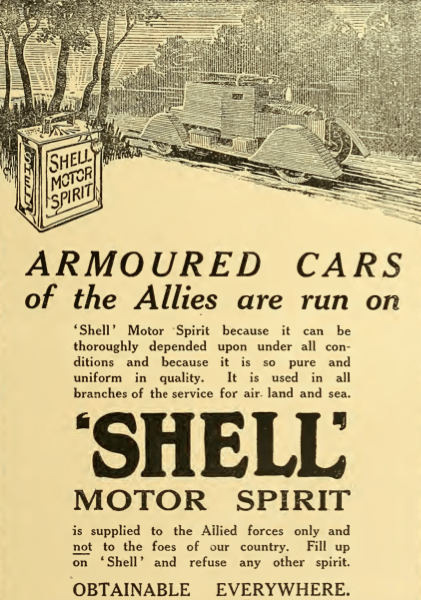
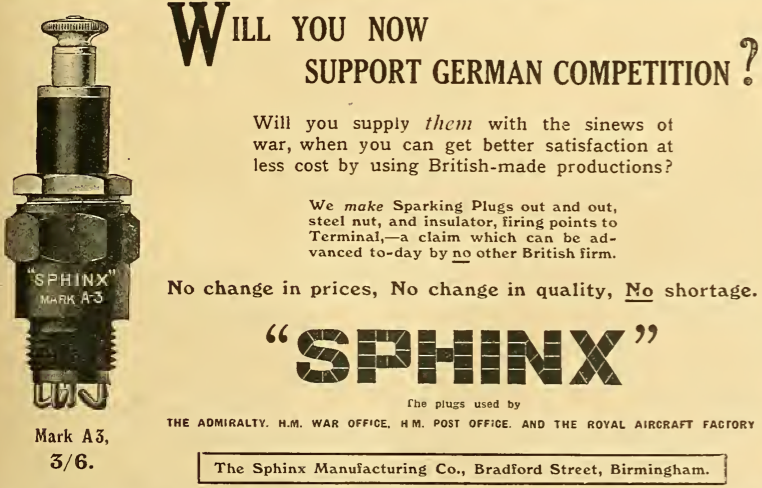
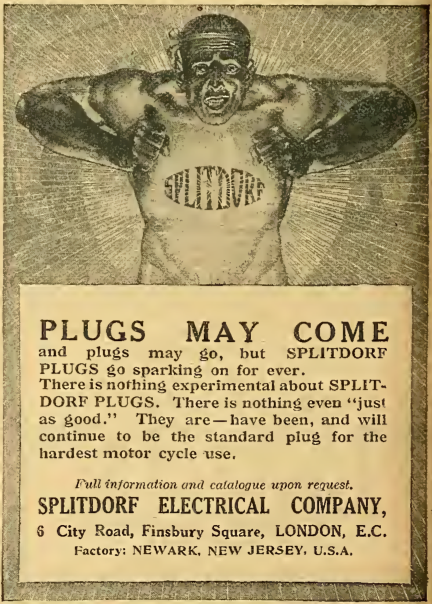
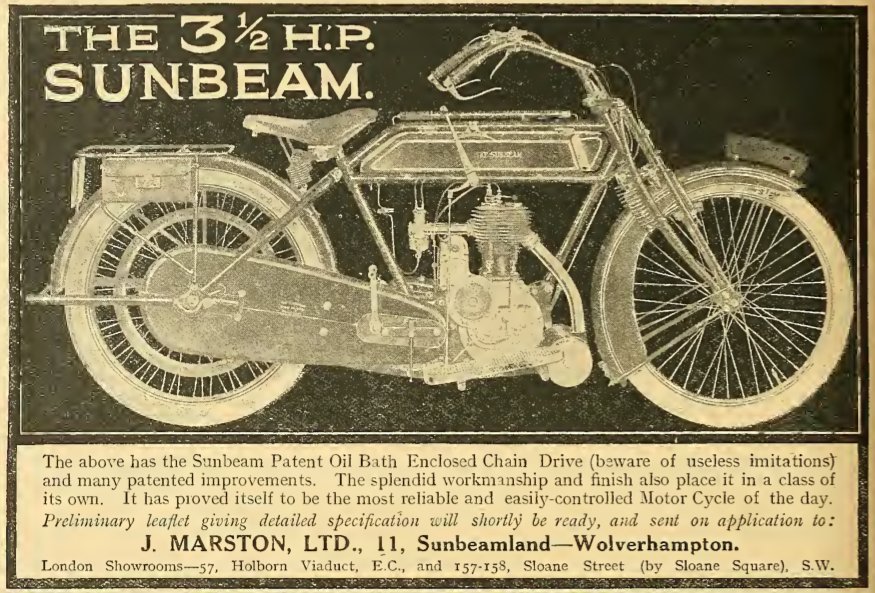
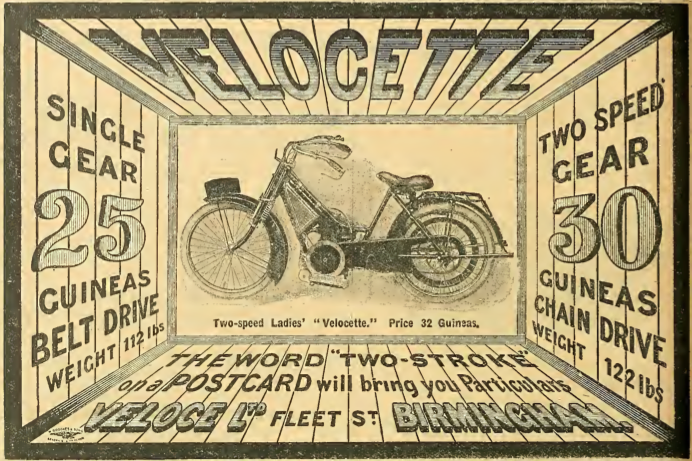

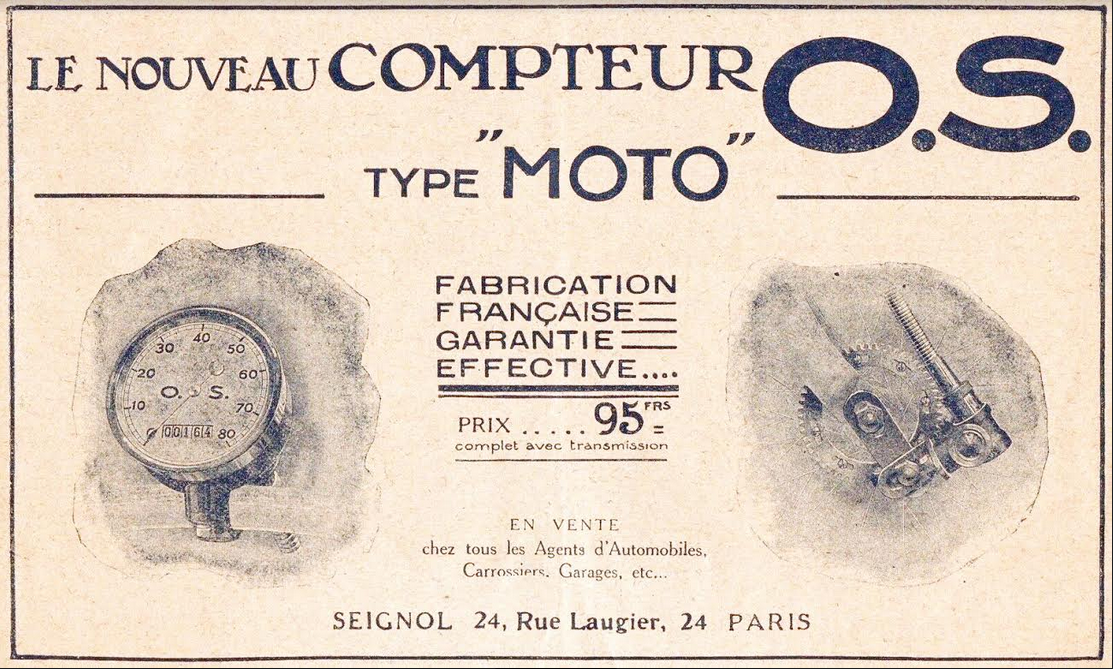
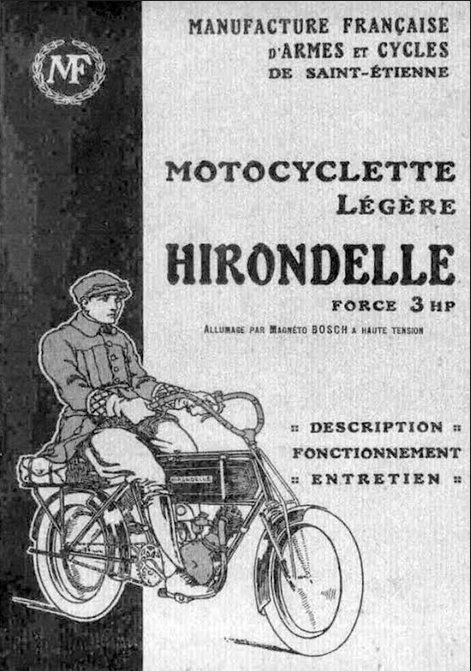
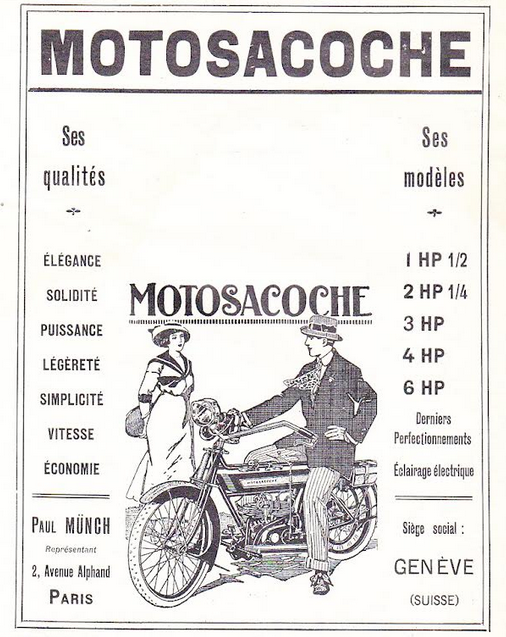
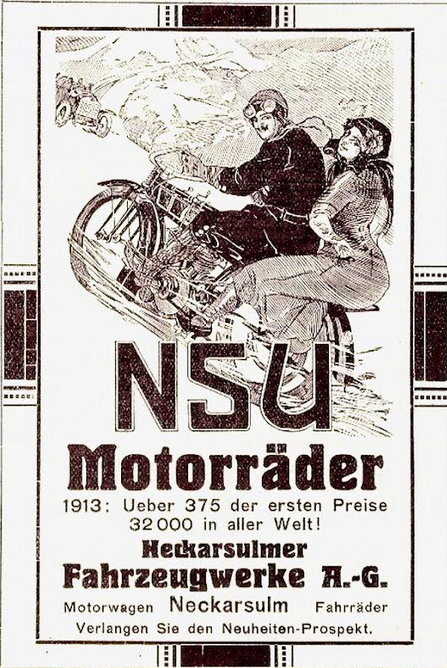
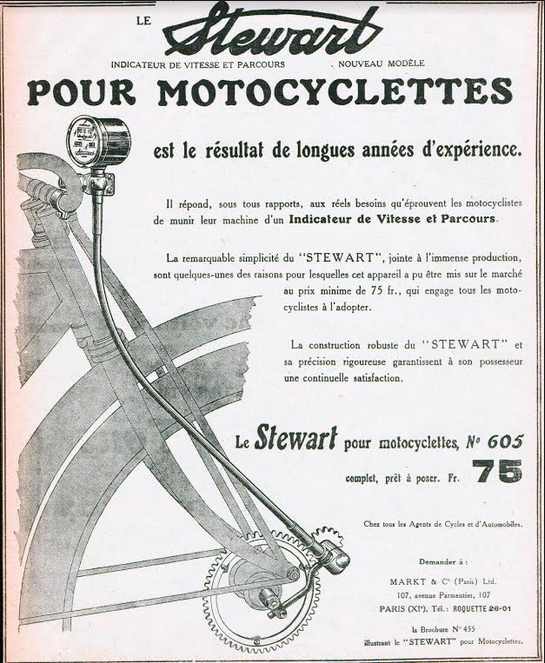
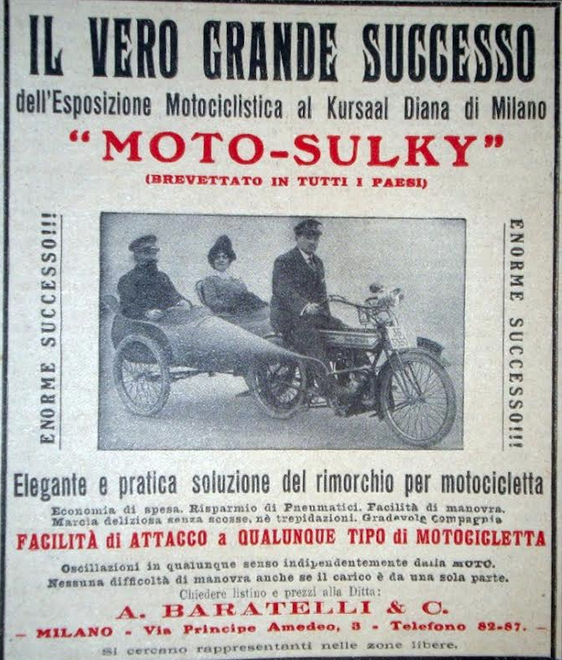
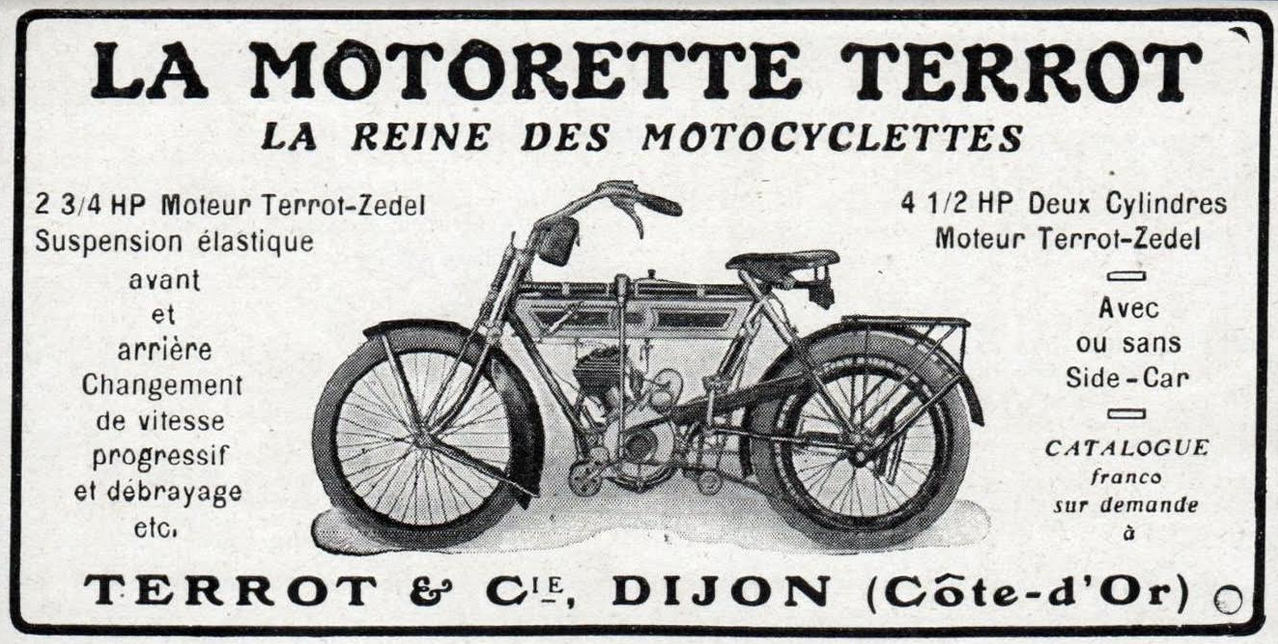
On t’other side of the Atlantic it must have seemed a long way away.

